Text
Artist Spotlight : Nobuto Suga

It will surprise no one that Studio AHEAD loves walking through the deep forests of Marin. So it was a delight to speak this month with Nobuto Suga, a Japanese-born woodworker who shares with us not only an appreciation for Northern California's forests, but a willingness to allow the natural world to influence and guide his creative work. To look at a Suga piece is to read, behind each block of wood, the tree that gave the piece its form and the landscape that gave home to the tree: "We are not separate from our natural world. Nor are we separate from each other." We were happy to speak of creative partnerships with those we cherish: in our case, Elena and Homan; with Suga and his partner Amy.
Studio AHEAD: Share with us some of your journey in arriving to California. Did you grow up here? What was your introduction to woodworking?
Nobuto Suga: I grew up in the countryside of Hiroshima, surrounded by forest and farmland. I started playing around with wood when I was sixteen. I remember one day my father brought some pieces of milled lumber home. The pieces came from trees that had been cut down on one of his landscaping sites. I was fascinated by the grain patterns in the wood and I wondered what form I could shape from the wood. I made a towel rack and some shelves, those were my first woodworking projects. They are still in my family home, and whenever I visit there, I see the living element of memory in those early pieces.
In 2000, I went to upstate New York to study ecology and gain a wider understanding of ecosystems. On a visit to the West Coast my eyes were opened by the majestic landscape of an old-growth forest. When I settled in San Francisco in 2014, I reconnected with the forests and woodworking. I have been deepening my appreciation ever since.
SA: Does the region where the tree grows affect how you work with it? Does a tree in Japan necessitate a different way of keeping its integrity than does a tree in California?
NS: Yes, absolutely. It does affect how I work. I had an opportunity to work on the edge of the coast recently under an old cypress canopy. I felt a direct connection with the surrounding elements—the wind and the rocky landscape. Connectivity to place is a very important part of my process when forming and laying out a vision and a direction. Without that connection, I can not make work. Relationship to place is extremely meaningful for me.
The most majestic tree I have ever encountered is at a Shinto shrine in Hiroshima. It’s wildly branching. The tree is covered with moss and lichen. It hosts so much life. It is a living historical artifact. Typically the trees around shrines are given the most respect in Japan. But a tree is a tree and deserves deep respect no matter where it grows.
SA: Tell us more about this respect. How does a designer go about respecting the material? Does this play into or get in the way of innovation, of using materials new ways?
NS: I’m keen on using urban salvaged and reclaimed wood to extend the life of the source elements. Understanding resources and bringing out the best characteristics of the material are very important to me. Working with resources from this perspective can help lessen our consumption flow which is excessive and problematic. It is important to build awareness and have respect for our natural environment that we depend on for life. We are not separate from our natural world. I’m fortunate to have access to urban salvaged wood and reclaimed materials in the Bay Area. I’m just one of many here who works respectfully and consciously with wood. I’m glad to be part of this community of woodworkers.
SA: You helped repair Sol LeWitt sculptures in New York. What ways do repair and creation intersect or diverge?
NS: My plan at that time was to attend a landscape architecture program, to explore physical interaction with space as a way of connecting with nature. But instead, I was fortunate to meet with a few Japanese artists who worked with Sol LeWitt for many decades. I participated in two executions of his Open Cube Structure, learning directly from a lead fabricator/artist, Kazuko Miyamoto. It was a very repetitive process, and it was pleasing to see the progress of structure and various visual effects that appeared in each step.
LeWitt’s sculptures are based on numbers, laying out a grid and a score, and the structural form emerges like a sound. The visual effects appear within the open cube from many different angles. I appreciate his vision, playfulness, endless curiosity, and openness to discoveries. LeWitt’s system of composition and application has a heavy impact on my practice.
Over time, I have developed an interest in kiwari, a traditional Japanese method of proportion or a co-relationship with each structural component. There is an underlying interconnectedness that I experience in nature, and when I make something, as I put pieces together I am always trying to respond to this feeling.
SA: Can you elaborate on this? Is this harmony of proportion what you are trying to achieve, or are you purposefully distorting these ideas of proportion to evoke certain emotions?
NS: Woodworking gives me new challenges all the time. The harmony of proportion is a starting point and a structuring principle of a concept and a process. I’m not distorting these ideas, I’m searching for the best way to accommodate the material and honor what it is offering.
SA: Your partner, Amy, is your collaborator and you've built a home, studio and practice together. Tell us about how you work together. We [Elena and Homan] are creative partners and are grateful we have each other to move through creative life together. If one of us feels unbalanced, the other brings us back or carries the baton for a while.
NS: Amy and I have been interacting and influencing each other with our creativity and sharing our appreciation for the last 15 years. She and I first met each other when we were both involved in the retrospective installation for Sol LeWitt at MASS MoCA in 2008. We had a spark and a similar appreciation of nature and have been together ever since. Our cultural backgrounds are different, but our attention to detail is the same. We’re both interested in the qualities of line and the negative space between things. And we both have a lot of respect for the untouched elements of a place or a material. We have been cultivating a shared language for the last fifteen years.
We tend to take turns supporting each other’s passions and projects. When I was pursuing ecological restoration, I assisted Amy’s art practice by helping with installation and gathering materials. Five years ago, Amy set up our family woodworking business, Suga Studio.
I enjoy and appreciate her vision, playfulness with elements, and I admire her ability to transform an indescribable emotion to visualized formations. Our practices blend with regular and creative existence in a way that gives us energy and flexibility. Pursuing the passion and our listening hearts is filling me with gratitude and compassion. Our next direction is making an even deeper connection with nature. It inspires us both to the core of our being.
Photos by Ekaterina Izmestieva
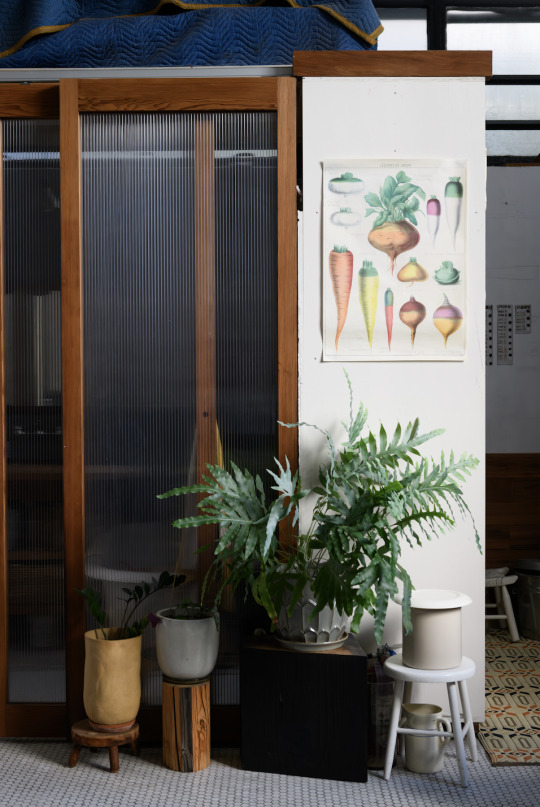



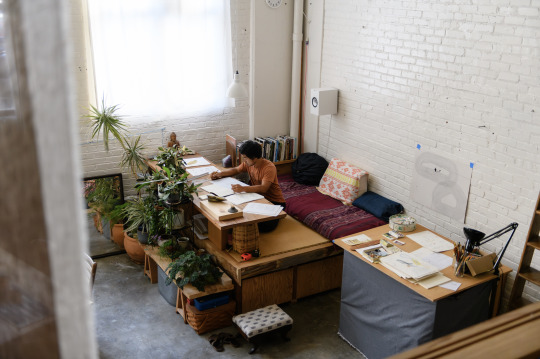




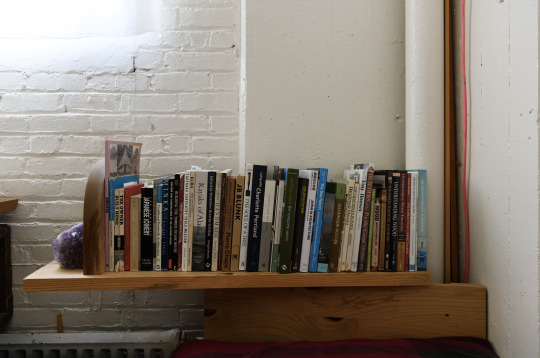
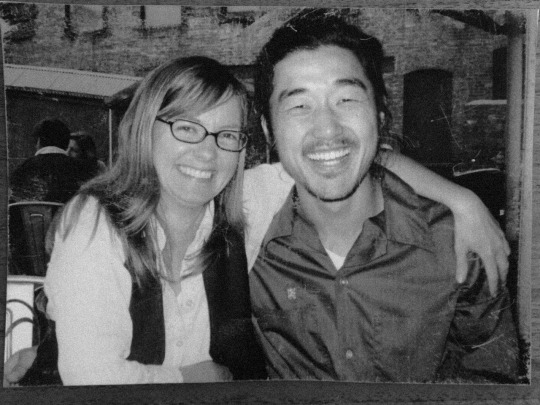
#studioahead#northern california#bayarea#studio ahead#artistspotlight#san francisco#california#interiordesign#art#nobuto suga#nobutosuga
0 notes
Text
Artist Spotlight: Jeffrey Sincich
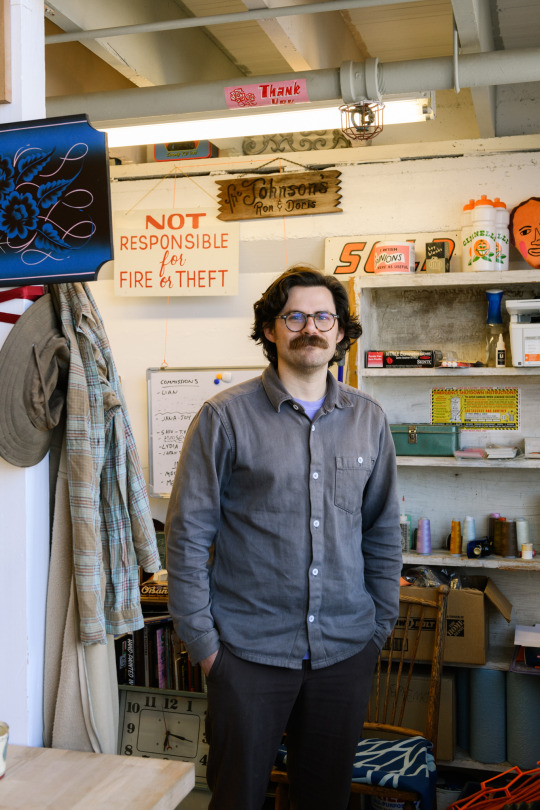
One thing that happened when listening to Jeffrey Sincich talk about his art is that Ace of Base’s 1993 hit "The Sign" kept playing in my head. This is because Sincich talks a lot about signs, particularly the ones you see walking around a city, which he replicates in quilted and mixed-medium works. Removed from their context, these signs make promises they can’t keep (FRUITS FOR 1$), intrigue and tantalize us (1 HOUR THE BEST), and provide space for gratitude (THANK YOU, THANK YOU, THANK YOU). Sincich shared his thoughts on quilting (not just for grandmothers!), what cities have what kind of signs (New York: "ghost signs high up on buildings that have been there for generations"), and how to be more cognizant of what’s around us, which leads to deeper appreciation for the hidden meanings behind all that we see. As the Swedish adage goes: “I saw the sign and it opened up my eyes."
Studio AHEAD: Your work is inspired by the built environment. Have you always lived in cities?
Jeffrey Sincich: San Francisco is the first big city that I have lived in. It is also the first one I ever visited. I grew up in suburban Florida near the Gulf of Mexico and moved to Portland, OR a little after college. Almost as soon as I moved to Portland, I became obsessed with moving to San Francisco. My first trip here was in middle school when I came to visit my uncle, who was living here at the time. Even as a kid I knew this city was special. San Francisco is so dense, and forces you to be around so many different types of people, which I love. Sharing walls and hallways with people instead of side yards makes me feel like I am part of something larger. I enjoy being one piece of the puzzle, rather than feeling like I am on my own.
Living in a city that is built to function for 800,000+ people has created so many interesting architectural details. Awnings that are connected to signs that are connected to lights that are connected to window grates that are connected to fences. I am constantly looking around and noticing how people have cobbled together materials to make things work. There is so much texture and variety in materials on every block. The inspiration is never ending. Being able to see all of this from the sidewalk versus looking at it across a front yard or from a car speeding by is priceless.
SA: You do a lot of quilting yet you are not an old woman. Please explain.
JS: Sexism in the art and craft world is nothing new. Is sewing only for women? Is welding just for men? They are both means of joining two materials together, yet they are often associated with gender. My dad taught me how to sew in high school when I wanted to make bicycle bags. I really enjoyed learning a new skill that allowed me to make an idea I had in my head a reality. I learned how to weld in college and loved it. Unfortunately, metalwork requires a lot more tools, resources and space than sewing.
I have always been interested in craft and majored in ceramics in college. I found antique quilts so beautiful and often referenced their patchwork designs in my work. It seemed like a natural step to try and make a quilt. It was years after a failed attempt at making a quilt in college that I turned on my sewing machine again. After working full time as a sign painter for about five years, I wanted to start making art again. I decided to try making a quilt, this time inspired by the architecture I loved so much and got to paint signs on. A couple years and quilts later, COVID hit and I decided to turn my love of hand painted signs and lettering into quilts. It has been my focus ever since.
SA: A quilt is domestic. One thinks of fireplaces, interiors. I am particularly intrigued by your quilted works that represent outdoor spaces: street signs, façades, ads. Could you speak about this contrast?
JS: Signs can be personal. They are used to guide, inform, warn and sometimes manipulate you. Quilts are made to warm and comfort you. They often become hand-me-downs and keepsakes. They get worn down and are mended, holding family history. The same things can be true of signs. They fade and are touched up, sometimes professionally and sometimes not. Businesses can pass through different owners but still keep the same signs that have been up for generations. I like to reference the signs that have been cared for, or at least been maintained enough, to get a message across. Quilting objects from signs around the city like Clorox bleach and Marlboro cigarettes is my way of archiving the everyday items we often take for granted. I think that seeing these items as quilts makes them approachable in a more personal way.
SA: Are the window grates in front of your pieces like “All Makes & Models” or “Milk Beer” a comment on urban malaise?
JS: Yes and no. Window grates serve multiple functions. On one hand they are meant to keep people out. On the other they attract people with their beauty. I find this dichotomy of push and pull fascinating. The twists and curves that are used in the designs are gorgeous. Oftentimes they have hearts and sometimes the owner’s surname in them. They blend in with the architecture, filling asymmetrical voids and entryways. They cast beautiful shadows at night. The care and attention to detail put into the creation of these is amazing. That being said, they also serve to protect and evoke a sense of danger. They say look at me, but don’t you dare try to cross me.
I look forward to seeing these window grates every single day, on every block and on nearly every house. Their patterns are unique to San Francisco. I love adding a new design into my mental data bank. When I’m in other cities, I enjoy seeing what type of designs they use and how they are unique to that city's vernacular.
SA: What are some of your city-sign associations when in other cities? As a culture we tend to associate Las Vegas with neon, Paris with Guimard’s “Metropolitain,” New York with the colored circles of its subway…
JS: Cities can have unique sign styles, but more so individual neighborhoods. San Francisco’s Chinatown has many beautiful gold leaf window signs, often for family associations. The Mission has tons of beautifully stylized illustrations of the products sold in the storefronts. North Beach has giant, glowing neon signs outside the old strip clubs, begging you to come in. Los Angeles has endless hand painted signs, often in yellow, white, black, red and blue. They are faded by the relentless sun, showing off every brushstroke used to paint them. New York has ghost signs high up on buildings that have been there for generations, right next to freshly painted five story advertisements. These painted billboards still thrive in New York. The south has painted plywood highway signs that are barely holding on, advertising fresh oranges or alligator farms. It is really special to be able to walk around cities and see what old signs are still there, discovering which parts of their culture have stayed intact or have been left by the wayside.
SA: When you do step out of the city, where do you go?
JS: I go to West Marin. I don’t think there is a more beautiful natural place. It can bring me so much peace; the coastline, the rolling hills, the eucalyptus forests. Swimming in Tomales Bay is as close to swimming in Florida as it gets around here. It is beautiful in all types of weather: sunny, foggy and rainy. My favorite place is the Steep Ravine Cabins in Mount Tamalpais State Park. They have been around since 1938, and Dorothea Lange used to spend summers there with her family. They are these perfectly designed redwood structures that sit on the bottom of a cliff overlooking the ocean. I feel like I am in another world when I stay there, even though it’s just an hour away from my home. I have never been to an area that gives me this type of feeling, I love it.
SA: Is nature a type of sign?
JS: It can be. Sometimes it tells me to slow down and reminds me not to take things for granted. It is a reminder to try to stay out of the rat race more often. It can put me in a state of awe at how beautiful this world can be. But the one thing it always does is remind me that I can’t wait to get back to the city.
SA: Lastly, OPEN or CLOSED?
JS: Open, 24 Hours.
Photos by Ekaterina Izmestieva
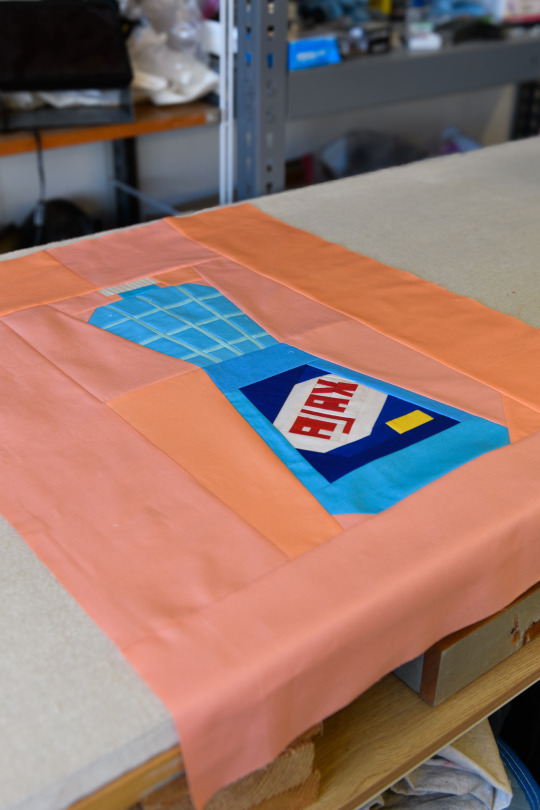
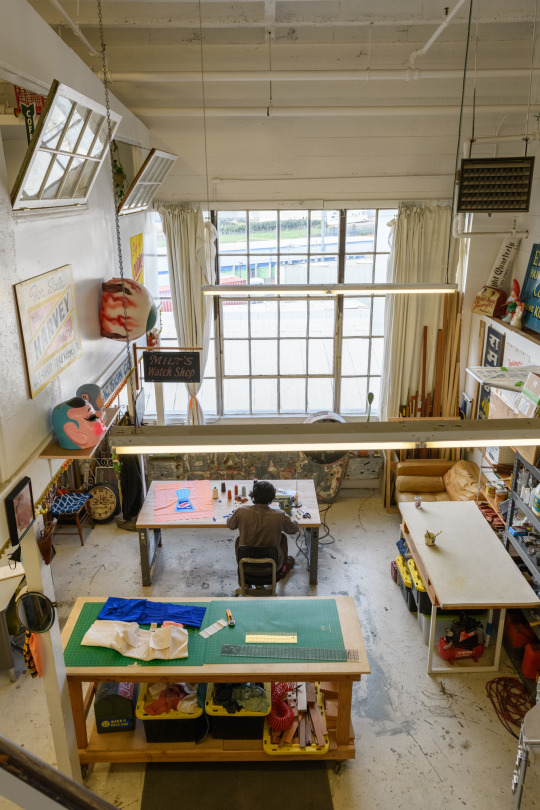
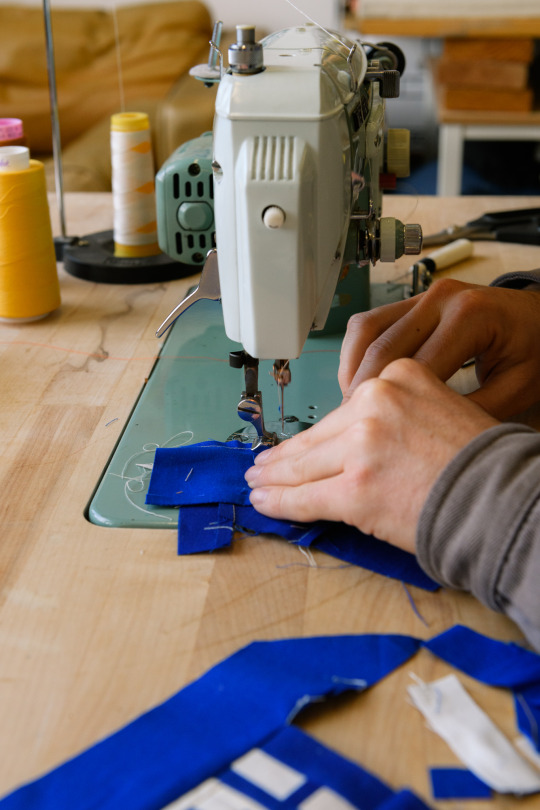
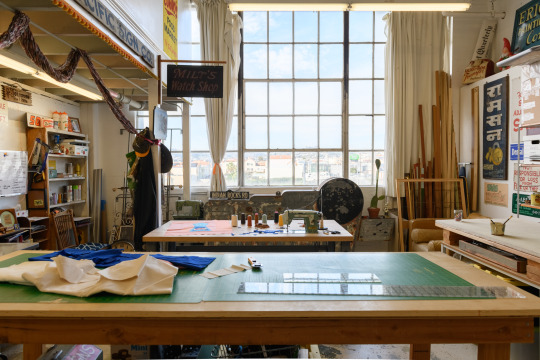
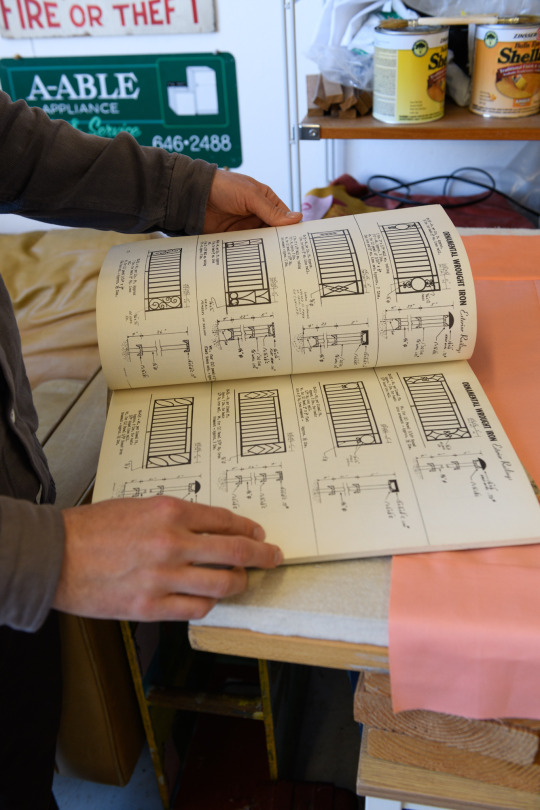
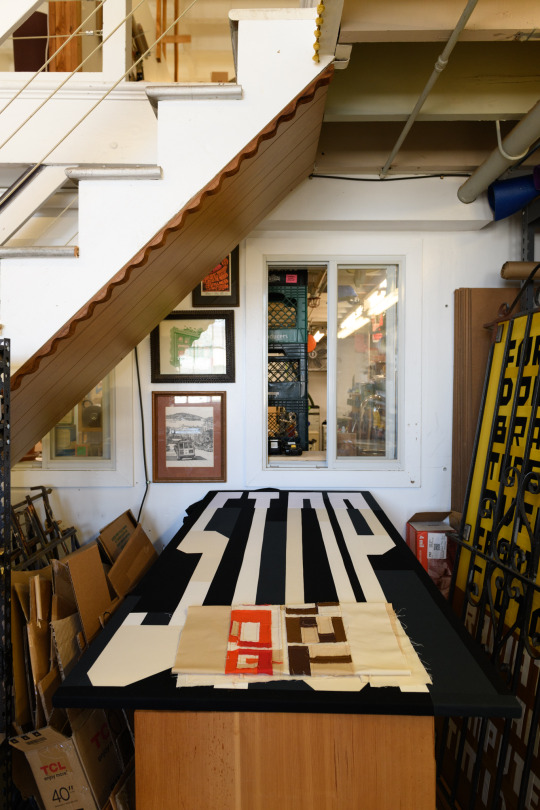
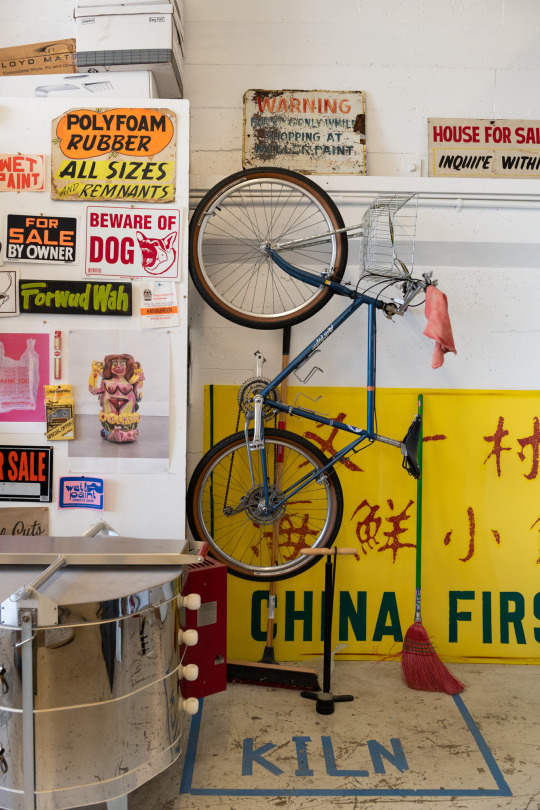

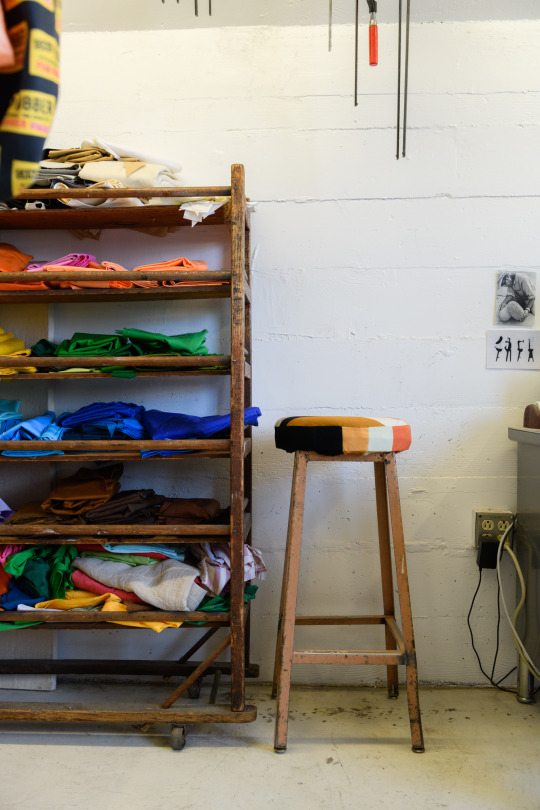
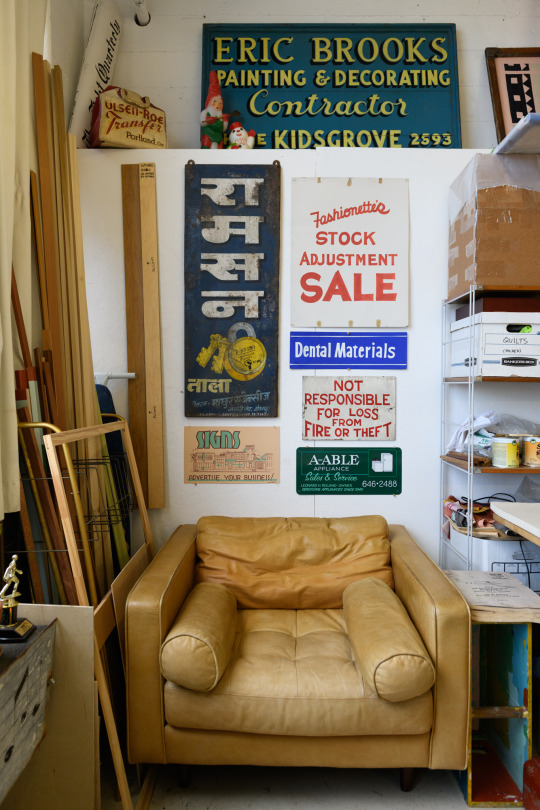
#studioahead#northern california#bayarea#studio ahead#artistspotlight#san francisco#art#Jeffrey Sincich
0 notes
Text
Artist Spotlight: Ted McCann
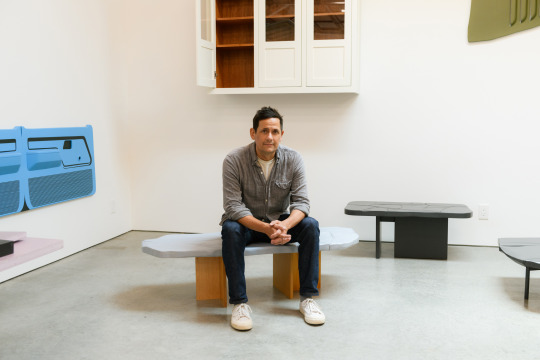
This month we spoke with artist and craftsman Ted McCann, whose musings on landscape and memory might be described as dreamy—but the sort of dream you have right before you wake to a startling moment of insight. Before moving to Petaluma from New York, McCann started a “California file of inspiration”—photos of regional trees, textiles, clayworks—to ease himself into his new surroundings. As much as we love this idea, we love even more the new surroundings themselves, with his home-studio at the center. We’re excited to share his wonderful journey, his reflections on art and Self, and his wise quips: “A home is a series of moments that you will encounter again and again and again.”
Studio AHEAD: I think we must start with your beautiful ranch in Petaluma, which you designed. Did working on your own home change the way you approach working on the homes of others?
Ted McCann: This house was such a great transitional vehicle for me, coming from the East Coast. In New York, I worked primarily on prewar apartments and townhouses, tuning into that period and finding ways to merge the old with the new. Similarly, our goal for the Petaluma house was to honor its original bones while giving it new life with more light, more openness, and unexpected materials and choices that all the same felt organic and inevitable.
So, my design approach has remained consistent, but working on a midcentury house required me to learn a whole new design vocabulary. Fortunately, I had plenty of time, as we bought the house and rented it out for two years before moving to Petaluma.
During that time, I started a California file of inspiration. I gathered images that spoke to how I wanted to live—everything from trees and plants, to textiles and rugs, to tiles and wood. They got me dreaming about the future and excited to make the move. One image in particular that I remember was of interior work by Charles de Lisle at the William Wurster Ranch, which like mine had lots of mahogany and painted brick. Realizing I would need to be drawing from an entirely new vocabulary, I pretty much threw out all my go-to New York Prewar sample materials and started over.
When we arrived in Petaluma, the first thing I did was rip out the old shag wall-to-wall carpet, brass chandeliers, and over the calico brick fireplace. By stripping out all of those things, I could see the future. It didn’t feel that far off. But it was. The house hadn’t been touched since 1955, and there was an overwhelming amount of work for one person. Still these images kept me excited for what was to come and helped guide me through the entire two-year renovation.
The whole experience taught me the importance of a guiding vision. Now, when I’m approached for a commission I always like to start the conversation through images. I encourage people to
share whatever it is that they love, whether it’s architecture, design, art, or cinema, music, or whatever! This conversation continues until we find a vision that we’re both excited about.
Another thing I learned from working on my own house is to push people to expect more. A home is a series of moments that you will encounter again and again and again. Why not make the most of those moments? Expect more from your kitchen or study or especially, for God’s sake, your powder room!
My favorite place is my shower. It’s the heated floor, the combination of color, light and materials. It’s a real sensory experience that surprises me again and again, every day.
In my woodworking, I try to make things with the same potential to please. Sometimes it’s the smallest of details that can do this—a tweak on typical proportions, an evocative color, or a satisfying handle. Working on my home deepened my belief in better living though art and thoughtful design. I like to think that through my work I can share that with others.
Studio AHEAD: With that answer you are also a poet. I’m curious if there is a line between your furniture design and your art—if you think before you start this is going to be art or this is going to be furniture or you start one but realize it might be better as the other, and what might trigger that response.
Ted McCann: I’ll start by saying, Yes, I do always know at the outset whether I’m going to create a functional piece of furniture or cabinetry, or a sculpture. With my woodworking commissions there is a clear intention from the outset; I know I’m building a table or a bench. But my approach to art is super intuitive; the work tends to reveal what it wants to be as I go along. Either way, the line between art and design is often at play in my work.
I lived in New York City for twenty years before moving west. And in those years, I lived a compartmentalized existence. I had a studio where I made art, and a woodshop where I built cabinetry for the spaces I was renovating through my boutique contracting business. At that time, my professional work was focused on execution. Often, I wasn’t artistically invested in the projects. I didn’t know how to merge my two identities as woodworker and sculptor.
I think living this bifurcated existence, and never having enough time to focus on my personal work made me unhappier than I realized, and that came out in the art I was making during these years. I didn’t see it then, but what I was making for myself in the studio at that time really reflected the friction and discontent that can come to a practical, responsible, but unfulfilled person.
It's crazy looking back how that discontent was right on the surface of my work. I did a series of self-portrait paintings that just showed my eyes, peering out from a cutout in a discarded refrigerator box. They were self-portraits that I think reflected how I felt somewhat invisible and also trapped in an urban landscape. In the same period, I made a series of “personal survival units” that seemed fitting for use on the Antarctic or the moon. One sculpture you wore on your back; it contained a personal surrender flag to be deployed as needed. Another was a portable tripod beacon that sent out a flashing light and the sub base notes of a Keith Sweat song, luring a stranger to the source, where they would find an always warm cup of coffee. Another series of paintings were monochrome panels in bright autobody lacquer, with the dits and dahs of morse code extruded across the surface. These paintings also tapped into a romantic, existential longing. The code spelled out wistful phrases like “remember me” from Henry Purcell’s Dido and Aeneas and “perfect summer,” a headline from a fashion magazine editorial. These personal works were completely at odds with the impersonal jobs I was executing in my woodshop.
Happily, I’ve come to understand the importance of approaching commissioned projects from a more sculptural or artistic sensibility than I did in the past. These days, I still make my living building for others, but everything that leaves my studio—from paintings and sculptures to entirely functional furniture and cabinetry—reflects my sensibility in some way. My studio goes though waves of time focused on a kitchen or library commission and back to more personal art projects. But often, the commissioned works are in strong dialogue with my artwork and are better for it. In the end, all of my work ends up feeling like mine because it employs the same level of finish and craftsmanship.
This is only possible because I’m more selective about the jobs I take on than I once was. It can be scary to pass up paid work, but I’ve realized that by saying no to jobs that don’t speak to my soul, I’m opening myself and my time up to projects that do.
I know you didn’t ask for that backstory, but there it is.
Studio AHEAD: No, we love a backstory. There is always a backstory to every object, design, taste. We want to give voice to that. Actually, tell us more of your backstory. You grew up in New York and Barcelona, or what we might call the Far East and the Further East. How did you make it out West?
Ted McCann: I always thought I’d get back to Spain to live with my family one day, but never did. Still, I’m writing to you on a plane to Madrid. It seems all my stories about my teenage years in Barcelona planted a seed with my son, who is now spending a high school year abroad in Zaragoza.
Some people are forever New Yorkers. As much as I love that city, turns out I wasn’t. Every weekend, my wife and I would schlep our two young sons and all of their stuff from our Brooklyn apartment to the North Fork of Long Island, where we had a cottage. We lived out of tote bags and were eternally packing and unpacking groceries. Between my studio in Queens, jobs all over Manhattan, and the Brooklyn to Long Island commute, it was all so hectic. Not to mention that half my brain was always trying to remember where I’d parked the car.
One day I was with my family on vacation and we stopped in Petaluma for a delicious sandwich at a downtown spot called Della Fattoria. I loved the Wild West downtown combined with the somewhat gritty industrial grain silos and the fact that every road led to beautiful rolling gold hills. And I don’t know if other asthmatics are like me, but I love breathing in hot, dry air. We left thinking, Maybe Petaluma? With help from my father-in-law, who lives in nearby Glen Ellen, we eventually found and bought a Petaluma midcentury house. This place, where we could live, work, and be in nature all at once, seemed like the antidote to our scattered New York life. But we weren’t yet ready to leave the city, so we rented out the house, knowing it was there for us when the time felt right.
Two years later, I left my work and all my clients behind and started my career from scratch. My wife, Genevieve Field, is a writer, so her career was much more portable, thankfully. This afforded me time to renovate our home and build our dream studios on our property. This project was the slow transition I needed to process a life-changing move.
Studio AHEAD: Now that you are here, what role do ideas of place have in what you create? In your approach to craft?
Ted McCann: I never thought about my living space in such poetic terms as I do now. I’m sure my contemplative state has something to do with middle age, but this beautiful and quiet place also plays its part. Sonoma County and the Marin coast are so dramatic, it’s hard not to be affected. Every time I go to San Francisco, I look forward to the drive back over the Big Red Bridge and—poof!—I’m passing Mt. Tamalpias.
There’s such a fluid conversation between humans and nature, indoors and outdoors, in California that never really stops. Our mild winters mean nature is accessible and comfortable year-round. I love the rolling green hills in winter, and the hot summer days eased by the cool nights. The climate still feels foreign to me, but in a good way, like listening to a poem that you don’t really understand but it doesn’t matter because the words and rhythms just sound good.
I’ve always thought sculpture and poetry shared a language—both use shape and texture to elicit feeling. My father-in-law, John Field, is a poet. He writes beautifully about getting older, and while I don’t always understand his poems, I know how they make me feel. The language of
aging is also present in the drama of the coast—the wind-whipped eucalyptuses and shifting cliffs.... Living here, I’ve become more attuned to the sensory elements of living spaces. This is something I think Studio AHEAD is really good at: creating poetic, sculptural, atmospheric places.
I’ve always found inspiration in found objects. Living in New York, I used to photograph and collect things I encountered on the streets. These days, I have to go to the Pick n Pull salvage yard and pay for my inspiring junk. At the beach, I’m always looking for and collecting flotsam and jetsam, which are also scarcer here. Bruno Munari made The Sea as Craftsman, a small book of writings and pictures of bits of rope and things that he found washed up. I love his concept of the sea as carpenter: manmade objects that make their way into the sea are reshaped, polished, and returned abstracted from what they once were. I have an ongoing series of sculptures where I enlarge the scale of plastic objects I find on the beach, carve them out of wood, and paint them black. On one hand, these pieces are simply shapes that move me, but I think they’re really about the transformative power of nature over all things.
Studio AHEAD: What are some of your favorite places here? And what is one place you miss in New York?
Ted McCann: I’ve run hundreds of miles in the rolling hills of Helen Putnam Park, and it feels like church most every time.
The Marin coast is something else. Just driving there is good therapy: Bodega Avenue is stunning all the way to the coast.
Another driving moment: there’s a section of Stage Gulch Road between Petaluma and Sonoma that gets me every time. Especially when the yellow mustard fields are in bloom. I feel so lucky to be able to enjoy these “spaces in between.”
And if I can mention one more, I’m super excited about the Petaluma River Park, where I’m a volunteer. It’s a new 24-acre space that’s just getting its start. A Mark di Suvero sculpture installed in October has really created a sense of place.
Every time I go back to New York, I worry it will break my heart to leave again. But the city is constantly changing and I have a hard time connecting with the place where I spent my twenties and thirties. I still love it though. I always pop my head into the bar where I met my wife, Sweet and Vicious on Spring Street near the Bowery. It was the exact location where my life changed.
Another place that I love and few people seem to know about is the Nevelson Chapel in Midtown Manhattan, created by the late artist Louise Nevelson. Stepping out of the chaos of
Midtown into the quiet and often empty room in Saint Peter’s Church feels like going to the source of it all.
But the place I miss most is a series of places. I often ran at night when I lived in New York. From Clinton Hill, Brooklyn, I’d run across the Brooklyn Bridge, past the Supreme Court Building, up through Chinatown and the Lower East Side, then back home via the Williamsburg Bridge. The streets would finally be quiet and the buildings lit up. It was a rare time when New York was at rest and I felt I had it all to myself.
Photos by Ekaterina Izmestieva
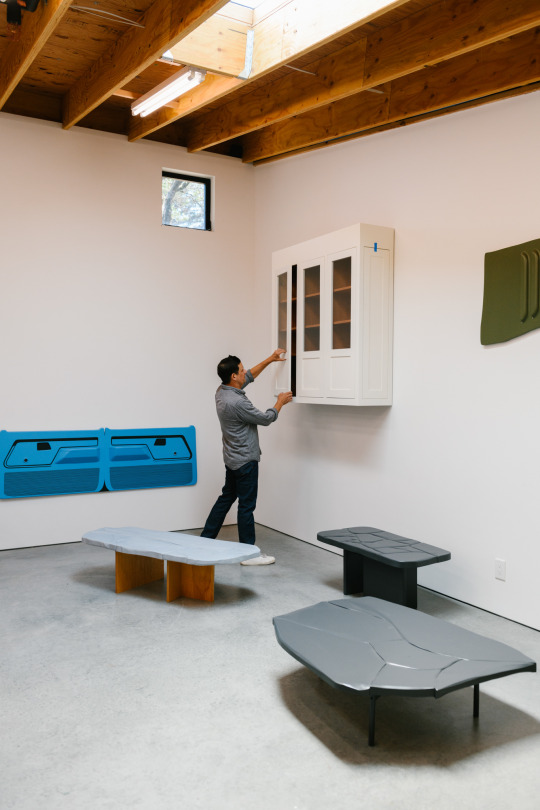
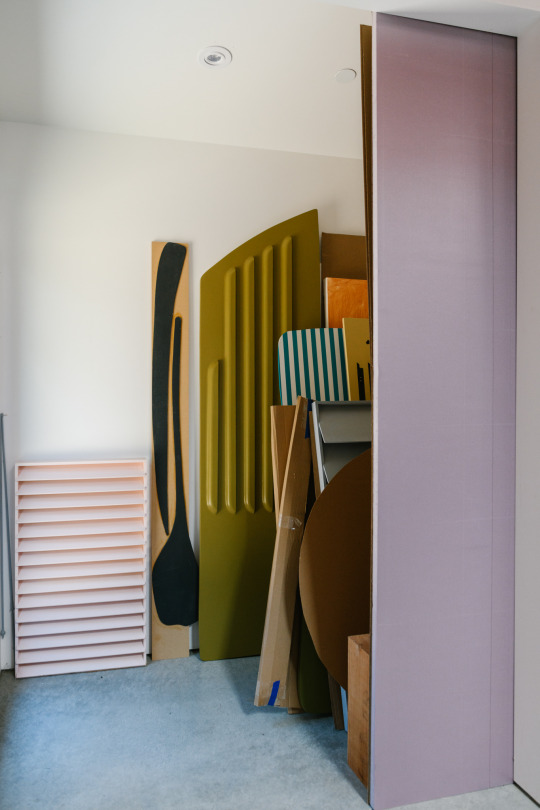
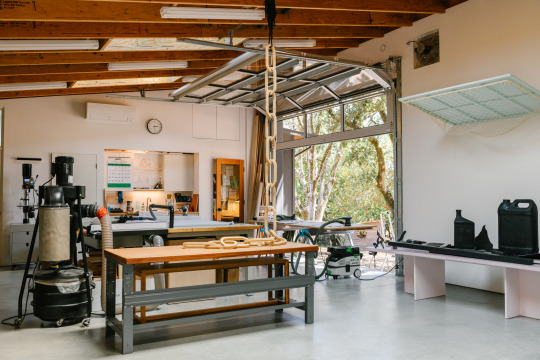
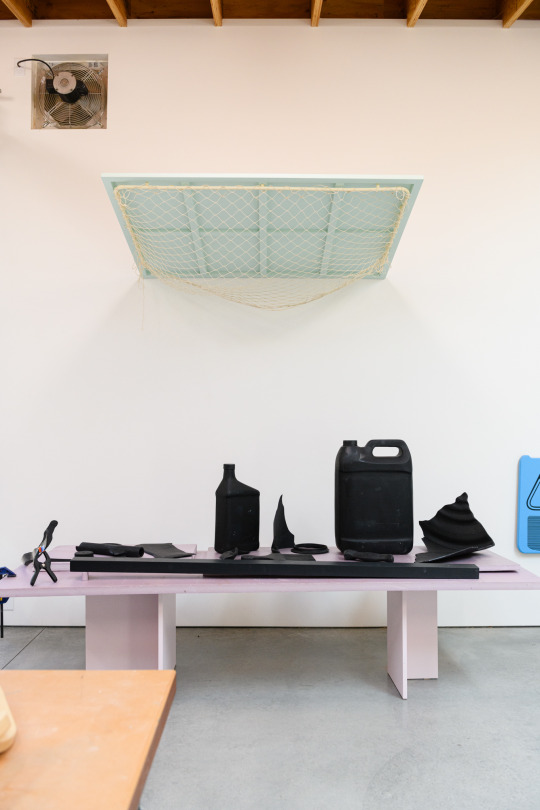
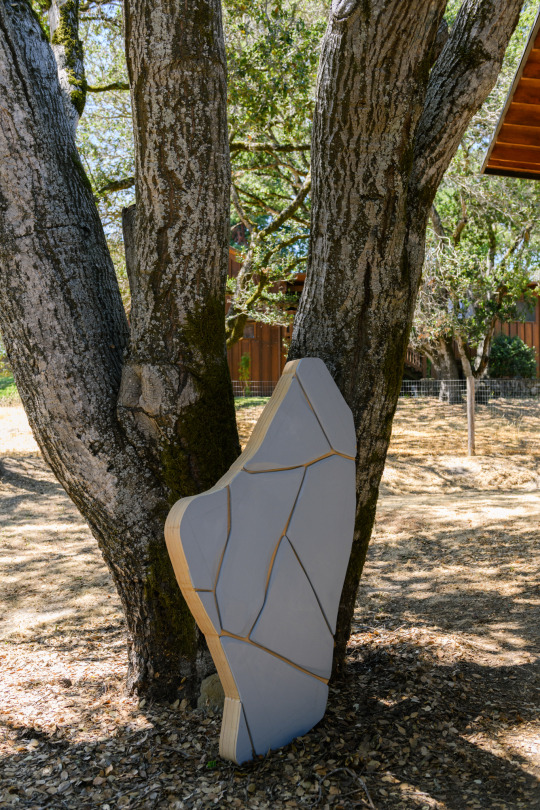

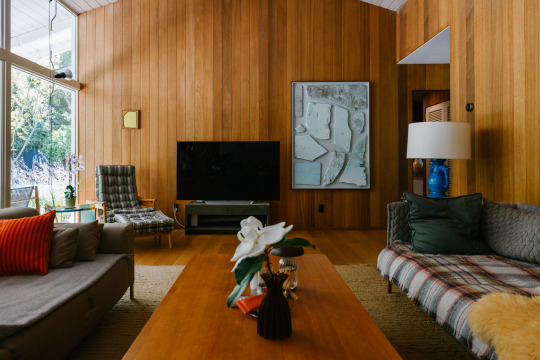

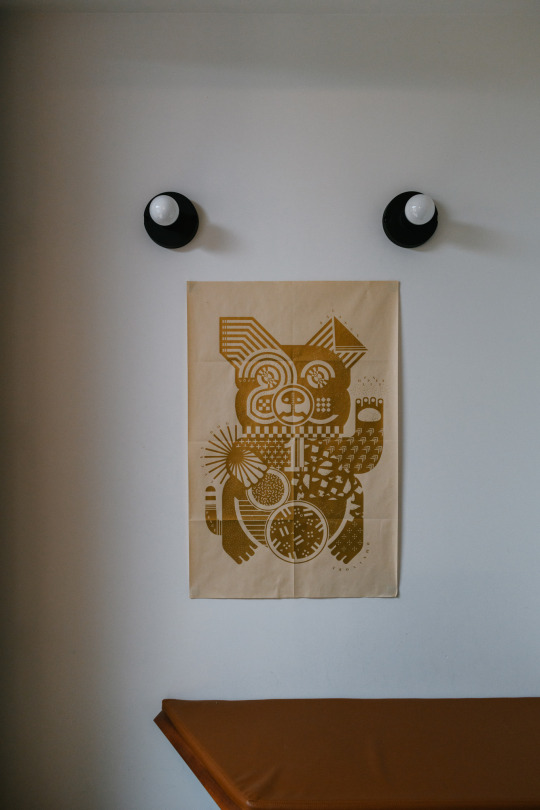
0 notes
Text
Curator Spotlight: Natasha Boas

We’re ringing in the new year with a firecracker: one of our most hilarious, crazy features ever, an interview with Natasha Boas, whose sparkling wit is matched only by her taste in literature and chairs. You’ll have to read below to understand, but we’ll say now that this is a woman who was once Jacques Derrida's student and sat on his kitchen chairs in his apartment in Paris. A conversation with Boas, an independent scholar and curator (and thinker), had us traipsing all over the noosphere and our own backyard in San Francisco, where she became our tour guide to the hidden currents of a city we thought we knew well.
Studio AHEAD: In your home you have several towers of precariously stacked books. We’re going to name a few and would like you tell us the perfect chair/sofa/magic carpet on which to read them:
La honte (Annie Ernaux)
Natasha Boas: I have always been a huge fan of Ernaux’s and have read everything she has written in French, and then in 2022 she received the Nobel Prize in Literature so her novels are finally more available in English. La honte is about the shame a young woman experiences about her childhood and the woman she becomes. It’s autofiction, one of my favorite genres. I think I would suggest reading La honte on any Madame Récamier daybed—perhaps specifically on my antique nineteenth-century French iron folding bed. I grew up with it as my childhood bed and it has tiny wheels—when we once had an earthquake in San Francisco in the 1970s, I remember waking up having rolled across by bedroom from the garden corner to my fireplace.
SA: Specters of Marx (Jacques Derrida)
NB: For Derrida, the spirit or “ghost” of Marx was even more relevant after the fall of the Berlin Wall in 1989. This essay was the plenary address of "Whither Marxism?," a conference on the future of Marxism held at the University of California, Riverside in 1993. Derrida was my professor in Paris and a very modest man who would have wanted us to read his book on a simple kitchen chair—perhaps a Charlotte Perriand Bausch chair from the 50s that came secondhand with his humble apartment—where the caning is damaged and used and it is broken and somewhat imbalanced.
SA: Three Essays on the Theory of Sexuality (Sigmund Freud)
NB: This book contains the iconic essay in which Freud reveals his famous Oedipal theory among other things. It should be read in your mother’s lap—haha! No, it should be read on Freud’s divan couch of course! It may be the most famous couch in history and can be admired in Freud’s study in London at The Freud Museum at 20 Maresfield Gardens in the Hampstead neighborhood. The term “on the couch” became the euphemism for what psychiatrists do because of this very couch shaped like a chaise long with a Persian rug laid over it. Of course, I contributed to a fundraiser launched in 2013 to help reupholster the legendary couch. It seemed very important to me at the time.
SA: Leonora Carrington: The Story of the Last Egg (Leonora Carrington)
NB: This book is the accompanying catalogue to Gallery Wendi Norris’s 2019 exhibition of the same name in New York City. In addition to the show, the gallery hosted a two-day symposium on Carrington. It began with a dramatic reading of Leonora's play, titled Opus Siniestrus: The Story of the Last Egg, which in many ways predicts the dystopian situation of women’s reproductive rights today. My talk “The Leonora Carrington Effect: What We Can Learn from Leonora Carrington Today” became an essay for the book.
These ideas on the relevance of Carrington today resonated a year later at the Venice Biennale “Milk of Dreams” with its focus on Carrington and other historic Surrealist women artists. I wrote my dissertation years ago on this seminal modernist movement in art, which continues to influence my work. Currently, I have curated the exhibition on the post-Surrealist Gertrud Parker: The Possible at Marin MOCA, which includes Leonora Carrington, Leonor Fini, Alice Rahon and other influential Surrealist women. It is up through March 31 and I highly recommend a visit. It also features the famous Dynaton artists Luchita Hurtado, Wolfgang Paalen, and Gordon Onslow Ford, who convened in Inverness in west Marin County last century.
I think I would read The Story of the Egg on the bed that the Surrealist artist Max Ernst made for his wife, the artist Dorothea Tanning. It is said that she hated the bed and hid it out of view in the basement of their Provence house, but it is currently being shown on the top floor at a small regional Max Ernst museum in Seillans, near my family house in the Var, Cote d’Azur region. It’s a bizarre six-post structure with a mirror, green metal leaves, a faux brown fur bedspread and several circular paintings attached to it—but seems like the perfect bed for lounging on to read this provocative book.
SA: You are an expert on countercultures and in particular the Mission School. Is there anything you have learned from them—whether related to art or not—that you apply to how you interact, live in, go about San Francisco? This is of course a movement whose members reimagined what was around them.
NB: Yes, I have always been drawn to countercultures, alternative art movements, and under-recognized artists. What drew me to the Mission School artists was that it was an “affective” community—one based on shared sensitivities, a shared neighborhood, and friendships. Graffiti, studio painting and the San Francisco Art Institute were touch points for the group. In many ways I see this group of artists as a continuation of another SFAI group, the Rat Bastards Protective Association with Jay deFeo, Bruce and Jean Conner, Manuel Neri, and others. In fact, Ruby Neri, Manuel’s daughter, who was raised in Inverness and educated at SFAI, literally connects the two movements. I learned that there can be a correlation between street art and studio practice through her, Barry McGee, Alicia McCarthy, Chris Johanson, and Margaret Kilgallen.
These artists were not precious, they used simple materials often culled from garbage found in the city and they always included their friends’ work in their exhibitions, and they still do. That is very much the “Bay Way” of making art. It has influenced my way of curating too. I am not afraid of the heteroclitic or telling new stories. I just curated a show this fall: “Old Friends/New Friends” at Creativity Explored, which is a studio that supports neurodiverse artists or what we used to refer to in art history as “outsider artists” and the expanded Mission school artist community.
I grew up in SF in the 1970s. I even lived at the now defunct radical artist colony The Farm founded by the conceptual artist Bonnie Ora Sherk under what was then Army Street overpass and now Cesar Chavez. I worked at the Café Trieste in North Beach as a barista and served the likes of Allen Ginsburg. I read my poetry at City Lights Book Store and saw the Dead Kennedys perform at The Mabuhay Gardens. We were around when Harvey Milk was assassinated and when SFMOMA was on the fourth floor of the War Memorial Veterans building on Van Ness Avenue. This group of Mission School artists are my generation. We vibe on the same San Francisco history.
SA: I am curious as to what happens in your curation when you bring institutional outsiders inside the institution. Perhaps nothing happens. Perhaps it changes everything. Perhaps it ruins everything.
NB: In my experience—magic happens. But I have always taken risks—like bringing a trailer, which I bought with the Indigenous artist Brad Kahlhamer at an Arizona swap meet for a hundred dollars, into a museum gallery to create a nomadic studio space. We had to fumigate the trailer to make it museum compliant and we built out a proscenium so we could also use it as a stage for local Native performances. The exhibition was appropriately entitled SWAP MEET and played on all the valences of cultural exchange.
SA: You speak so much about San Francisco’s history, and so much has changed, that I wonder if counterculture is still possible in this city?
NB: Yes—it is always possible especially in our city with its cyclical history of boom and bust! There is always some kind of counterculture operating. We just need to ask “which culture is counterculture countering?” and then we can identify it. And we should always be brave enough to counter culture through the sub, the underground, the transversal. I just participated in a show at the Palais de Tokyo in Paris called The Termite Bites and it looked at artists who are practicing—literally and figuratively—below ground.
SA: We always ask the person interviewed how they came to California. We’ll pose this question to you with a twist. How did you come to California? And can you trace the history of how one piece of artwork that you own came into your possession here in California?
NB: My family came to SF from France in the late 1960s as part of a larger movement of young people seeking alternative lifestyles and new ideas—I was raised in a vibrant multicultural city and went to a French lycée and roamed freely around town on Muni. Later, I moved east for college and then lived and worked as a curator and professor in New York and Paris for over 20 years, when I returned back to the Bay to raise my family.
Most of my collection is from artists I have worked closely with over the years in all three places—either gifted or swapped. I am particularly attached to an Etel Adnan (1925-2021) Mount Tamalpais artwork I have from my time working with her in Paris. Adnan—who was born in Beirut, Lebanon, died in Paris, and lived an important part of her life with her life companion, the artist Simone Fattal in Sausalito—is a transnational link for me between my two homes and two cultures—in her case three cultures. Her poems and drawings in the book Journey to Mount Tamalpais speak to me the most; it has been re-edited recently by my friend Omar Berrada.
SA: Lastly, in the spirit of Guy Debord and the Situationists, if you were doing a dérive-style walk around San Francisco, where might it take you?
NB: My dérive would always lead me back to the Lyon street steps at Broadway. My friend Marc Zegans just published a book of poems about this important passage way in the city. Our SF was more of a village, pre-tech booms. I grew up and went to high school in Presidio Heights. It was very sleepy. We lived on those steps as teens, overlooking the bridge. We had our first kisses there, smoked our first joints, played the guitar, the city was ours.
Photos by Ekaterina Izmestieva
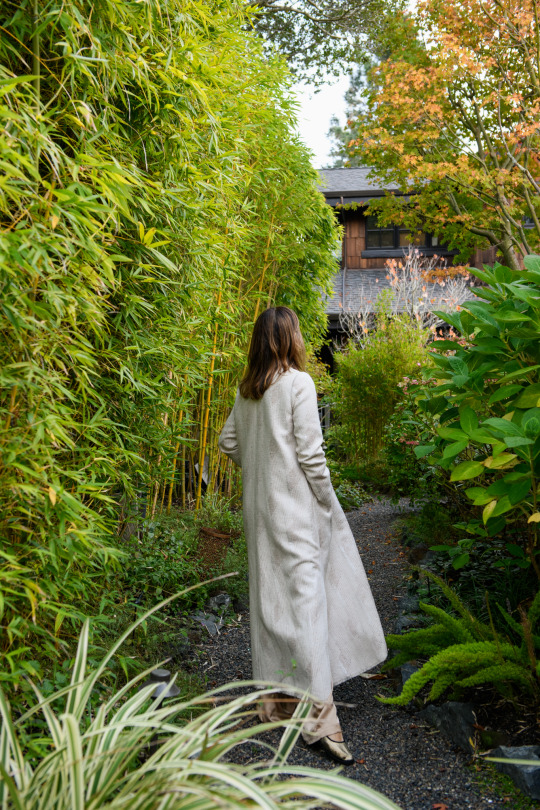

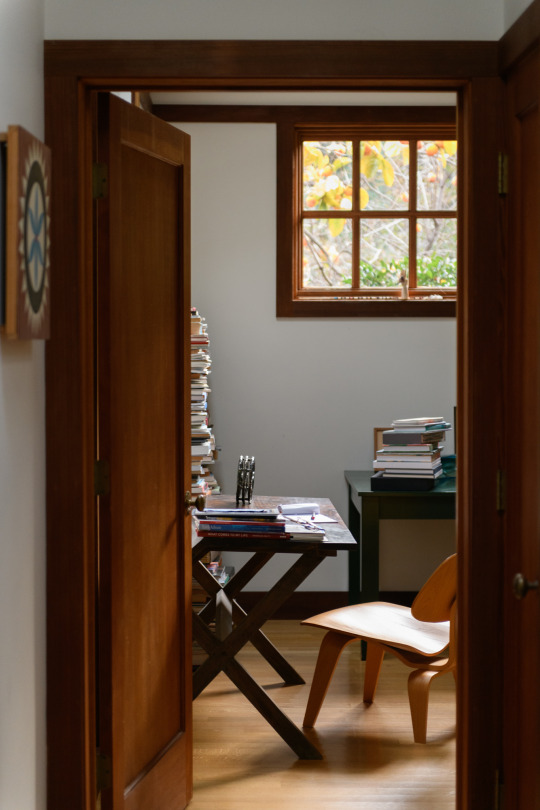
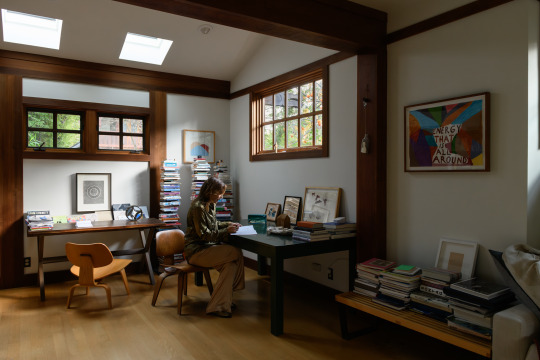

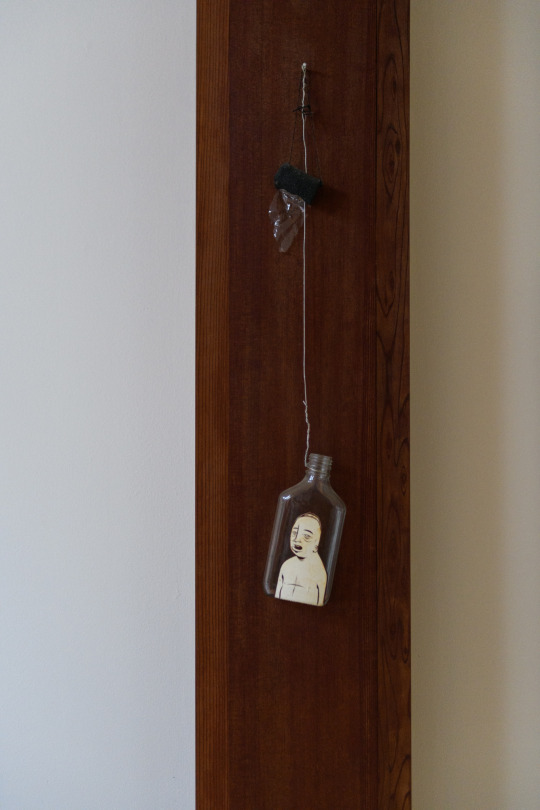
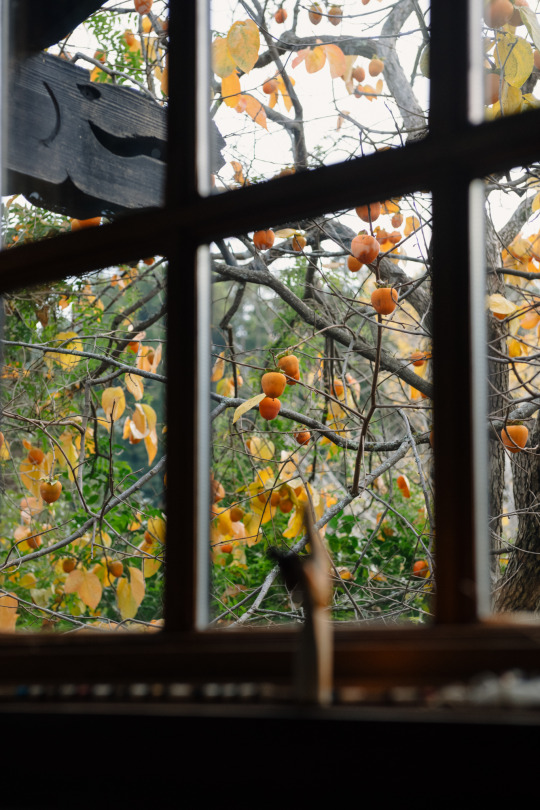



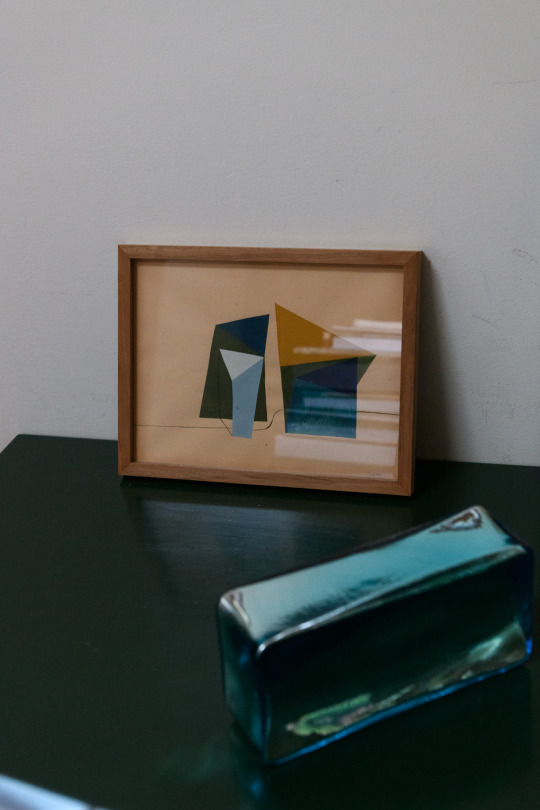
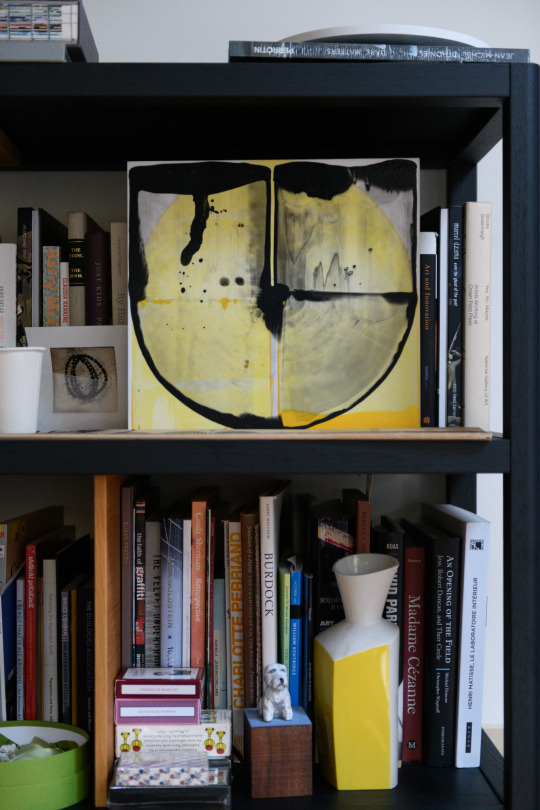
3 notes
·
View notes
Text
Artist Spotlight: NJ Roseti

This month we spoke, or touched wavelengths with, Oakland based artist NJ Roseti, whose furniture designs we've been having a lot of fun looking at and thinking about and using in our own work. So look at them! and then come back to this interview, where we try to find the axiom behind their Euclidean logics.
Studio AHEAD: The first things that come to mind when looking at your most recent pieces are: an original Gameboy with the blue Pokemon cartridge in the back, Ettore Sottsass, Platonic essences, Minecraft, Art Deco, the word "wobble". How close/far away are we?
NJ Roseti: These references are great and not all of these associations are new to my ears. I think the one that rings most true out of what you said for my work is the Platonic essence. Many of my pieces represent the moment in time of emergence or distortion and so by Plato's definition are less real than the Forms which are eternal, unchanging and complete.
SA: Give us a line or two about lines. Often yours are straight. But then—for instance in the Just Like Always table lamp—these lines veer off in unexpected directions. Where do they take you? Where should they take us?
NR: Lines, whether continuous or broken, symbolize to me the continuum of time, where the unbroken line represents the seamless flow of the past, while the broken line signifies the ongoing journey into the future.
SA: What lines have you crossed or followed to get here?
NR: Currently, it's challenging to articulate a distinctive perspective as an artist amidst the myriad of voices from the past and present. It has taken some time for me to clarify my thoughts and find a meaningful expression, having to sacrifice certain things like living at the same standards that other people live, being close to family and focusing on my personal life. Although I haven't reached my destination, I sense the beginnings of crafting a world where I can dwell happily.
SA: In these interviews, we always ask about materiality. Your designs have an almost ironic relation to their materials, as in the Love Before Now trays, with their exaggerated wood marks, or your love of primary colors. Perhaps you have a word or two to say about this; perhaps you will say it is not ironic at all.
NR: The selection of my materials is closely tied to irony. Marquetry, a deeply historical and traditional technique known for its ornate motifs, becomes a means for me to comment on the classical role of wood, highlighting the ironic contrast of its historical significance amid the digital age's prevailing trends.
SA: About the digital: you design with a computer and by hand. Is there a tension in this? I am thinking in contrasts: robotic precision/human imperfection, cold machine/warm body, preprogrammed/spontaneity.
NR: I see no tension actually; in fact, I find the particular connection between artist and computers to be exceptionally beautiful when it’s used as a mere tool. It enhances spontaneity, facilitates iteration, and expands our creative possibilities. It’s the crafting process that is the part that is paid with time, so together it’s overall quite balanced. In this era where computers effortlessly emulate imperfect and organic forms, my exploration with rigid lines and rectilinear shapes aims to prompt viewers to appreciate the inherent perfection achievable on a computer through the precision of geometric forms. I also want to clarify that I’m talking strictly about computers and not AI. I don’t in any way endorse the use of AI in creative fields.
SA: When You Forget. To You. I Just Remembered. I Should Be Now. What’s the deal with the titles?
NR: My works are all deeply personal and I convey my meaning through a process akin to crafting a poem. To label a poem as “Rhythmic words arranged on a page” would do the poem injustice and the overarching meaning would be lost.
SA: Tell us one remarkable thing you’ve sat on.
NR: Sitting in the Noodle Throne by Caleb Ferris feels like you are sitting on an icon that will be remembered in the books.
Photos by Ekaterina Izmestieva






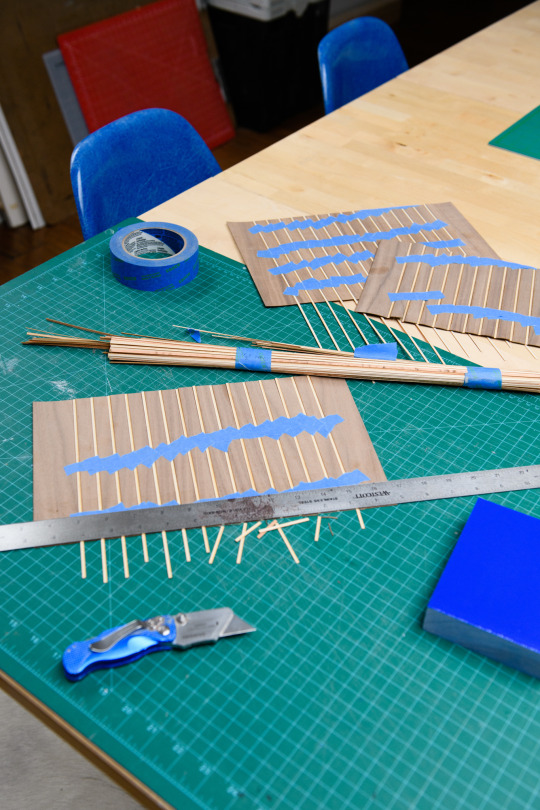


0 notes
Text
Studio Spotlight: Headlands Center for the Arts

The Marin Headlands is just north of San Francisco but worlds away. About halfway along its cape, home to some of the Bay Area's richest biodiversity, is a cluster of former military buildings that now house the Headlands Center for the Arts, unlike any museum or gallery in the city because its art is made on site. Its artists-in-residency program attracts international talent, but the Center keeps things local with a series of open studios, exhibitions, and artist talks for tourist and townie alike. We spoke with Mari Robles, executive director of the Center since 2021, about what it is like to build community in a place where you can see more stars in the sky than people on the streets.
Studio AHEAD: Hi, Mari! Tell us about how you came to Marin. Prior to your start at the Headlands, you were living in New York City, which is pretty much the opposite in terms of geography and pace of life.
Mari Robles: Marin is opposite in every way to NYC (and Chicago!)—coyotes, owls, stars, quiet! Like so many people, I started exploring new parts of myself during the pandemic, and the opportunity to extend that personal adventure to a new home and such an inspiring new mission felt right. And on a very basic level, how could you say no to such a beautiful place?
Studio AHEAD: What’s been the biggest change?
Mari Robles: I welcomed the change of pace, but I must admit, the first blackout in the Headlands was shocking. I didn’t realize just how dark it could get. That, plus the fact that you can’t get food delivered or grab a taxi out here, can make you feel removed from the rest of the world. Ultimately, however, it’s that remove that allows for a great deal of reflection and an opportunity to commune with nature—all things that make Headlands such a special place for artists, and I’m happy to say, me as well.
Studio AHEAD: Has New York influenced how you approach your current position as executive director? Does Marin affect how you look back at your years in NYC?
Mari Robles: While I was working at The Met, I thought a lot about the conversation between local and global communities, specifically how they seem to be moving on a parallel path. We are living in a time when the most globally impactful thing you can do is to be hyper-responsive to your most immediate community. It’s so easy to overlook, but the impact of that approach radiates outwards and can influence the wider world in such meaningful ways. This was true of my experience in NYC, and based on my experiences so far, I also believe it’s true of the Bay Area.
Studio AHEAD: I love your idea of global and local moving in parallel—that’s a great way to describe how we work as designers.
Perhaps the biggest change from New York, and Chicago and Miami where you have also lived, is that there are far fewer people where you are. Does this create challenges in terms of building a community? We know the AIR program is doing a great job bringing people together….
Mari Robles: Recently, one of our summer residents called Headlands a “parenthesis in the world,” and that really struck me—this place is really so singular in the arts community. Our campus has a strong connection to the rest of the Bay Area while being distinctly separated from it, physically and psychologically. That means it can provide you with moments of heightened attention in which you’re deeply present with yourself, the artwork you’re seeing, your ideas, and your community. In order to experience this, however, you have to surrender to the inconvenience of traveling to this place. And depending on your starting point, that can indeed be daunting. But for those who are undeterred, that inconvenience is always worth it.
Studio AHEAD: It’s worth it definitely. OK! Let’s talk actual art. A theme we noticed in reading a lot of the current art residents’ statements is the role California’s natural environment plays on their ways of making art. Certainly in our own work, we are always bringing the countryside into our design decisions. When deciding residents, are you looking for artists who are attuned to their surroundings?
Mari Robles: Headlands supports artists who are at an inflection point in their careers. This means they are primed to explore a promising new direction or idea, and that the space, time, resources, and affirmation we offer them will help them plunge deeper into themselves and their work than they might anywhere else. We essentially want to incubate their next artistic incarnation and give them what they need to bring their creative practice to the next level.
One of the most beautiful aspects of our residency program is that we have artists from all disciplines from all over the world—from visual artists to writers, dancers to performers, and musicians, all with a mindset of tinkering and exchange. What they share with each other and those who visit their studios—particularly during our Open House events—is often raw and vulnerable. In my mind, seeing a work of art take shape is a defining experience at Headlands. Anyone and anything here can be a catalyst toward a real creative breakthrough.
Currently, VictoriaShen, an experimental sound artist from the Bay, is in residency in our Project Space. She’s making instruments using kites, her body, and obsolete technology, and opens her studio five days a week for everyone to see.
Studio AHEAD: Do you do your own creative work? Or are you more of an organizer/director?
Mari Robles: I did play violin in my twenties, but these days, I’m an avid art lover, supporter, and leader who practices creativity every day in my personal and professional life. I’m not an artist, but I believe in the transformative power of creativity and have seen my life become richer and more meaningful whenever I approach a situation through the lens of possibility and worldmaking.
Studio AHEAD: Speaking of worldmaking, what are some areas—a neighborhood, a favorite vista—that have most delighted you since moving here?
Mari Robles: In Marin, I recently discovered the Pelican Inn by Muir Beach, and I cannot get enough of the cozy atmosphere and delicious meals. I also frequent Sandrino’s in Sausalito and just love their pizzas, wine selection, and tremendously warm hospitality. And any time I need to be replenished, I take a drive to Hawk Hill; it’s humbling to see the beauty of San Francisco from that distance and then turn towards the vastness of the Pacific Ocean.
Over in the city, going to see a talk at City Arts has become one of my favorite things to do. I really enjoy the range of critical conversations they organize.
Lastly, I’ve also seen a few amazing concerts at the Fox Theater in Oakland—Grace Jones, Nils Frahm—followed by some of the most delicious street food. I love the energy and living of those moments.
Studio AHEAD: Thank you, Mari!
Photos by Ekaterina Izmestieva

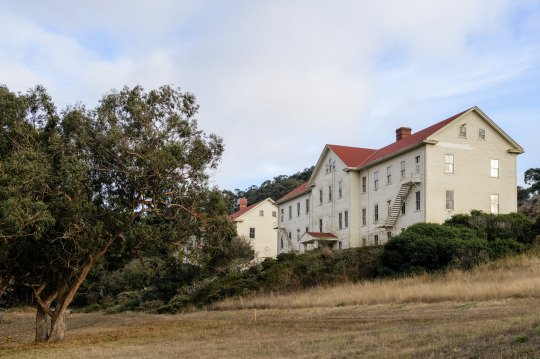


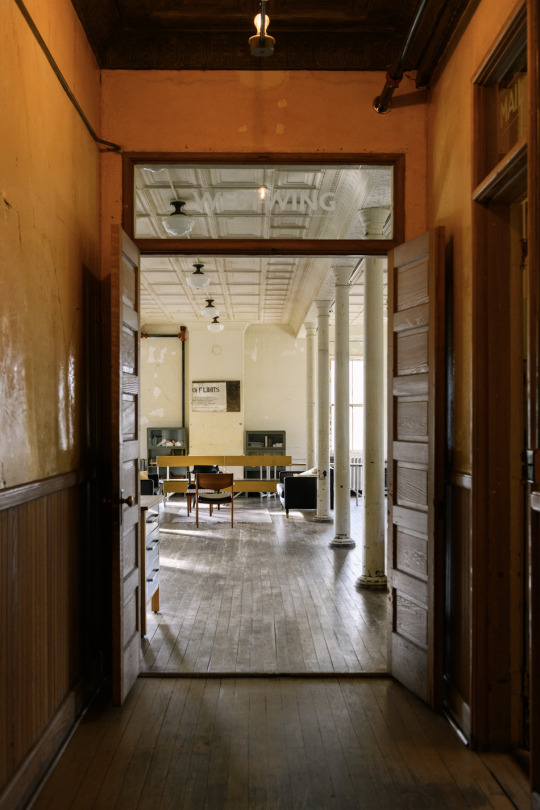

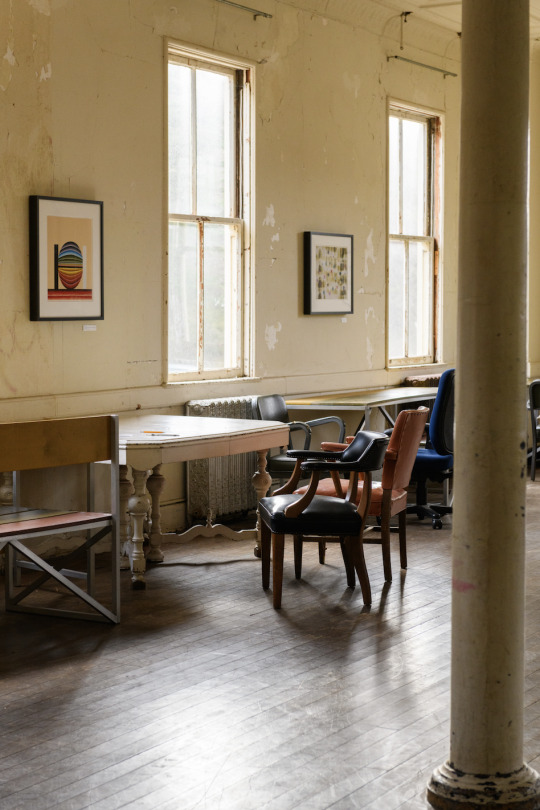

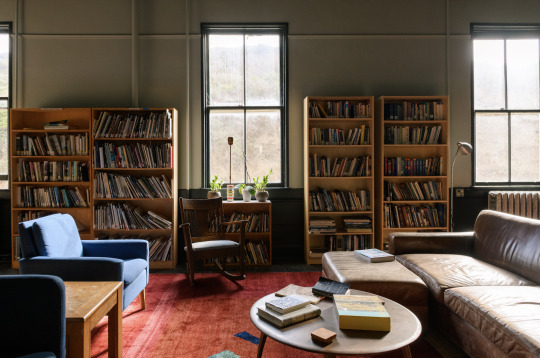

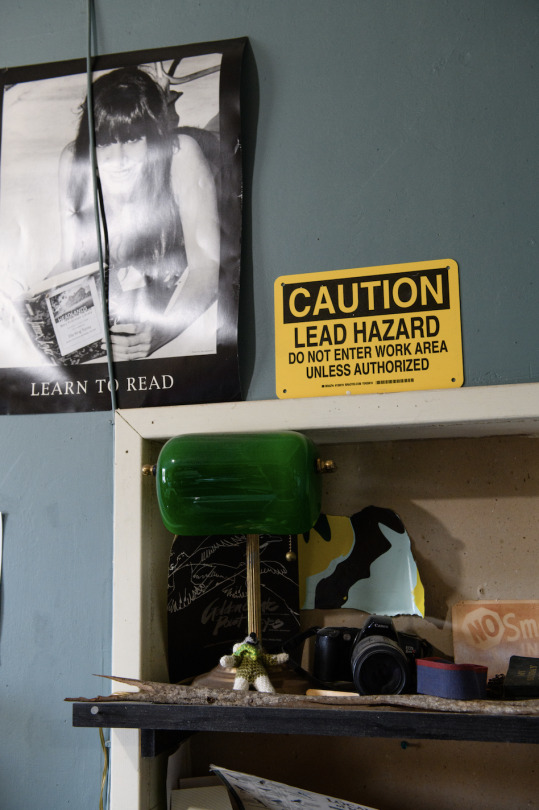
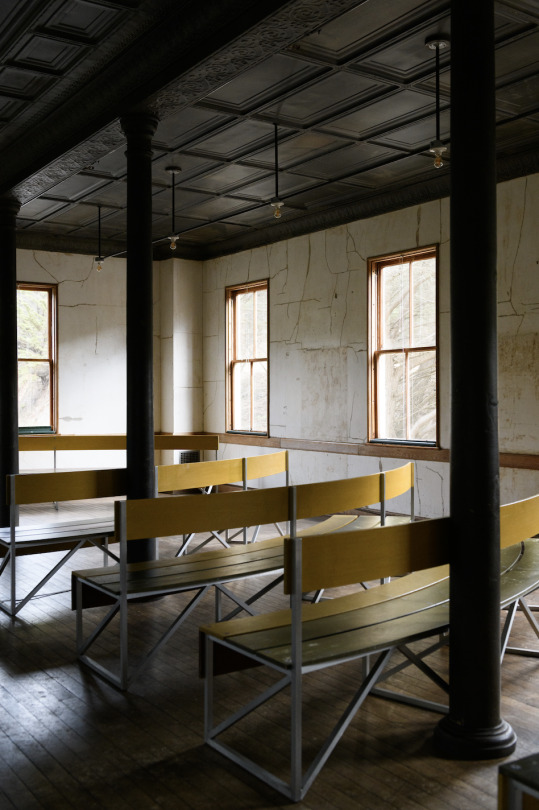


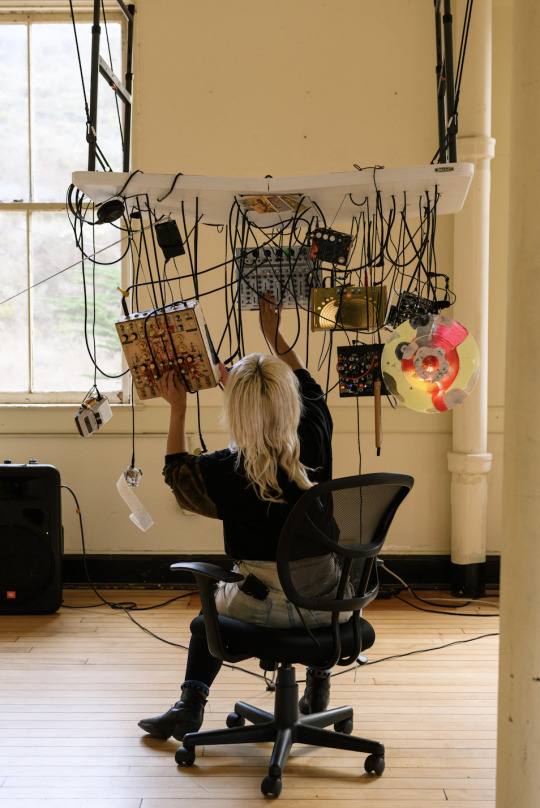
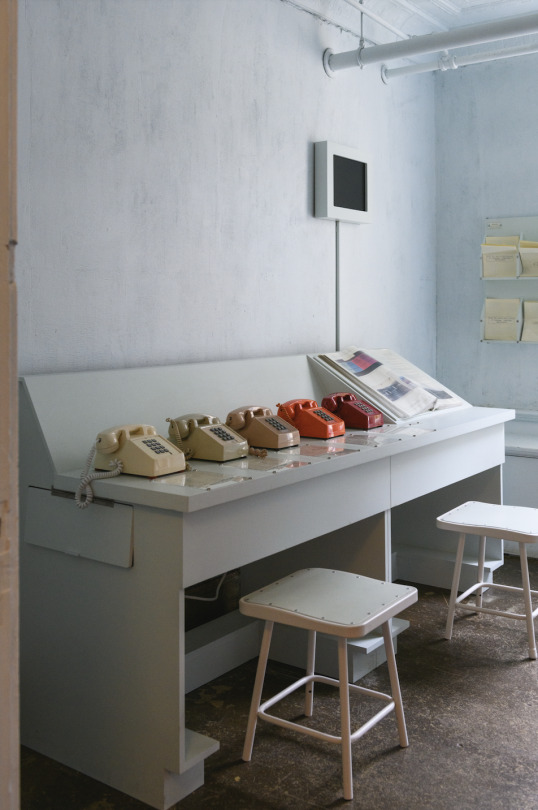





#studioahead#marincounty#marin headlands#headlands center for the art#art#bayarea#northern california#san francisco#artistspotlight#gallery#studio ahead
1 note
·
View note
Text
Gallery Spotlight: Aida Jones
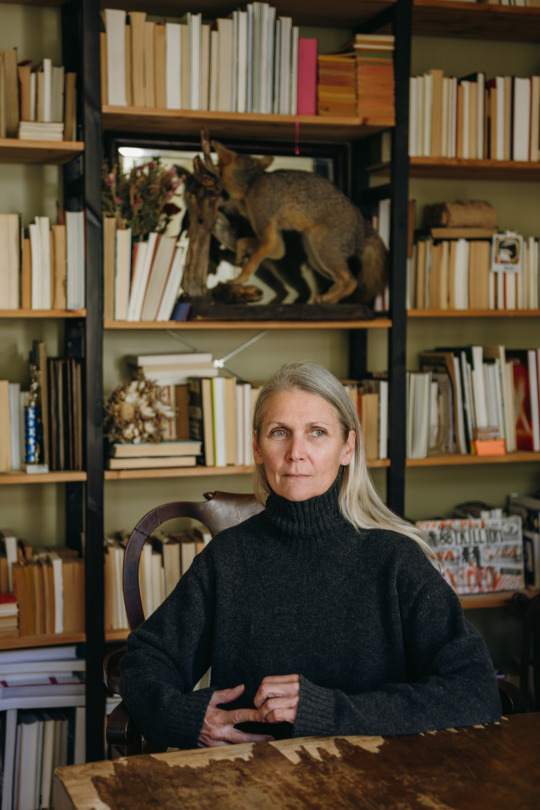
We at Studio AHEAD are excited to announce our latest exhibition, The Lily Too Shall Function, on display at The Jones Institute and the Minnesota Street Project starting November 3. As a sneak peak, we spoke this month with Aïda Jones, founder of The Jones Institute, who shared with us the history of the home gallery, a few thoughts on our show, and what San Francisco was like in the 1990s.
Studio AHEAD: The first striking thing about the Jones Institute is that it is run out of your living room. Can you share with us the history of how this came to be?
Aïda Jones: Impulse was the catalyst. An artist friend was forlorn after being rejected by a gallery and, instinctively, I responded, “I’ll have a show for you.”
It was a leap of faith where Matt Dick, Ruth Kneass, Tjarn Sato, Fletcher, Anton Stuebner, Michael Lee, Wendy Norris, Regina Tsasis, and many many others, generously helped transform my living room into The Jones Institute.
Studio AHEAD: Were there other contexts?
Aïda Jones: The home is the original gallery. We still visit homes—the Uffizi, the Louvre, the Frick—that are now museums. The Walker Art Center in Minneapolis began in TB Walker’s home in the late 19th century and in New York in the 50s, Leo Castelli converted his living room into his first gallery. The New York Times had a wonderful article about apartment galleries a few years back.
Studio AHEAD: Perhaps 500 Capp is San Francisco’s most famous example. Who were your guiding lights in setting this up?
Aïda Jones: I love the idea of shaping culture from the fringes. Of bringing a traditional and formal construct into the domestic space.
Guiding lights are everywhere. Walk out your door and you’ll find thousands of inspirations: the drunk at the wharf, everything in Chinatown, the dahlias in the park, the art in the TL, vendors in the Mission, the cook at Red’s, the amateur opera singer next door rehearsing.
Studio AHEAD: What sort of advantages does this… let’s say DIY approach… bring?
Aïda Jones: Let's not say DIY.
Studio AHEAD: Then what would you call it? Certainly the space itself affects how people view the art.
Aïda Jones: If we have to label it, maybe call it an alternative space. And you’re right, space absolutely affects how people view art. It permeates every bit of their experience. When art is in a home, the sense of place opens them up—the art itself changes the space, it’s a symbiotic relationship you won’t have within the white box. And The Jones Institute is not a commercial place so most people find communing with art is different.
Studio AHEAD: Tell us about a recent exhibition from curator Shirley Watts. Would this be a show a more mainstream gallery could put on?
Aïda Jones: Yes and no. While individually the artists from that show (Gail Wright and Megan Gafford, for example) are exhibited in mainstream galleries, the whole of Altered States would have been impossible. Where else could you sit in a backyard, listening to an audio performance of a brain dissection (Erica van Loon) after taking in Megan Gafford’s irradiated daisies and an Erin Espelie RGB video in the main gallery?
Studio AHEAD: Nowhere else! How does our show, The Lily Too Shall Function, fit into this?
Aïda Jones: The Lily Too Shall Function, being guest curated by Homan and Elena, feels very connected to our programming. First, they chose three Northern California artists among the cohort we choose to exhibit here; and second, they are working their distinct point of view within the domestic space, marrying art with how we live. Very much in our founding ethos. We also have a deep belief in sharing the artistic process, so screening a film of the artists at our satellite location in Minnesota Street Project just makes sense.
Studio AHEAD: You and Homan were speaking off-the-record about the 1990s, on which there is currently a lot of nostalgia in mainstream American culture. What elements of the 90s would you like to see transplanted into the 2020s?
Aïda Jones: This is specific to San Francisco where we are on the edge of the world. The experimentation, the casual spontaneity, the lack of preciousness and belief you could do anything.
In the 90s, I founded AvidFan, a theatre company, and when I cast two actors (who were also female) in The Zoo Story and then True West—this to the New York Times was radical, but in San Francisco, no one blinked.
It happened because of this place as it existed then. The space and freedom. The whole Bay was wide open with possibility (and low rents!). Such amazing support for artists, from studios and rehearsal spaces for musicians, filmmakers, comedians, photographers, spoken word poets, writers, hip-hop/modern/ballet dancers to performance venues and theaters (& a cowboy store on Valencia), many underground & well-known support structures like Film Arts Foundation, New Langton Arts, New College, and so many others.
For a peek into that era see the New Yorker article of the photographer Chloe Sherman’s Renegades (and then buy the book).
Studio AHEAD: What aspect of the 2020s would you have liked to see back in the 90s?
Aïda Jones: The lovely, well-kept city parks. The absence of lingerie shows in downtown bars.
Studio AHEAD: We like to end with some cultural spaces/people in Northern California you’d like to shed light on.
Aïda Jones: Aside from each and every artist I've shown?
Studio AHEAD: Yes.
Aïda Jones: Here is an incomplete list: Aimee Sioux, Reed Awakening, TamaOne, The Farm Stand Art & Music program, Stud Country Queer Line Dancing, Slash Art, For You, the Bolinas Museum, African American Cultural Center, Dancers' Group, Auntie Charlie’s, Werkshack, CCSF Film Department, Arborica, the promise of a NorCal Pacific Standard Time, Catholic Charities’ homeless family shelters, Canyon Cinema, the Bay View Newspaper, Everything the band, Albert Lee, Natural Discourse, NAID, Cushion Works, Lynette Betancur, Donald Guravich, Rachel Marino, the new extension of trails in Marin’s redwood preserve, Originals Vinyl, Li Po, Artists Television Access, CounterPulse, RCA Beach, Day Moon Bread, whatever Natasha Boas is up to, 120710 in Berkeley, Winslow House…
Studio AHEAD: Thank you!
Photos by Ekaterina Izmestieva




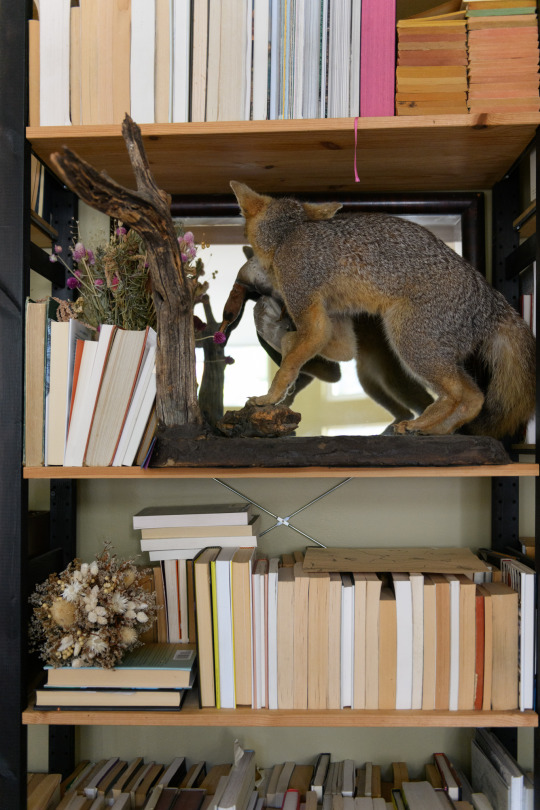

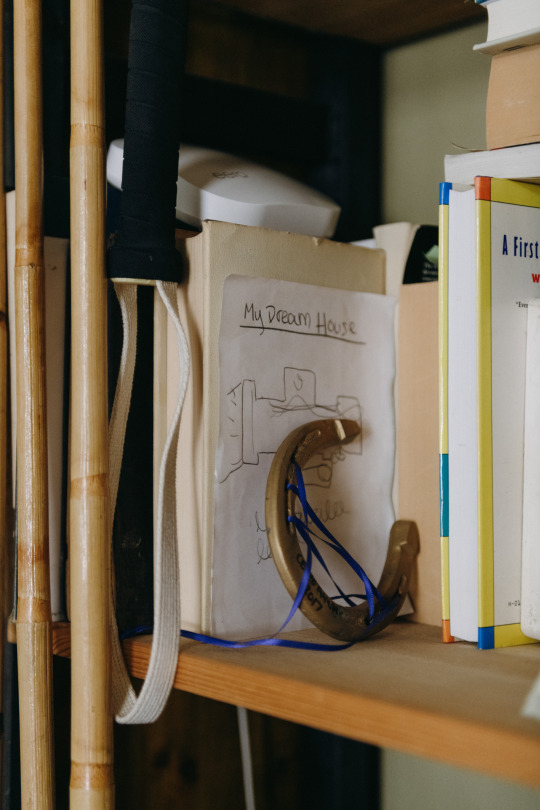


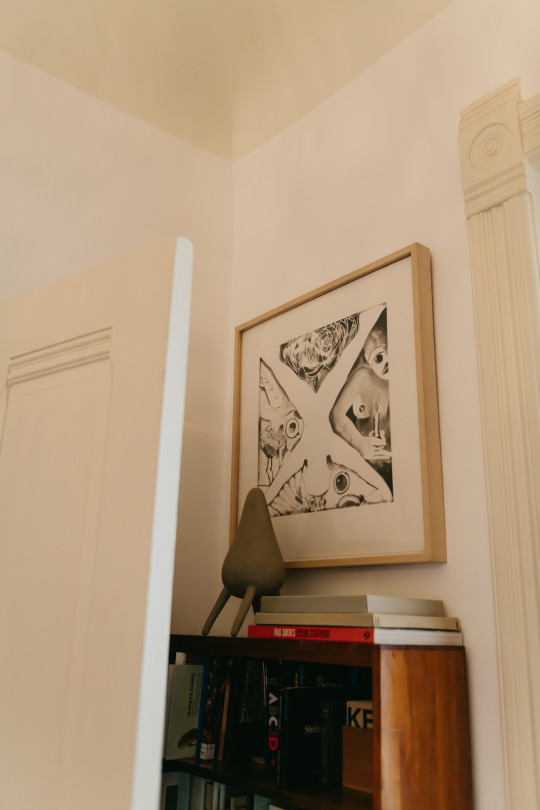
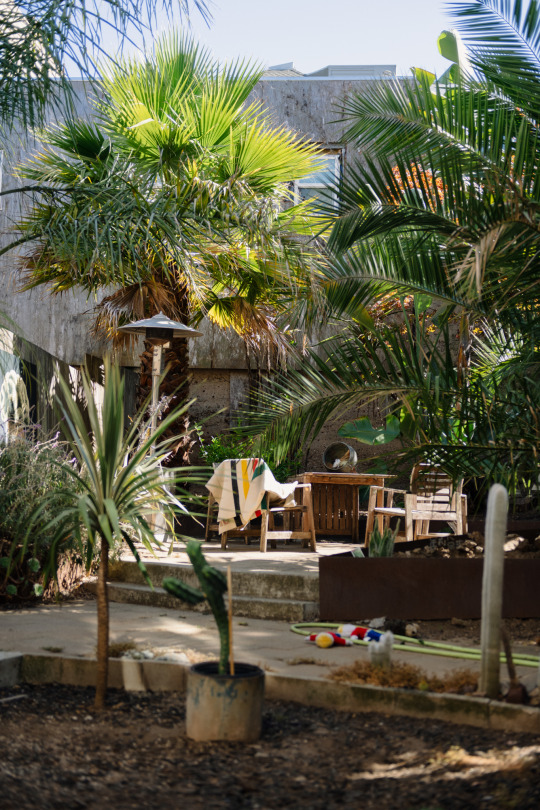
1 note
·
View note
Text
Artist Spotlight: John Gnorski

When we asked John Gnorski what on earth are EARTH BABIES, he took us on a subterranean journey to meet them. Or at least that's how it felt. Hearing John speak about his creative process certainly takes you all over, even into your subconsciousness, about which he has a lot to say. His art is full of strange landscapes, strange portraits, strange figures. Our current fave is one from his Clouds Roll By Like A Train In The Sky series not because of its great title, or because the clouds might actually be birds or blossoms, but because peeking through the print's ink is the grain of the woodblock, reminding us of the materiality that grounds all our work, no matter how wildly dreamt.
Studio AHEAD: John, your bio is mysteriously pithy: “Born in Alexandria, Virginia, living/ working in Point Reyes Station, CA.” What brought you to the other side of the country?
John Gnorski: I moved from the East Coast more or less on a whim in 2007, picking up and leaving the Hudson Valley, which had been my home for 6 years at that point, and ending up in Portland, OR. Luckily it was still a pretty affordable town at the time so I was able to piece together a nice existence doing carpentry for a day job (which would indelibly inform my art practice) and making art and music every other waking hour. I found a great community, fell in love with the truly epic landscape of the West, and at some point the West Coast just became home.
After many happy years up in Oregon, my partner Katie, who is a filmmaker, decided to get a master’s degree and that instigated our (truly auspicious) move to the Bay. One thing led to another, and we were lucky enough to find a house to rent in Pt. Reyes Station. Before long we found a great community out here and we hope to stay for as long as we can.
I do miss the East sometimes, especially the sort of archetypal procession of seasons there with crisp autumn days, deep winters, and summer thunderstorms and lighting bugs. That said, I can’t imagine a more beautiful place to live than here on the Northern California coast. I’m grateful every day to be here and I often think to myself how did I even end up here in this incredible place?
Studio AHEAD: Has Northern California come to influence the materiality of your work?
John Gnorski: Absolutely. In a very literal sense I tend to use native wood in my work whenever I can, but the influence goes beyond the physical material to a particular sensibility that seems to be shared by a lot of Northern California artists across generations and styles. I find that, at least in my experience, there’s less concern out here about the whole (false) binary of art vs. craft than I experienced as a young artist on the East Coast (particularly in the vicinity of New York).
I think that this attitude has, thankfully, changed quite a bit pretty much everywhere in the years since I moved west, but nevertheless California has a long history of breaking down established conventions and categories. Ceramics and wood sculpture, for instance, have been taken seriously out here for generations in a way that hasn’t historically been the case out east.
This anti-hierarchical spirit famously permeates a lot of the culture out here. A nice example is the great DIY building tradition of the “hippies” and other folks who took to the rural areas of the coast, starting in the middle of the last century, and made truly beautiful, strange, and inspired homes out here that flout both architectural convention and often the laws of physics. I’ve had the pleasure of helping to restore some buildings like this up in Mendocino and, to bring this full circle, some of the little scraps and bits I’ve taken with me from those projects have become pieces of my own work, along with the lessons of those often anonymous artist/builders who made, intentionally or not, amazing sculpture-houses.
There’s also a very strong Japanese influence on the aesthetics of so much California art/craft/design that’s found its way into my work. Would I be making these very Japanese/Noguchi-inspired lanterns if I hadn’t ended up here? I don’t know for sure but I’m guessing this place has informed them quite a bit.
Studio AHEAD: Don't get Homan started on Noguchi. He's obsessed. What is your relation to abstraction? Many of your sculptures and drawings almost seem to form recognizable figures, but not quite.
John Gnorski: With very few exceptions everything I make is representational even if it’s hard to decipher the image in the finished piece. I’m looking at a little watercolor painting right now that would almost certainly appear totally abstract to anyone but me, but I know that I made it in the Mojave desert and I can see the particular landscape that I was trying to depict—the horizon, the heat ripples, little constellations of scrubby desert plants—though it’s basically reduced to visual symbols.
It’s not necessarily a formal decision I’ve made to avoid pure abstraction, it’s more of a narrative one. Having concrete subject matter is an important starting point for me, one method of avoiding the potentially paralyzing experience of confronting the blank page. So even if the finished picture or object ends up miles away from where it began, I still start by saying to myself, for instance: I’m going to draw a lizard sunning itself on a stump or, as in one of the pictures I’m working on now, I’m going to draw a bather in Tomales Bay stooping down to look at a bat ray. One might end up a pretty faithful manifestation of the concept while another might go through the ringer of some process and turn out as a loopy line drawing that barely hints at its source material.
I sometimes do the same thing when I write songs, coming up with a title first and then writing into that. The two even intersect as in my continuing series of cloud pictures all of which are titled “Clouds Roll By Like A Train In The Sky” which is also the name of a song I wrote. Without the title those pictures read as geometric abstraction, but with the title they become clouds. Context is so important!
Studio AHEAD: Those cloud pictures, and also your Rorschach-like quarantine notebooks/bird and butterfly prints, give room to the subconscious. How do you get into that mental space when creating that allows for the subconscious to take over?
John Gnorski: Allowing room for the subconscious is really important to me because at the end of the day it’s very often the accidental/unintentional things that really resonate with me. To clarify, when I say subconscious in this context what I’m really talking about is allowing forces outside of my control to work in the picture/object. I try to maintain a decent level of competence when it comes to the basics of art-making, but I also try to use whatever “technique” I’ve developed to allow chance and accident to do their wonderful work. I know that nothing I could map out perfectly from start to finish will be nearly as interesting as something that transforms in ways I never could have anticipated through the process of the making.
This sensibility is very visibly present in the Rorschach-style pieces and a lot of my sketchbooks and works on paper, but it’s there in less obvious ways in all of my work. The lanterns, for instance, might appear as though each little bit of joinery was carefully plotted out, but in reality they are built based on pretty simple line drawings and constructed in an organic manner. I’ll have a basic shape I want to achieve, but the way everything is put together is done on the fly. Sometimes a connection might become redundant structurally as a piece grows, but I’ll keep it in there as a remnant of the process. All the little false steps and unintentional gestures become a part of the piece and give it a complexity I wouldn’t have achieved if I’d set out with a dialed-in plan and done things in the most elegant and minimal way possible.
The same is true of the ink on paper pieces which begin life as charcoal drawings and allow chance to seep in throughout the process. I rub the drawings onto plywood “plates” which transfers them in an imperfect but legible manner. I’m also using multiple plates and pieces of paper to allow for misalignments, and the plates themselves are of a type of plywood that tends to have an active grain that sometimes splinters or “runs”—interrupting the carved line in often surprising ways. I hand print the plates, which produces unexpected textures, and then go back into the image with more ink or sometimes collage or pastel. So in the end what began as a pretty clear and maybe even graceful line drawing becomes, through the welcoming-in of chance, something a bit more nuanced and awkward, full of special little moments on its physical surface that come out of that totally not conscious place of process.
Studio AHEAD: Tell us about EARTH BABIES, your collaboration with Kate Bernstein. We are particularly interested in how collaboration impacts the creative process—we have many ideas about this at Studio AHEAD and those ideas are constantly evolving. Do you find it easier to work alone or with a partner?
John Gnorski: EARTH BABIES is the conceptual tent that shelters all the collaborative work that Katie and I do together. It started as a music/installation performance at an amazing event called Spaceness that friends of ours organized for 5 years on the coast of Washington at a place called the Sou’wester.
Spaceness was a very free-form community art-making event that revolved around the concept of the unknown, and often featured work relating to outer space or unexplored worlds. It was held annually in early spring—the very darkest and dreariest time of the year in the Pacific Northwest—and it featured music, dance, video, radio, you name it. Folks would work for months on their contributions, and it was so beautiful: community coming together to make their own entertainment and help each other through dark days. For me, this is the best case scenario for art-making. I like to think of it as subsistence art—art for fun and joy and also for survival. It honestly makes me tear up thinking about it, and I often cried during the performances there. It just moves me so much to see what people can make with little to no budget out of the simplest materials like cardboard, scrap wood, clip lights, fabric, words: whole worlds that can really put you under a spell, transport you, communicate a message, and make time and space for our imaginations to nourish one another.
Anyway (and forgive me, this is going to get maybe a little esoteric) Katie and I, inspired by a trip to Ghost Ranch in New Mexico, came up with this idea of a whole culture of beings living deep under the surface of our Earth called “Earth Babies.” We first wrote and recorded songs based on this imaginary world, and over the years we made various installations: the “Healing Machine” which was a sound bath in a hand-built A-frame in the woods and the “Hopler Archive,” a fictional natural history museum.
At this point, EARTH BABIES is the name we use whenever we want to make something creative without the burden of our “actual” identities getting in the way. It’s our shared alter ego that allows for maximum creative expression.
As for collaboration generally, as much as I love spending time alone in my studio, my ideal art making ratio would be 25% solitary practice, and 75% collaboration. I love the energy of working with other artists, performers, thinkers, etc., and I think that collaboration leads to amazing things no one ever could have come up with on their own. I also think that community events like DIY music shows, theater, potlucks and ephemeral art exhibits in informal spaces are the most heartfelt and wonderful forms of art —purely collaborative and collectively authored. Again, it’s that idea of “subsistence art”. If none of us had to worry about selling our work I think there would naturally be a lot less emphasis on individual style and a lot less concern about authorship. Maybe collaboration would be the new norm and we could all contribute a verse to the big song we sing to sustain ourselves.
Studio AHEAD: What's your favorite music to listen to while making art? You are also a DJ and musician.
John Gnorski: Katie and I host a radio show on West Marin’s community radio station KWMR every other Sunday morning, which has really made us feel connected to the community out here.
I listen to a huge variety of music in my studio from atmospheric/ambient music like Brian Eno and Hiroshi Yoshimura to soul to Neil Young to Terry Riley to Alice Coltrane to Lucinda Williams. I’ll often just rely on my cassette library to take a break from the digital realm, which features a lot of mixtapes from Mississippi Records, my favorite record store/label. But if I had to choose only one thing to listen to while making art it would be Ornette Coleman. I’ve listened to a collection of his recordings called Beauty Is A Rare Thing many thousands of times over the years in every studio, basement, garage, and shed I’ve worked in. His music has every color and emotion and gesture in it, and it radiates compassion and energy and love. It’s also difficult at times and can go from soothing to jarring pretty quickly, much like life. When I listen to a song like “I Heard It Over The Radio” I hear everything from voices harmonizing singing a folk song to animals making raucous calls to wind in the trees and rattling subway cars.
Studio AHEAD: What can you do in music that you can’t do in the plastic arts? And vice versa?
John Gnorski: For me the boundaries are pretty porous. As I alluded to earlier with the titling of my work, there’s a lot of crossover and dialogue between disciplines in my practice. It’s easier for me to come up with analogies. A skittering, hesitant line in a drawing conveys something similar to a thin, airy flute or a tentative phrase on a piano. Take a lyric like this one by Leonard Cohen:
Nancy was alone
looking at the late, late show
through a semi-precious stone.
It conjures all kinds of atmospheres and emotional states like a Rothko or an Alice Neel portrait. Whenever I hear Alice Coltrane play the harp I think of someone painting with absolutely every color on their palette.
Music, however—live music—does have the wonderful quality of being ephemeral that most plastic arts don’t possess. It allows you to really inhabit the moment if you choose to. As a performer you’re also able to collaborate with an audience in a way that’s much harder to do with visual art. If you can engage an audience, or are part of an engaged audience, it can really make the experience special, with everyone kind of rooting for the performers and contributing their attention and energy to make the whole experience really lovely.
Then I suppose there are some stories that can be more eloquently told in pictures or gestures than in sound. Light can be captured really evocatively in a drawing or a painting and used to make form in the realm of sculpture. There are some feelings you can only get, some ideas that can only be conveyed, when you’re in the presence of a physical thing.
Studio AHEAD: I want to end on the very first photo posted on your Instagram. It’s a poster that says: “Now is the time to do your life’s work.” How do you or how do you try to live this mantra?
John Gnorski: I made this picture as a kind of personal affirmation to hang on my studio wall many years ago. A lot of people who came through commented on it and it seemed like most everyone appreciated the reminder.
My idea of my “life’s work” changes all the time, but the constant is a commitment to making things that I hope will tell a story or convey a feeling clearly and with heart. At times it can seem like art is some kind of luxury or commodity, but then I remember how it has truly illuminated and influenced and given hope and shape to my life and the lives of a lot of other people over the entire course of human existence. I think that being an artist is as noble a vocation as any, and more helpful to humanity than a lot of things I could be doing with my time.
I’m in the fortunate position of being able to primarily make a living by making art and other art-adjacent objects these days, but in the recent past when I would be laboring away at a carpentry gig, I would think of that image and that mantra and remember that I had some kind of calling beyond the job that paid the bills—a “life’s work” that couldn’t be defined by an hourly rate—and that the artist work deserved and demanded my commitment. I still believe that if I show up for the muse or universe or whatever you want to call it everyday, ready and willing to work, that I’ll be able to somehow keep doing this as my life’s work and hopefully make things that help other people see life or hear it or survive and take joy in it.
Studio AHEAD: We love that. We always start with asking our clients how they live. It's so important. Can you give us three creative people/places/cultural forces based in Northern California that we should take note of?
John Gnorski: Cole Pulice is a musician/composer living in the East Bay whose music often keeps me company in the studio. We also listen to a piece of theirs almost every day on the short drive from our house to the trail that we walk to check on the animal neighbors and greet the day.
Bolinas/Pt.Reyes/Inverness DIY art/music scene This is an acknowledgement of the type of creative community vitality that to me is the heart of sustaining art-making—artists, musicians, writers—we can also get specific and talk about it in terms of two spaces where most of this stuff takes place: the Gospel Flat Farm Stand and the hardware store in Bolinas. Both are DIY spaces of the highest caliber that provide the setting and the energy for art to happen.
Ido Yoshimoto. I know that everyone reading this probably already knows Ido’s work [if not, we interviewed him here —SA] but I feel compelled to shout him out because he so generously invited me into the community here when we landed a few years back. He’s also shared knowledge and food and time. The people who make their lives here and share their talents and have profound respect for the land are the soul of this place, and Ido is one of those people.
Photos by Ekaterina Izmestieva
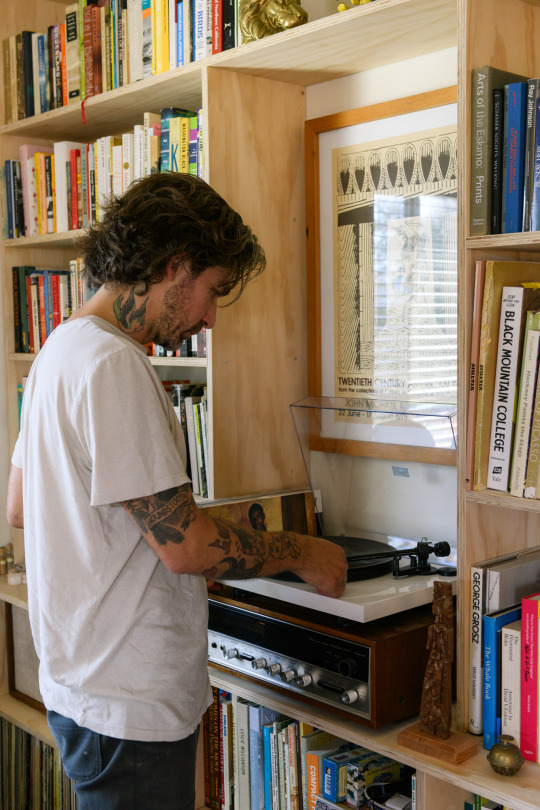
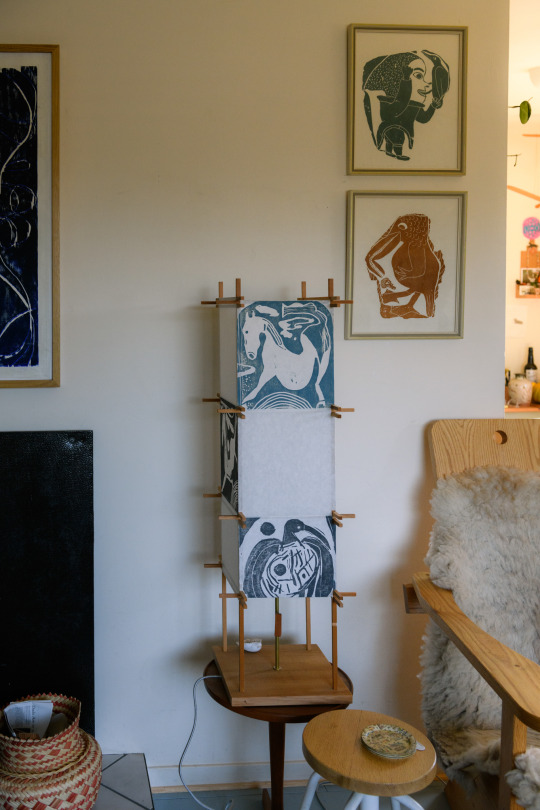
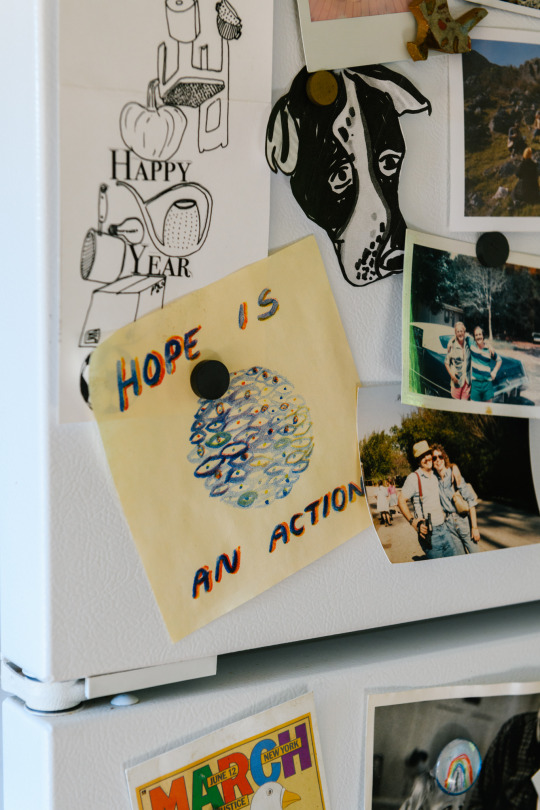
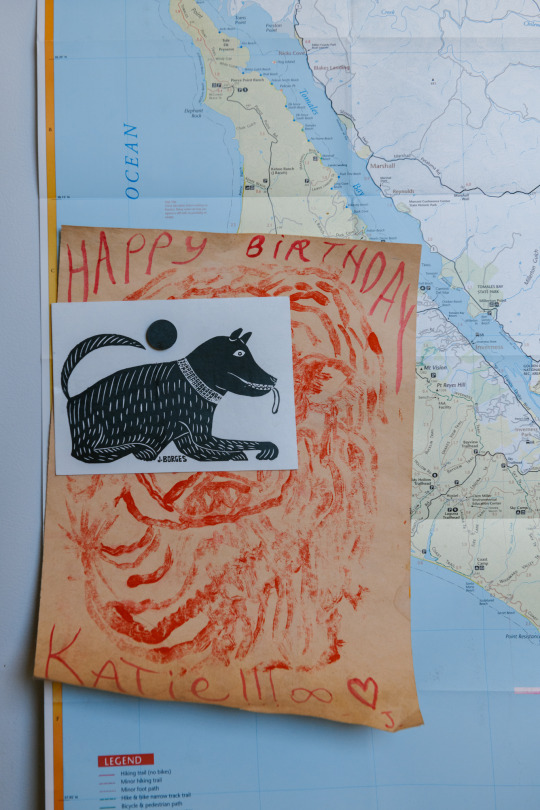
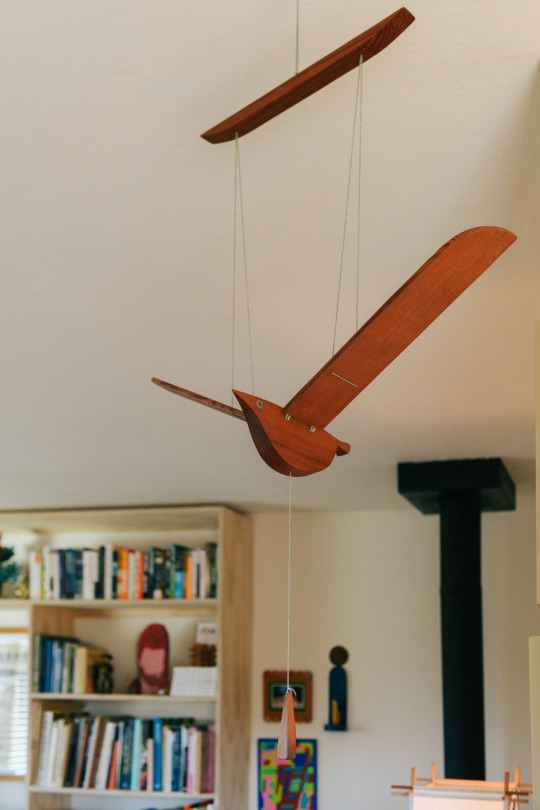

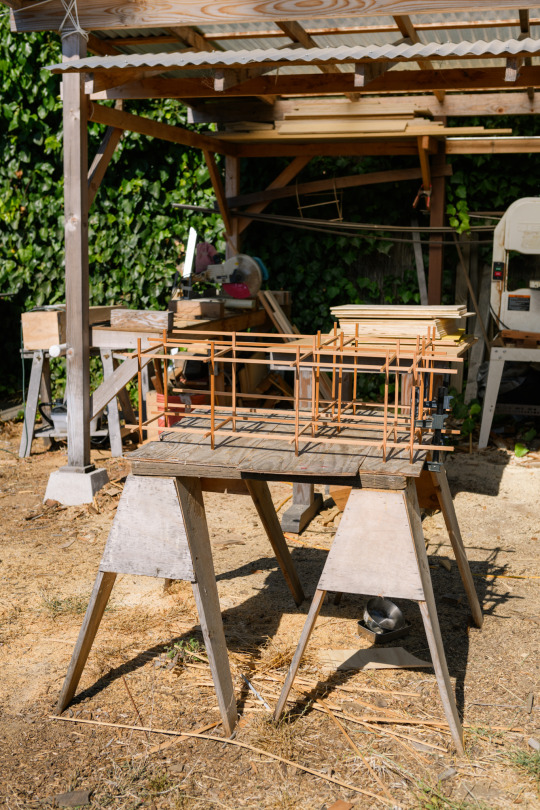


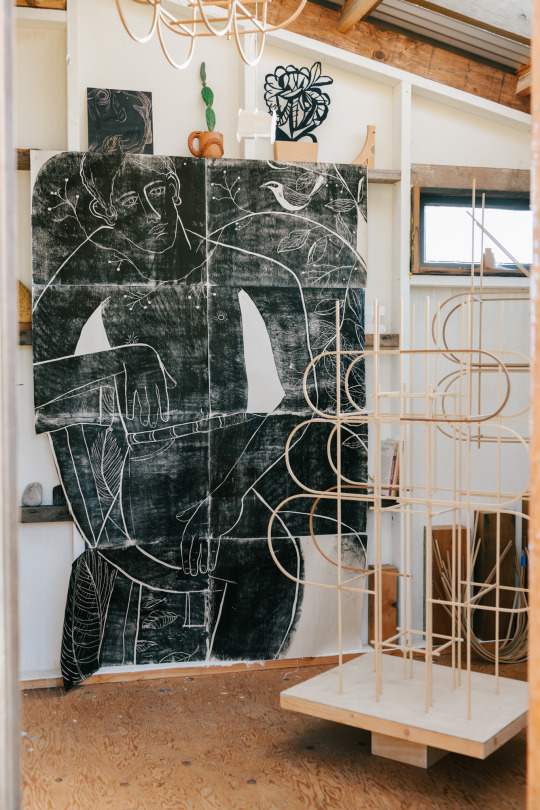
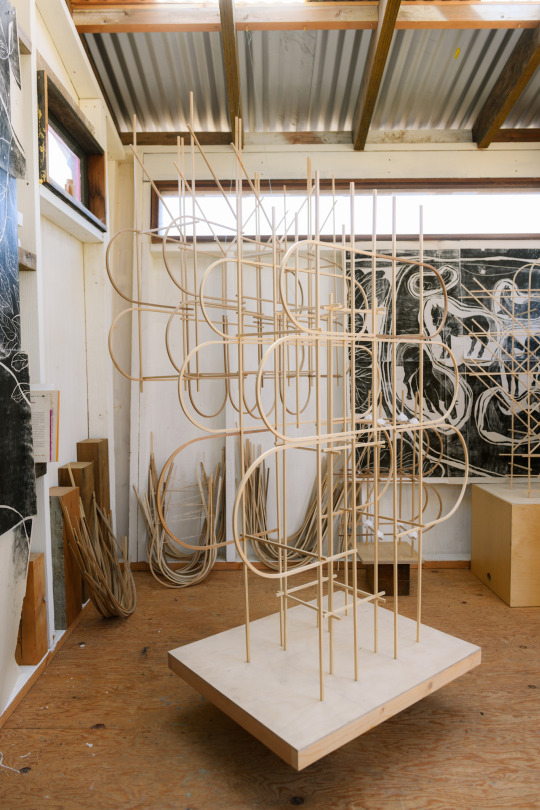
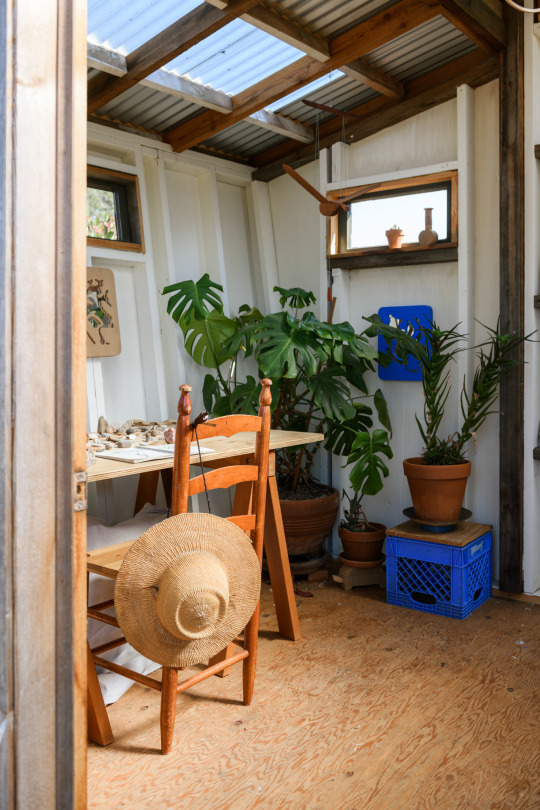

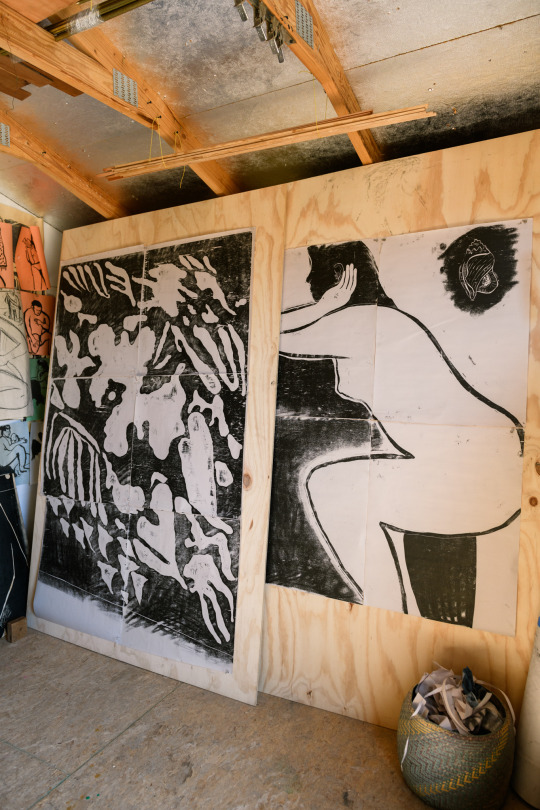
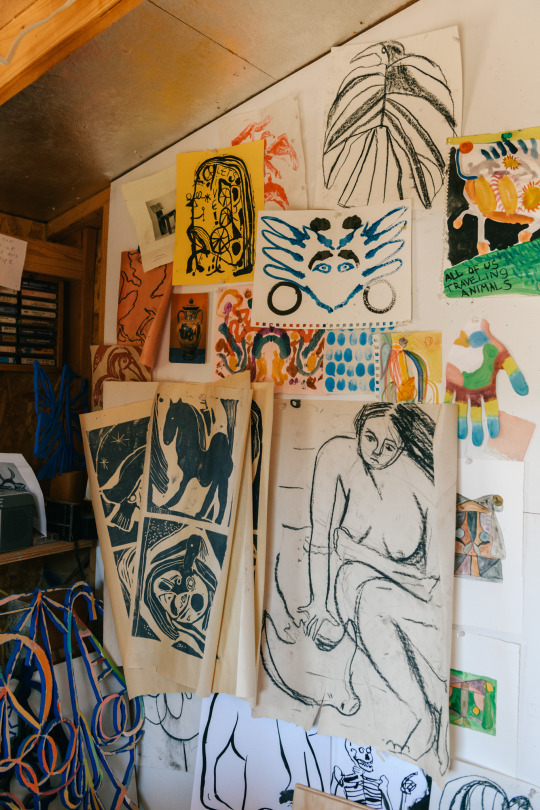

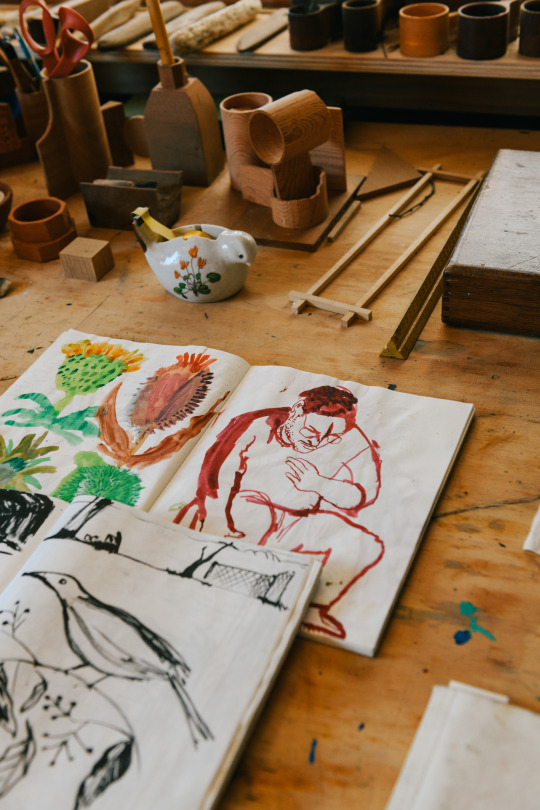
2 notes
·
View notes
Text
Artist Spotlight: David Wilson

What kept popping up in our conversation with Oakland-based artist David Wilson was ways of seeing: landscapes, futures, memory. His watercolor series Facing the Other Way is a poetic rendering of the familiar (Mount Tam) made unfamiliar—and we encourage everyone with a love of Marin to spend some time with this remarkable piece and David’s equally remarkable comments (below) about how memory constructs these places we think we know so well.
If all of that is a little too conceptual for you, just know we met David at a dance party and that his art and artistic outlook is just as fun and wild as his DJ sets. To say nothing of the mind-meld that was "The Possible," about which: "I think my brain is just about healed, perhaps it’s time to try it again?"
Studio AHEAD: Hi, David! We want to start with a recent show of yours, “Framings.” It featured a large-scale drawing made of smaller drawings, all from the hillside of Wildcat Canyon, that you did daily over the course of several weeks. Tell us a little bit about this project, and maybe the role the parts play in the whole.
David Wilson: Hi! Yes, over the years of slowing growing into my drawing and painting practice, I’ve found it most rewarding to center the physical experience of sitting in the landscape drawing in direct observation, and to try to separate myself, as best I can, from the final results of what the image becomes. The way I do it, as you’ve noted, is by immersing myself in the parts, working on isolated daily pages that I carry out with me, continuing each day’s sitting with a new blank page picking up on the memory of where I left off.
So the piece you mentioned, Facing the Other Way, is a watercolor score of 33 pages, recording 33 days, all made while sitting at the same perch in Wildcat Canyon, gridded together in the end to form a more expansive view looking out towards the Bay and Mount Tam in the distance. The individual pages can stand alone, and I like to resolve each piece to itself as I work, with the particular character of light and weather and focus evidenced page to page. Sometimes this is obvious, like a day when I paint in the rain and the paper is a softly washed space, but usually it is more subtle. These conditions are in the environmental space but also in the mental space, so each day the external and internal are interacting to bring out whatever marks get marked. So these bigger works, containing lots of parts, share a movement across what I’m seeing and also how I’m seeing. I like that there is a tension between continuity and individuality, it feels honest to what it’s like each day; we shift, things shift, we respond as best we can and find paths forward to make some sense.
This particular spot in Wildcat Canyon is significant for me, it’s a place that I have wandered and drawn many times over the years, making some of my first durational works, learning about myself and what I hope to fulfill in making art. So returning to it in making this piece has an even bigger episodic arc of parts. Walking out over and over, both in the particular season of this painting, but also over all these years, has become a loving, devotional act. I believe it’s how a relationship to a place, or a person, becomes more meaningful. As you continue to choose it, you know it more deeply, it becomes more dear.
Studio AHEAD: Does memory relate to how you imagine landscape? How do you map environments in your mind?
David Wilson: It’s funny, I have always felt extremely un-imaginative when it comes to drawing and painting. The mental image of things is not where I go. For me, seeing is the thing, opening up as clear a channel as I can between my eye and my hand. My favorite marks are ones that are specific because they are a strong response to seeing, those are the ones that can surprise me, and make me happy. The clearer the response, the more purposeful the mark, the more satisfying the result.
I think that’s why I don’t have a studio practice, when I’m home, inside, I don’t know what to make. I have to go out and find some space to work from, that’s what turns it all on. When my kids get excited and ask me to draw things, like a plane or a dog, I draw some really not good things! They look at me like, don’t you draw for your work?
So I don’t feel like I hold a strong mental image, but I do feel like I have a strong grasp on memory as it relates to seeing. I look hard as I sit and take in a landscape, and then drawing sharpens my attention to all those shapes and forms interacting. So by the time I have spent a day looking, I really remember details that help me pick up when I return for a following sitting. I like to end each session picking one little point in these vast landscapes, and staring at it hard so that I can find it again, even if it’s just one particular tree or gap. So I work hard to hold a particular link, but from there, once I start again, I like letting go and getting into the new day’s space, since again, ideally I’m not misplacing my focus on the finish of the piece, just giving myself some structure and purpose to the sequence of days that leads me to larger work.
When I start a new piece, I always start in the middle, beginning with what feels like the center of a landscape. It helps me find the scale more naturally than if I tried to begin with an edge and work in based on an idea about the overall composition. There is something about how my brain works that lets me keep things in order, and maintain some relative scale, but I don’t have a clear mental map that I work off of, it’s a little more of a funky process that goes on in there. I think it’s a Virgo thing.
Studio AHEAD: What is your relation to California? How did you come to be here?
David Wilson: I am an east coast person in origin; I grew up in a suburban town near Worcester, MA. My family kept pretty tight orbits around the northeast, we would mostly just go to Queens to visit my grandparents, Cape Cod to go to the beach, and maybe Vermont or New Hampshire to see some trees and a mountain. But mostly we just stayed put. So when a friend from college tossed out her vision of moving to Oakland I was curious to know what that could even be. I had a pretty enchanting first visit, complete with East Bay hills walks, a noise show at the Oakland warehouse called Lobot, the hike down from Mount Tam to Stinson Beach and back up again, a cute house party, and many burritos, as one does. I felt like I could get right in the mix, and so I moved, and I did.
For me, California is landscape, and it is community, which are the two things that I love most. To move between solitary experiences in big nature and highly connective experiences with people who are excited to be generative is a wonderful mixture. There continue to be days when I find myself way up on a hill, alone, or with a treasured friend, sandwiched between city doings, and I think how lucky it is to live with such a balance.
Studio AHEAD: “California is landscape, and it is community” is our shared mantra! Speaking of community, you received a lot of press for “The Possible” exhibition at BAMPFA. We like how it breaks down the artist/viewer dichotomy by involving the audience, and of course there is an aspect of community building to it as well. What does “The Possible” show is possible? What was impossible about it?
David Wilson: Thanks for the question, it’s always nice to revisit “The Possible,” it was one of those peak life building–and exploding–projects that I will always be unpacking, and hopefully, given the right moment and situation, will get the chance to reenact. For those unfamiliar, “The Possible” was an exhibition that I curated at BAMPFA in 2014 with the support of former director Larry Rinder [whom we interviewed here —SA] . Rather than a traditional presentation of work, the exhibition was a vehicle and a platform that transformed the museum into an experimental school, residency, gathering ground, performance site, and public commons. It was in part inspired by the fact that the museum was about to move out of its inspiring former 1970 Mario Ciampi building, so there was a sense of permission to use the building itself in ways that were formerly not deemed “possible” due to the standard museum protocols around registration, insurance, and just general caution.
The show was very much alive, which I loved, growing and changing everyday, involving new ideas and people with each step, unfolding itself beyond what I could have imagined just myself. The initial group of roughly 100 artists and contributors that I got involved over the course of a year of preparation quickly swelled to twice that as invitations passed further along, and that’s even before the public got swept up in it. There were teams of artists designing, facilitating, and programming studio-type spaces, a ceramics studio, a textile and dye lab, a print shop, a sound recording studio, an experimental video and performance space, a library, and of course, an outdoor shower, among other things. Each of these platforms and resources were made available to invited guests during the week, and were fully open on weekends to the public.
Artists often contributed their ideas to the show itself, which was unique, applying their practice to the common shape or need of the whole. For example, one of my primary collaborators on the exhibition, the artist Alexander Kori Girard, designed a giant platform that was a multi-tiered pinwheel display sculpture, which began the show elegantly empty and then we would install works and ephemera from various happenings every week, so that by the end it was fully tangled in its collection of the show.
“The Possible” was like a festival in that every day for five months something was happening, some things planned but most things unexpectedly unleashed. I like to describe the format of the show as a vessel, like a giant amphora, that was sculpted to hold as much as possible, ideas and people; in the beginning it was empty, and it just kept filling and filling with everyone involved and the public use. The vessel held up pretty well, though I did feel at times like I had fingers plugging holes just barely keeping it from bursting.
I think the show’s most dominant message of possibility was the powerful opportunity of collaboration and cross pollination. People were intersecting their practices, sharing and supporting each other in trying new things; and I believe this forged meaningful new ideas and relationships that have lasted well beyond the time of the show.
Much of the question of what is possible sometimes felt like a question of “what is possible within institutions,” since the show itself is not that radical a format when compared to artist-run spaces. But the scale was perhaps what made this radical, and to stretch an institution in a direction that was un-defined, or not preemptively defined, but purposefully open. It’s a little like how I was describing my drawing practice now that I’m describing it again here…trying to design a format that is rigorous enough to trust so that you can let things just happen.
What was not possible was probably in the sustainability of such a thing. I think a lot of power that drives people into such a spirit heavy, and kind of absurd, communal project like this is the sense of its finite nature. With that all-in spirit came a major force of camaraderie, but there was definitely burn out, and in some cases, darker relationship fall out. I know that for myself, I placed an unrealistic load on my brain to hold things together, and I implicated myself in too many collaborations that didn’t always serve the collaboration or best support the collaborator. So I learned a lot about my capacity, and how I over relied on my capacity to get things done, rather than to take more time to better define certain aspects of relationships, responsibilities, and processes. But it wouldn't have been “The Possible” without a kind of ‘fuck it, let’s go’ attitude. I was just reflecting with artist Drew Bennett, who contributed the outdoor shower zone, on how we are coming up on the ten-year anniversary, I think my brain is just about healed, perhaps it’s time to try it again?
Studio AHEAD: I want to end at the beginning: when we first met at the Truffle Man opening, where you were DJing. Do you view dance parties as an extension of your curatorial work?
David Wilson: I certainly do! Though I like to think of my curatorial work and my work as an artist as pleasantly blurred. At one point during “The Possible,” Larry Rinder asked if I considered the show an exhibition or an artwork, which hit on a nice note for me to think about. So yes, as an artist, organizing gatherings has always been central to what I want to make and what I want to contribute to this place. In the past, I have had more time and energy to explore all the many forms of gatherings and playful reasons to bring people together, but as I have gotten older and operate with perhaps a more streamlined set of needs for my time, I’ve honed in what feels like a truly essential reason to come together, which is dancing. I like to shake it out, and I like to see people shaking it out together.
For me, finding special spaces that bring sparks to the gathering continues to be a big inspiration, letting the environment and the situation be a major character in how we feel being brought together. So most of the dance parties I have helped organize follow that thread, where the place comes first. As you said, we connected at a chocolate factory, dancing in a courtyard in West Oakland. That was a nice one!
I started DJing when I was around twenty, always with the intent to get people dancing. As a kid, from around second grade and on through high school, I was a big mix tape maker. I loved planning it out on paper, getting the construction and movement of songs just right. I would make these cassettes seasonally, I still have that collection actually. So DJing is that same instinct played out in real time, responding to a crowd, constructing a movement of songs, which if done well enough, builds heat on the dance floor and takes people on a little boogie journey. Planning parties, DJing, all these layers to tune into in teasing out the right mixture of a situation, makes me think of your first question about the parts and the whole, microcosms of small choices contained within a whole situation, which in the end releases it from your hands. I guess I like to set things up to see what happens.
Photos by Ekaterina Izmestieva
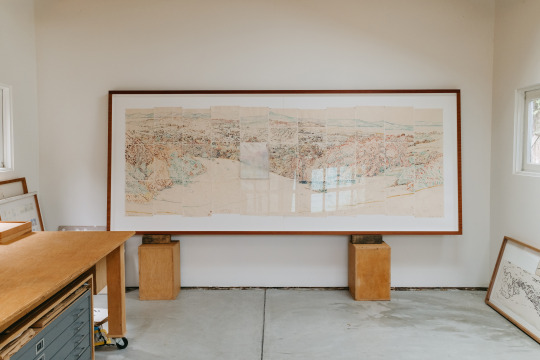
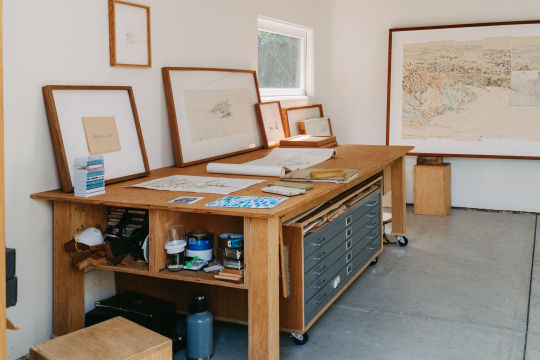


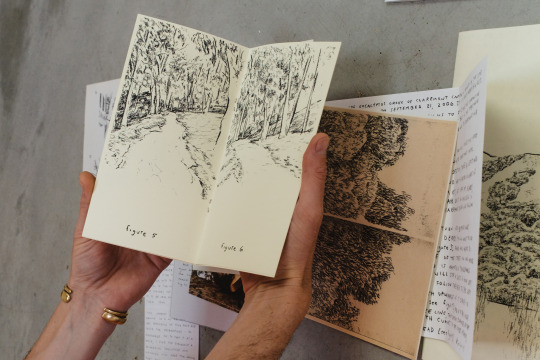






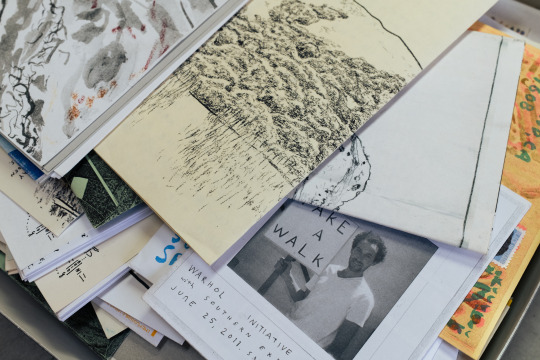
0 notes
Text
Gallery Spotlight: Pt. 2 Gallery

Recently we chatted with Brock Brake, the owner of the forward-thinking, community-centered Part 2 Gallery in Oakland. After growing up in Ohio, immersing himself in skateboard culture, and studying in Chicago, Brock moved to the Bay Area to work as a photojournalist and gallerist. We discussed art, community, and if there is a Part 1 or Part 3, and what they might add up to as a whole.
Studio AHEAD: You founded Part 2 Gallery in 2018. What’s with the name? Was there a Part 1?
Brock Brake: So Part 1 was actually called Athen B. Gallery. It was a combination of two names. Athen was my first partner's name and the B was for Brock or Brake. We opened that in 2015. It is actually right next door to where we started pt.2.
I closed Athen B. in the winter of 2017 due to a difference in partnership. I quickly found a new business partner who matched me on the investment and three months later in March of 2018 we began operating as pt.2. In January of this year we actually took back over the original Athen B. It is called Part 2 Gallery because it is our second gallery. We abbreviate it pt.2 to keep it short. I didn't want it to be Brock Brake Gallery. I don't want it to be about me or for there to be any false sense of celebrity as a gallerist like we see so often today in the art world. When people come to the gallery and ask if I’m the owner I'll usually say I just work here.
SA: Tell us about the artist studios connected to pt.2. What role do they play in defining the gallery and how pt.2 establishes community?
BB: When I was brought into what the building was back in 2014, I saw a lot of potential in all the unused space. I started as a gallery assistant with a space called Lequivie that was in the space before Athen B. It was originally a few artists like Cannon Dill, Brett Flanigan, and a few graff heads in the studios behind the gallery / print shop. As Athen B. grew, I took the time to clear out multiple dirty rooms being used for storage and slowly turned them into studios. More and more people came into the mix and slowly a community started building. Over the course of time, eight studios were established. Mostly individual units, some shared. Around 20 people now operate in and around the studios. All have been brought in through peers. We don’t do open calls or anything like that.
SA: Your recent exhibition “A Weed by Any Other Name” is a direct comment on the Bay Area and its residents—resilient, resourceful! Where is Oakland right now in the arts world?
BB: Honestly it is hard to gauge where Oakland is right now in the art world outside of our Bay Area bubble sometimes. I guess to know where something is at you have to look at what it is. Right now the Bay Area in general is taking an L from an economic standpoint, which is an important part to consider when you talk about the art world. Whether it's all the crime pushing businesses out of the Bay or the various housing issues that are addressed by Liz Hernández and Ryan Whelan's exhibition leading to this economic downturn. But there is something important they also addressed that money can't buy though, and that is how strong and resilient our arts community is. We kind of low key have more and more galleries flying in to do studio visits because they can tell there is something here. I think we have some of the best artists in the world here in the bay. I think a lot of really special people have passed by or got their start here. I talk to people about it all the time but there is something special in the water out here, whether you like it or not.
SA: We agree! It must the water.
We love the videos that often accompany a show. They are casual, somewhat intimate conversations with the artists, who often talk freely about their art. Let us turn the camera around, as it were, and ask you what are your thought processes in putting together an exhibition.
BB: It’s hard to describe what my thought process is when putting together an exhibition. My exhibitions revolve around giving the right people the space to say what they want and to do what they want to do. I feel like every exhibition is completely different and they are always encouraging me to grow. To me that is very appealing as it isn't the same cookie cutter thing over and over. It’s a game I can never win and I'm okay with that.
What drives me as a curator / gallery owner is kind of a long-winded answer. In short, it’s to do good. After working in the art world in various roles since 2010, I felt like the Bay Area didn't really have a serious space for my peers to put on exhibitions, so I made one. I was working at a few of the larger Bay Area galleries in various ways and felt a kind of disconnect from what they were doing and what I wanted to do. At pt.2 you don't need an art degree, rich parents, or an influential social media following. I just want you to be a good person and make good work.
SA: Describe to us what Part 3 Gallery would be like.
BB: Oh no. No Part 3 for me. Part 2 has a good head on its shoulders. If anything I'm trying to just focus on the relationships I'm currently fostering at the gallery. I'm about to be 34 years old. I have a one-year-old who I get to spend a lot of time with. A beautiful wife who’s extremely supportive. A great team of artists. I don't need more like that. I'm trying to mind my business and focus on myself. If something happens more naturally then sure, but for now the mindset is less is more.
Photos by Ekaterina Izmestieva



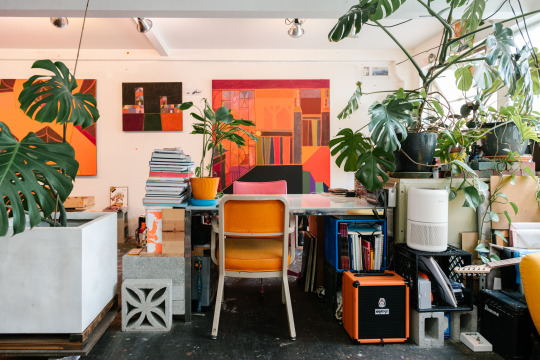

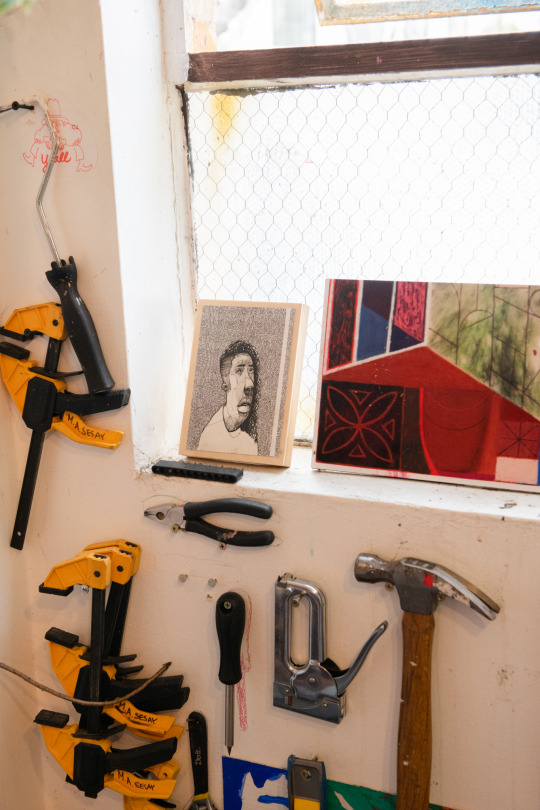
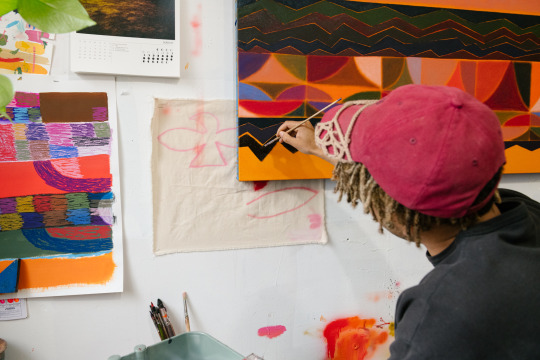



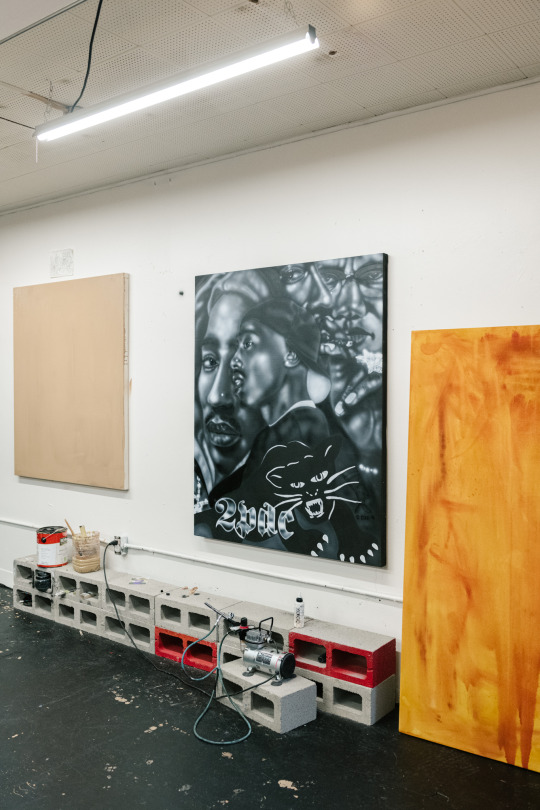


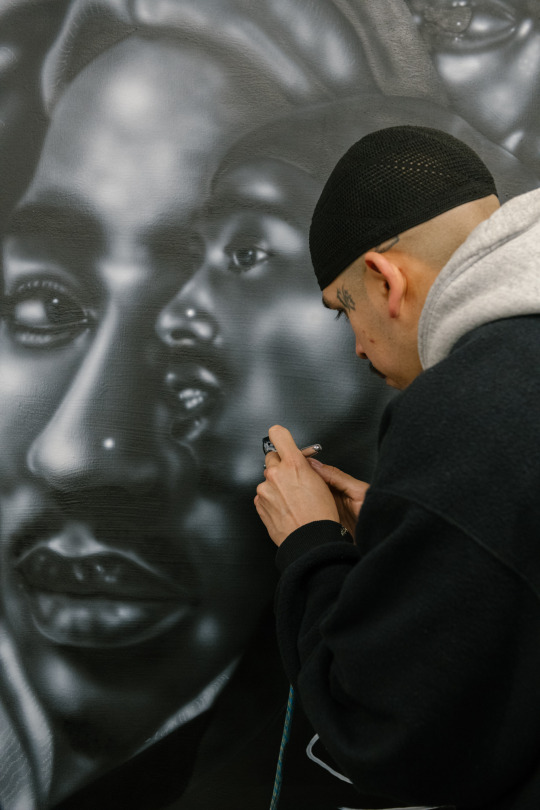
1 note
·
View note
Text
Curator Spotlight: Lawrence Rinder

One of the joys of writing this journal is not just talking to creative people across Northern California, but visiting them. Recently we spent an amazing day with Lawrence Rinder at his ranch in Ukiah. The ranch is what you might expect from a curator known for exhilarating (and sometimes controversial) exhibitions—we were surprised at every turn. Weeks later, we're still not sure what our favorite part was: Linder's hospitality, the collaborate quilt project done on a Travis Meinholf loom (the "Johnny Appleseed of loom makers" according to our host), or the fact that hidden away in the Ukiah valley is a small artistic paradise. But we’ll let the pictures do the talking. And Rinder, who is as eloquent as ever.
Studio AHEAD: What brought you to Ukiah?
Lawrence Rinder: Back in the 90s, when I was a curator at the Berkeley Art Museum and Pacific Film Archive, I used to take weekend trips to the country. One of my favorite places to go was Orr Hot Springs. I came to believe that the hills around Orr Springs Road are one of the most beautiful places in the world. So, when a property came up for sale, right across from the hot springs, I looked into buying it. That place was unaffordable, but it started me on a search for a little piece of land to own. About seven years later, in 2004, I was sitting at my desk at the Whitney Museum in New York when an email arrived from the agent I’d been working with in Ukiah. She’d sent just a few photos of the McNab Ranch property, but her message was clear: this is the place you’ve been looking for and, if you want it, you have to make a full-price offer today. So, I did. A few months later, I left the Whitney and moved back to California to live at the top of this wonderful mountain.
SA: The ranch has become a creative hub of sorts for visiting artists. Does the creative activity at the ranch intersect with your work as a curator?
LR: When I first got the place, it was meant to be a refuge, a place to heal after all the craziness of New York. I spent a year up here more or less alone. That was a big change for me, living so remotely. At first it was a little scary. I really had no idea about how to do anything. And I was afraid of monsters at night, LOL Then I met my partner, Colter, and that helped. But what really brought the place to life and gave it much of the character it has today is a result of inviting two artists to come visit: Jesse Schlesinger and David Wilson. I met Jesse when he was an undergrad at CCA and I was director of the Wattis Institute. For the graduation exhibition, he had installed a little pavilion made of wood that he called The Sun House. I asked him if I could buy it and have installed up here in Ukiah. Jesse set it up in a beautiful corner of the property that we call the Sacred Grove. That piece woke up for me the idea that this could be a place for art.
David Wilson arrived at about the same time. He had been organizing amazing festivals, at places like Angel Island and Tilden Park. He’d invite artists, musicians, craft people, all kinds of wonderful folks and the thing would just sort of happen organically over many hours, sometimes even over several days. So, Colter and I invited him to do something like that up here. Liz Harris performed at night while people were arriving, and you could hear her trippy sounds all across the valley. Paul Clipson screened films on a sheet that had been hung up in the forest. Jerome Waag cooked an enormous paella and roasted a whole wild boar underground for a whole day and night. Gautam Ganeshan performed a morning raga. And so much more. People camped in various spots all over the property. We did a few more of those, and I came to enjoy the feeling of having people around and loved how inspired folks were by the land.
So, we started to have people come up for informal creative residencies. Basically, anyone who asked could come, for as long as they wanted. Sometimes, we didn’t even know who would be up here when we arrived for the weekend. It was a wonderful balance to the more regimented outcome-based administrative work I was doing at BAMPFA, where I had returned as director in 2008. We even built a few more spaces for people to live during their time here: the Forest House, Garden House, and Studio. Now, thanks to Nobuto Suga, we also have a barn with a lovely upstairs writing studio/sleeping loft.
SA: The entire set up is stunning One of our favorites was Paul Discoe-designed “peasant house,” which got us thinking about the role of architecture in curating an exhibition.
LR: The Paul Discoe house was designed, in the style of a ninth-century Japanese farmer’s house (with a few nods to modern times like glass windows and a metal roof), to serve as a little schoolhouse. It has a library, a classroom, and a bedroom for the visiting teacher. Since COVID, it’s been more used a guest house, but I hope we get back to having classes there again soon. The house was initially built as a class project with a group of fifteen people including Colter, Jay Nelson, Andria Lessler, Kanoa Zimmerman, Terri Loewenthal and others. Jesse Schlesinger was the project director. Paul taught every aspect of designing and building in the traditional Japanese manner. They spent the first two months sharpening their tools! Ultimately, the project took six years and involved over two hundred people, basically everyone who came to visit during that time leant a hand in some way or other. Some of the classes we have had in the building are contemporary dance (with Marie Blaise), Japanese woodcarving, flamenco, and conversational Spanish.
As it happened the period of working on the Discoe house coincided almost exactly with my work on the new BAMPFA building, designed by Diller, Scofidio + Renfro. During the week I’d be conceptualizing visitor flow, gallery dimensions, and HVAC systems; and on the weekend, I’d be stomping clay for our TsuchiKabe walls. It was a good balance, mental and physical ways of building. Each project was designed with very different creative aims. BAMPFA was made intentionally non-linear, with a variety of spaces, and occasional bright colored walls to inspire attention and surprise. The Discoe house was made without plumbing or electricity so it would be completely silent and calm, with windows placed to limit direct light, and every element handmade with care to inspire thoughtfulness and loving awareness. Each building was intended to be an engine of creativity, but in very different contexts, one urban-academic and the other for small gatherings in a natural setting.
SA: We love how, even in your leisure time, you are still thinking, interacting with art and artists. What is one exhibition of yours that you feel was misunderstood or did not get enough attention?
LR: So many! Haha. Some of the artists whose work I showed who I wish had been more appreciated include Rina Kimche, Rudolf de Crignis, and Irwin Kremen. Look them up! As for exhibitions, I think BitStreams, which I did at the Whitney in 2001 and which explored the impact of digital technology on art in various media was under-appreciated at the time and, because there was no catalog, has had virtually no afterlife.
SA: You have published a novel and write poetry, and curation and literature have sometimes intersected for you—a few years ago you did an exhibition on Theresa Hak Kyung Cha's Dictee in relation to her other work. Was curating this more challenging in that it was more textually rather than visually based? Personally, I love literary exhibition, but they are rare and feel different.
LR: The thing about Theresa Cha’s work is that it is textual AND visual. Her use of text is informed by concrete poetry, in which the appearance of the words themselves is part of the meaning and affect of the text. Even in her book Dictee, the arrangement of the words on each page is considered visually. Another wonderful example of her profoundly visual approach to text is her contribution to Apparatus, the fantastic anthology of French film theory that Theresa edited. As Theresa wrote, her aim was to find language “before it is born on the tip of the tongue.” She was interested in that shadowy, liminal space of consciousness on the edge of awareness. I adore her work. It is so limitless and resonant.
Another text project I worked on which I remember fondly was with Larry Eigner, a remarkable poet who lived in Berkeley. I worked with him to inscribe one of his poems on the enormous concrete walls of the old BAMPFA building on Bancroft Way. The poem wrapped around the building, using each facet of the façade like a page in a book. It was wonderful.

SA: Finally, tell us an exhibition you’d love to do but have not.
LR: I’d love to do an exhibition of work by the Dutch artist Hercules Segers. I might even come out of retirement for that!
Photos by Ekaterina Izmestieva

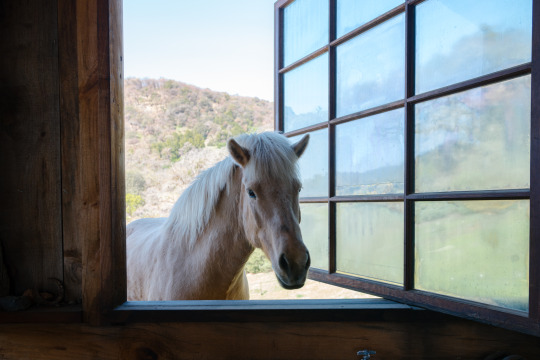

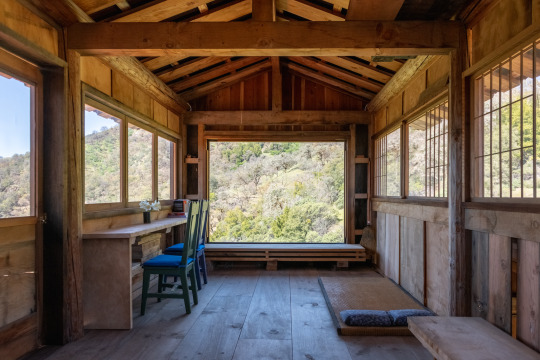

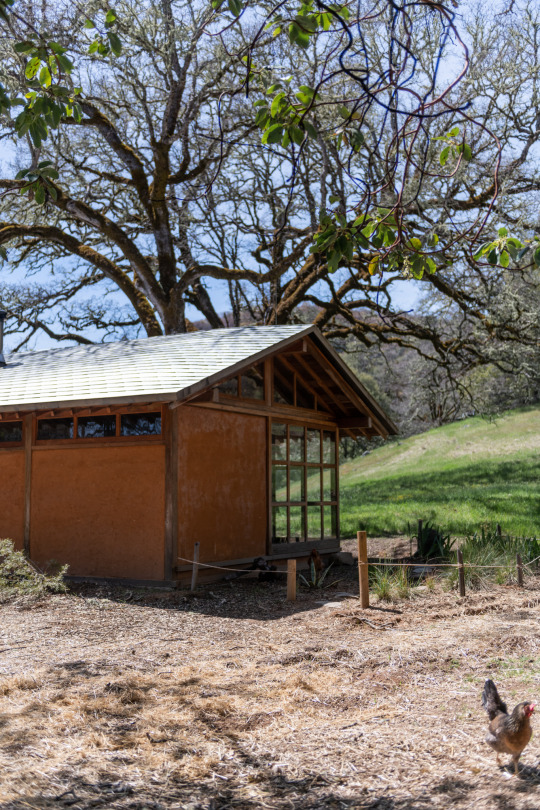
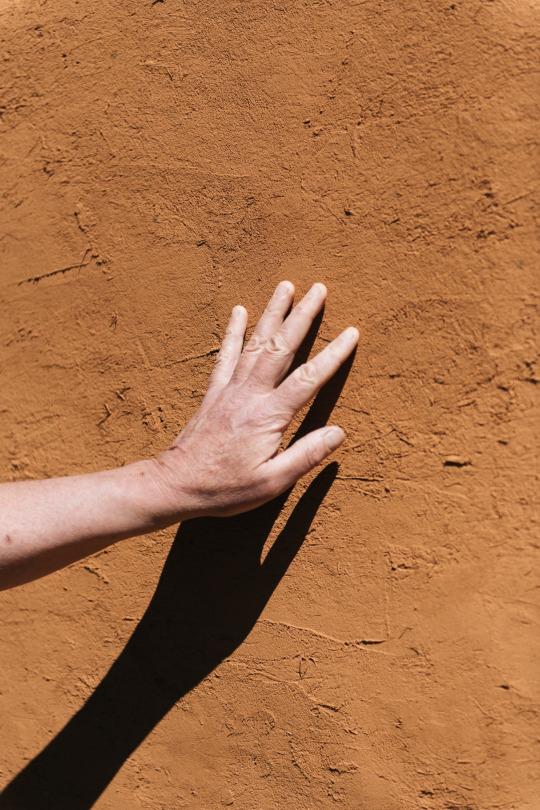


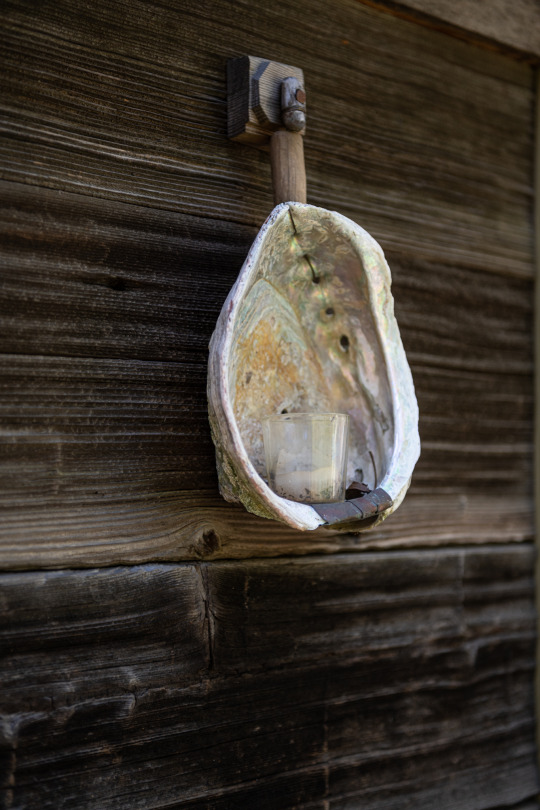



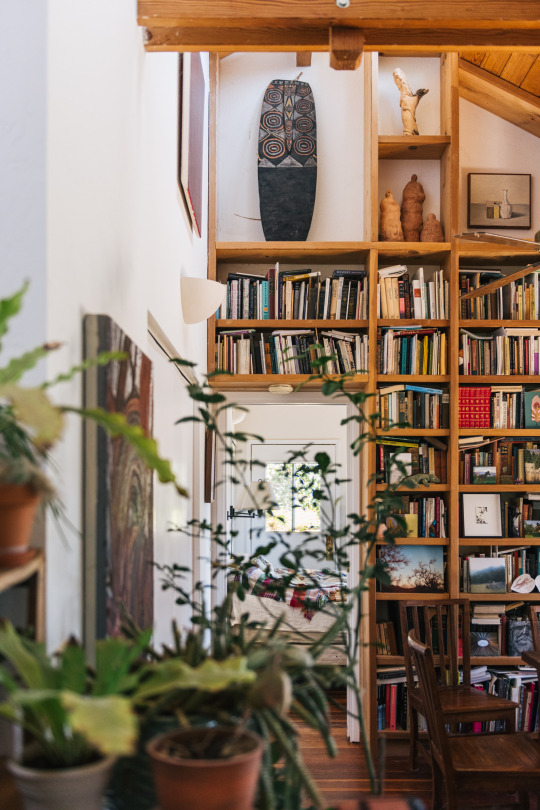
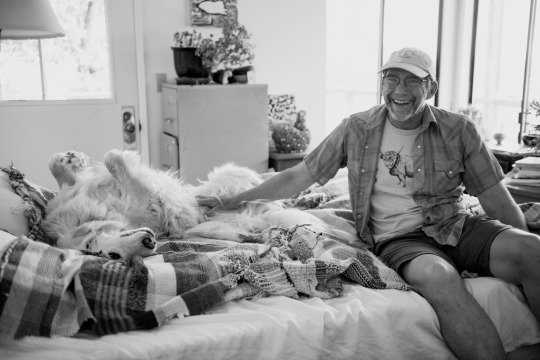

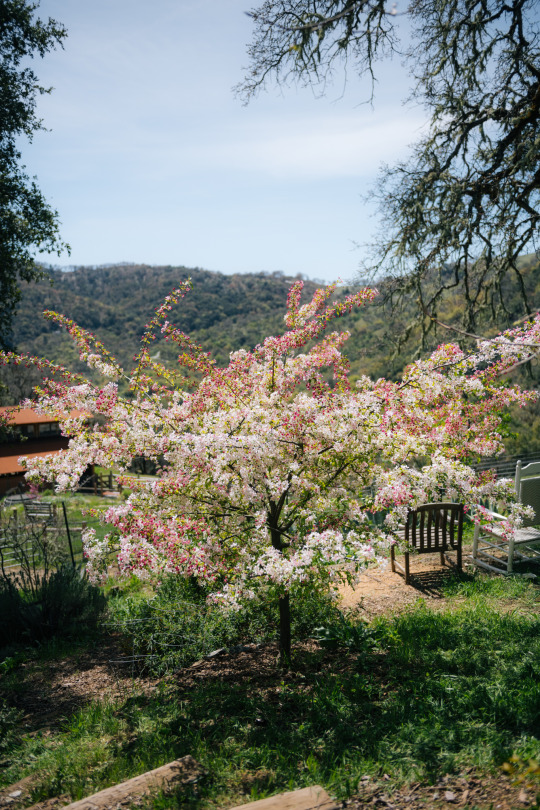
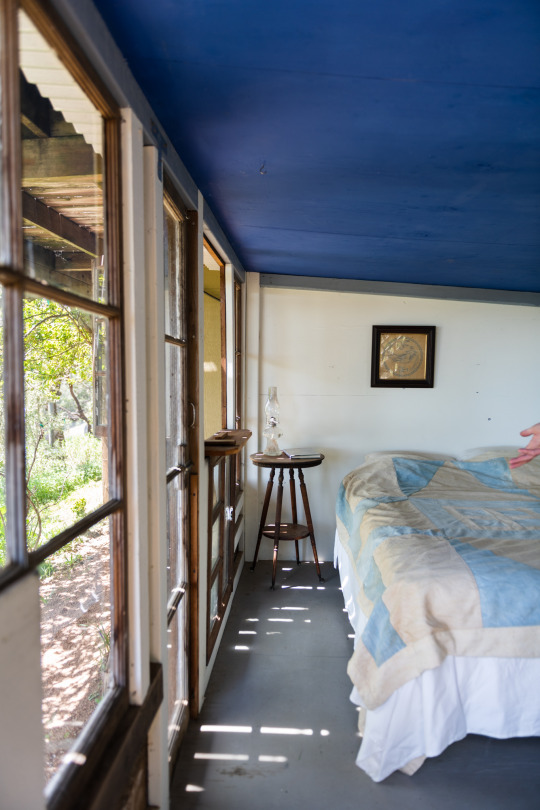

0 notes
Text
Gallery Spotlight: Jeffrey Spahn

This month we chatted a bit with Jeffrey Spahn, owner of – you guessed it! – Jeffrey Spahn Gallery. Our secret is that whether we want a quiet accent piece or a powerful centerpiece, we go to Jeffrey, whose collection of ceramics is both immaculate and encyclopedic. He also has a cat, Rothko, which it turns out is not like having a bull in a china shop.
Studio AHEAD: Tell us a little bit about how you came into the art world and how the gallery was founded.
Jeffrey Spahn: My background is as a professor of multicultural education at UC Berkeley. I then became an attorney who handled estate planning. I was lucky enough to handle estates of high net wealth individuals with art collections, who asked great questions – I saw a business opportunity and I never looked back.
SA: Any specific collections or pieces you've worked with in the past that were especially memorable or noteworthy?
JS: I’ve been lucky to work directly with the estates of many famous artists in the Bay Area, such as Ruth Asawa, Peter Voulkos, Claire Faulkenstein, Kay Sakamachi, Bob Stocksdale, Mildred Howard, Hing Liu, Judy Dater, and Jim Melchert, just to name a few.
SA: We notice a regional tradition runs through a lot of the pieces you sell. Can you speak more about this? We associate this tradition with Northern California, and regional art is integral to the pieces we choose in our designs (personally, we love the Peter Voulkos for sale).
JS: My inventory focuses on American, British, and Japanese post-war contemporary sculpture and design, both large-scale sculpture indoor and out, like that of Alexander Calder, Louise Nevelson, Isamu Noguchi.
Your clients are often looking for unique design objects that add to their sense of place. Because we are based in San Francisco some of our inventory includes Northern California artists, and you have often gravitated towards the best of the best from the San Francisco Bay Area including Voulkos, Viola Frey, Asawa, Jim Melchert, Sandy Simon, Nancy Selvin, Mark Goudy, Liza Riddle, Stocksdale, James Lavera, and many more.
SA: We also discuss Japanese ceramicists often when we are at your gallery. Is there a thread you see that connects Japanese and Northern California ceramicists?
JS: Yes, the Bay Area is part of the Pacific rim and has a diverse group of people including many Japanese artists. Your design often includes a sense of wabi-sabi, organic natural elements, earthy naturalistic design. Ceramics are some of the most beautiful design objects that express these natural sensibilities.
SA: You have curated a few shows both at your gallery and elsewhere. How do you tell a story through the pieces you select? And related, how can buyers tell their stories through pieces they own?
JS: Edit, edit, edit! Storytelling is often about focusing your attention on a specific moment in time or a specific idea. Artists are very clear when they make or design objects, so just listen, and don’t mess it up! I try very hard to not modify, add my spin, “bring it into today,” etc. In a show, when I am trying to tell a story the goal is to be authentic; so, if and when I’m asked by buyers and collectors, I tell them their collections should be authentic to their own values and who they are.
SA: Have you ever broken a piece?
JS: I don’t know why people often fear ceramics! Ceramics are some of the most durable art you’ll ever buy. Some of the most fragile artworks are paintings, which you can stick your finger through! Many ceramics have been fire-hardened at 2000 degrees or more and even if you break them a good restorer can put them back together. Every ancient culture throughout time is known to us through their ceramics which have survived thousands of years. One thing I encourage all collectors to do is to pick them up, to experience both the visual and tactile delight. Many of these pieces are functional, as vessels, used to serve food, display objects, flowers, and become an integral part of your life.
SA: Let us know the Instagrams of some makers in Northern California we should follow.
JS: Two artists: Liza Riddle and Mark Goudy, both ceramicists
Photos by Ekaterina Izmestieva
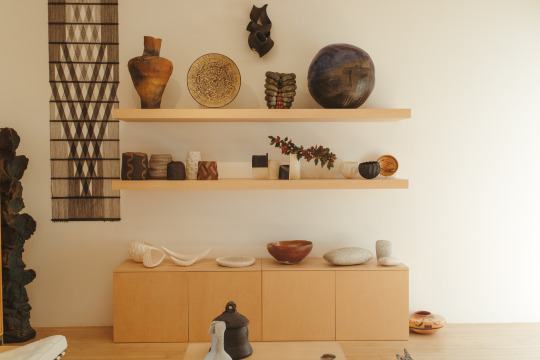

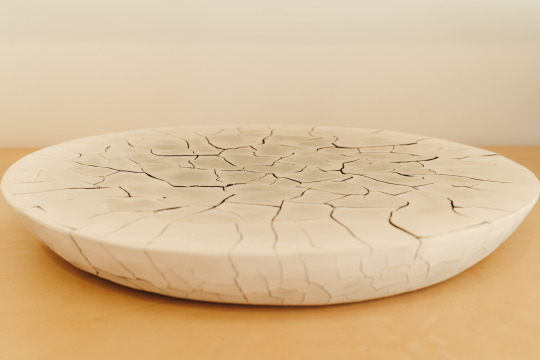


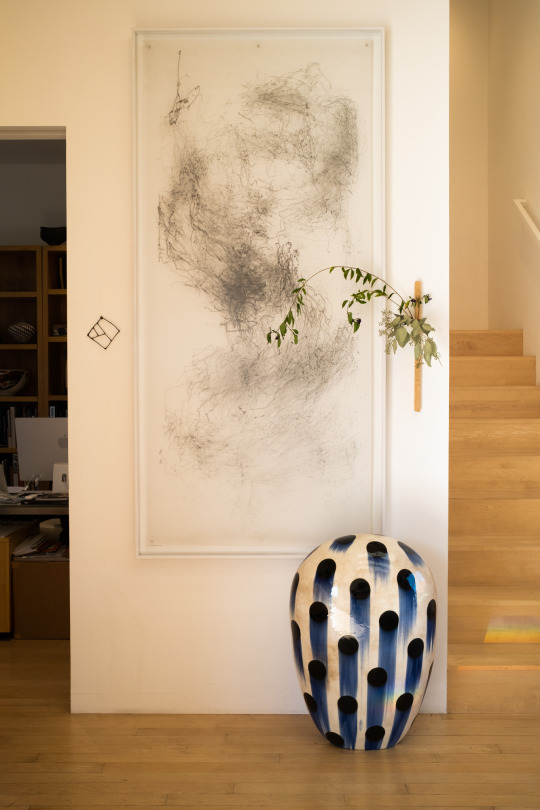

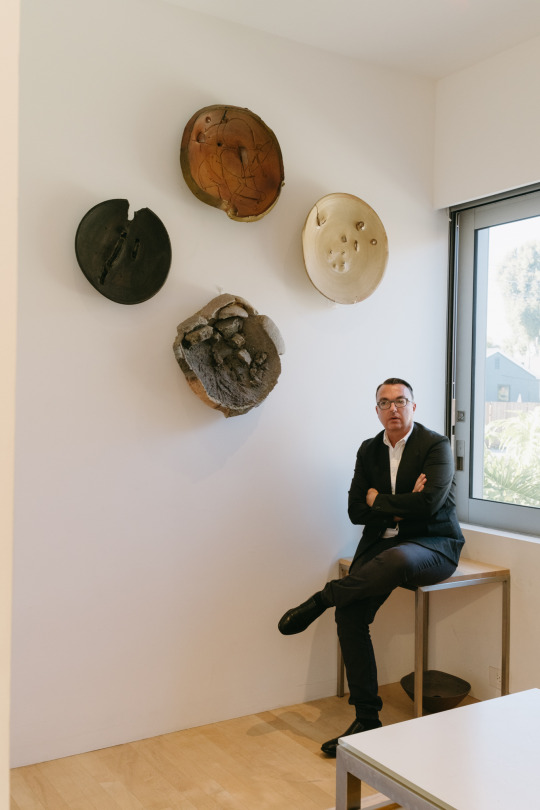

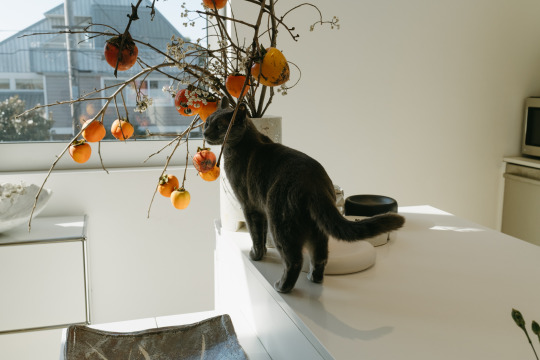
0 notes
Text
Studio Spotlight: Creative Growth

This month we spoke with Ginger Shulick Porcella, the new executive director of Creative Growth, which since 1974 has given artists with developmental disabilities a space to grow and be part of the larger art community. What we love most about Creative Growth is not just how community-forward it is, but also how it shows by example the power of art as communication. We talked recent exhibitions, how arts and disability intersect, and how curators can be the subversive force in the institutions they are part of.
Studio AHEAD: How did you get here? We mean to California. You started at Creative Growth a few months ago having been executive director and chief curator at Franconia Sculpture Park in Minneapolis. Perhaps you can share your journey with us.
Ginger Shulick Porcella: I've always been somewhat nomadic in nature, using my past experiences and the communities that I help cultivate to inform my next step. I've always gone where there is the greatest need, and for the past 15+ years I've focused on leading contemporary arts organizations through major transitions, which typically involves healing a wound or trauma within the organization and/or community – all through the lens of contemporary art. My journey has been simultaneously circuitous yet direct in nature – leading me to this exact place and moment in time to lead Creative Growth, an organization I've long cherished and admired. I've lived coast-to-coast and everywhere in between, but being back in California, and the Bay Area in particular, feels like I've finally found my forever home.
SA: We see the term "outside art" a lot, especially applied to Creative Growth's artists. What is the curator's role in closing the gap between the mainstream art world and those who have been historically left out of it? Does the curator just curate or does the curator produce–through the act of curation–as well?
GSP: We typically use the word "self-taught art" instead of "outsider art" because "outsider art" implies an "us" and an "other." That being said, I think one of my primary roles as a curator is to use my platform and privilege to amplify the voices of those historically underrepresented in our nation's cultural institutions, whether it’s artists with disabilities, women, queer or trans artists, artists of color, Native artists, etc. I am not an artist; I'm an arts administrator and a curator to my core, but I guess you could say that my art is curating: in making the impossible possible and in bringing what I call "unexpected audiences" and communities together, to build empathy through art.
SA: Bouncing off that: what are the steps institutions can take in changing this?
GSP: I think that more cultural institutions need to identify and eliminate the physical and intellectual barriers for cultural participation. It seems so simple but it’s really one of the most radical things that organizations can do, because most museums were designed to codify that ideal of us/other, haves/have nots, outsider/insider. This nonhierarchical approach is antithetical to the very fabric of those institutions. Which is exactly why I've chosen to extract myself from the museum world and better utilize my skillset and passion in the nonprofit arts arena where my values are mirrored by the mission of the organization.
SA: We love the pieces in a new exhibition on Joseph Alef ("Recent Abstraction") done in an abstract expressionist style and very colorful and vibrant. Can you speak a little bit about the paintings, Alef's creative process, and how the exhibition came about?
GSP: Yes – that work by Joseph Alef is stunning! Joseph has been working at Creative Growth off and on for over 20 years now, and his style definitely embodies what the exhibition "Recent Abstraction" is all about. His works are so gestural and active and alive; and there's really nothing like seeing his work in that large of a scale. Many of the artists at Creative Growth work in abstraction: it really gets to the root of pure artistic expression, joy, and that magical energy that the artists embody at Creative Growth. Our gallery director Nadia Ghani identified the need to highlight these artists working within similar techniques and styles through a curated exhibition. And certainly so many audiences and collectors have positively responded, since a majority of the works on display have already been purchased!
SA: That’s amazing! What is an exhibition you'd love to do–even if it may never happen?
GSP: My dream exhibition at Creative Growth would be to do a celebrity exhibition with alumni artist Kim Clark. Kim was incredibly prolific and practiced at Creative Growth for 20 years. Her work is completely influenced by pop culture and has so much fun and humor in it. I recently purchased a work of hers featuring the cast of ALF from the 80s! I think doing a solo exhibition of Kim Clark's work in Los Angeles where we can invite all of the celebrities that she's documented over the years would be incredibly fun.
SA: Finally, who are some lesser-known Creative Growth artists you'd love to put on our radar? This blog is all about Northern California as a community–we want to support our artists!
GSP: Two of the artists I'm most excited by that have a big career ahead of them are Nathaniel Jackson and Latefa Noorzai. Jackson came up through our Saturday youth program and now is in the adult day program at Creative Growth. He paints these amazing portraits of Godzilla that have become increasingly abstracted to the point where they're now rendered in these delicate watercolors. We recently showcased the work of Jackson at the Outsider Art Fair in NY and he was definitely a hit. All of his work sold to different collectors so it was exciting to see people so excited about the work. Noorzai has been working at Creative Growth for the past ten years and is an Afghani refugee. Her portraits are simultaneously whimsical yet haunting, and her recent series of soft sculptures really make these characters come to life.
Photos by Ekaterina Izmestieva
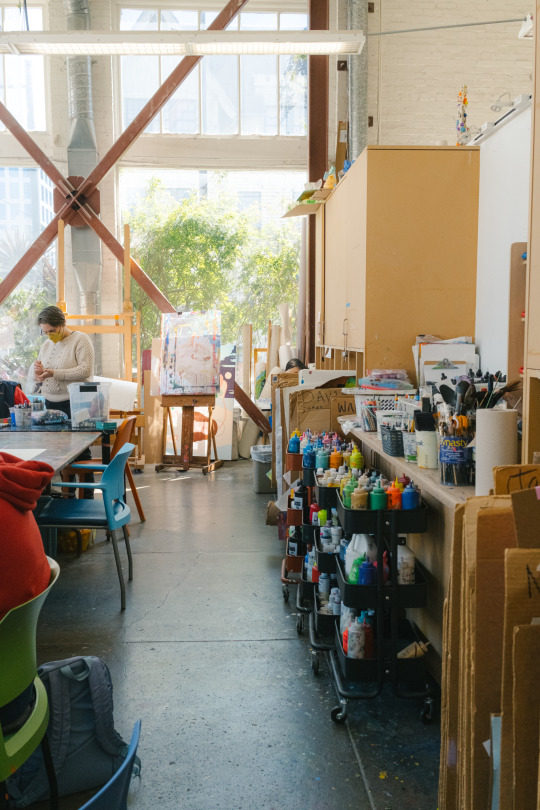


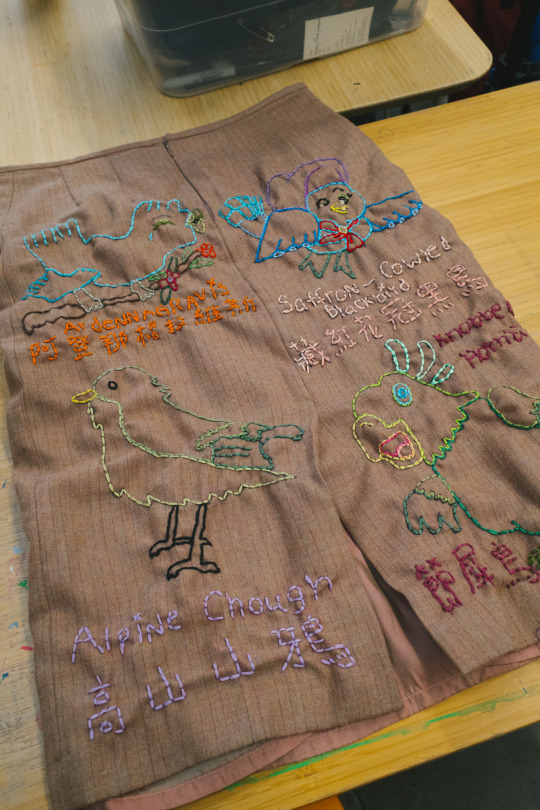




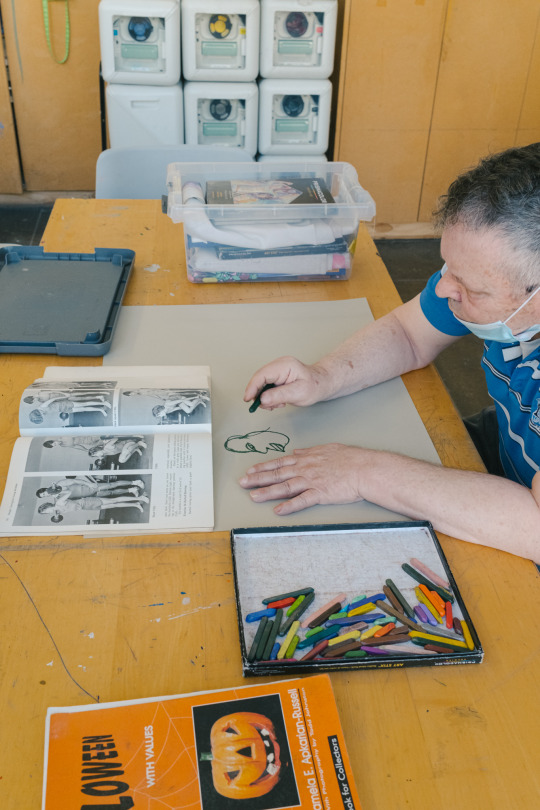



0 notes
Text
Artist Spotlight: Cross Lypka

Cross Lypka is a collaboration between Kyle Lypka and Tyler Cross, two Oakland-based artists whose sculptural work was recently the subject of an exhibition at one of our favorite galleries in California: Blunk Space and part of our own exhibition Same Blue as the Sky. It's appropriate that some of their ceramics look like letters of a lost alphabet. These pieces evoke memories almost-recalled, feelings not quite articulated, the indescribable nearly described. Maybe ironic then that Kyle and Tyler are so good at talking about their work, and can casually let loose a profundity like "Love can rupture the self in a way nothing else can." We'll shut up and let them speak:
Studio AHEAD: You suggested I read Byung-Chul Han's Non-Things. I liked this sentence: "The work of art has two aspects, one that is turned towards representation and one that is turning away from it." I see this in your sculptures, which sort of resemble a nameable object and sort of resemble something else, something that might not yet have a name. Can you speak of this play between representation and non-representation in your art?
Cross Lypka: I think the sculptures end up having a visual uncertainty because Tyler’s drawings that they originate from come out of a very unknowable place, one that I can never really have access to, and that he doesn’t have words for. This gives the final works a sort of secret, something unsayable. The representational elements in the sculptures are allowed to circulate freely without ever being stopped by any actual representation. They come from a very different place than information does, and we hope that this allows the work to, as Han would put it, “linger” with the viewer.
SA: Han sees modern life as growing increasingly digital, and thus less and less material. Art can counter this process—you can touch it! But actually you can't, because in museums and galleries we are not supposed to touch art, and there are ropes, lines, guards, and sensors preventing us from doing so. In some ways, the gallery replicates the computer screen. What is an artist to do?
CL: It might be more important that the art look like it has been touched rather than actually being able to touch it. Touching the sculptures throughout their creation process is very pleasurable, and we hope that pleasure is felt when viewing them. There’s really no way around it, but once the art enters the space of a gallery and museum it becomes a commodity and that’s really why it can’t be touched. As the world becomes more digital it’s a great time for artists to reconsider the “hand” in their work, but everyone will have to figure that out for themselves. It’s a tricky conversation to have, I wouldn’t want to prescribe anything for anyone, but I know that for us the materiality is paramount.
SA: OK, enough about Han’s book! I want to talk about materiality in a different way. When Studio AHEAD designs, it is always with an eye towards representing Northern California through its materials—redwood, stone, wool. You two use a lot of glass, glaze, ceramic. What is your thought process behind choice of material? What do you hope such materials say?
CL: The reason the materials we use are so important to us is because of the innate resistance they have, but through their resistance they sort of seduce you. Ceramic clay has a memory, so if you bend a piece of clay when it's wet then bend it back, as it dries it will bend back towards its original memory. So as a sculpture dries it tends to twist and pull itself “out of shape.” This continues through the firing process and in the end gives them a sort of life of their own; they have their own will. The glazing has its own type of resistance or negativity, which we play with in how it's formulated and how we fire it. We increase the flux and decrease the refractory components of our glaze, then we over-fire them. This results in the glaze liquifying and running down and off the forms. The whole process works when there’s the right balance of imposing our will and then letting the material/process negate that. These materials really lend themselves to something we’re interested in, which is the unifying of form with its dissolution.
SA: Your pieces are truly collaborative efforts. Any tips to other artists who might struggle with this aspect of design?
CL: It all comes down to specifics, so it would be hard to give any advice broadly, but the way we’ve learned to work together just echoes the way we’ve learned to work with the materials. Knowing when to enact your will and when to allow the other to enact theirs. If this is done in the right balance it should feel like no choices were made at all. It’s easier said than done for sure, but practice and patience are key, and of course love is most important. Love can rupture the self in a way nothing else can.
SA: A lot of your art is two separate pieces that—without merging together—look as one piece when viewed overall. Is this intentional and does it speak to who you both are as two people collaborating and almost being one artist?
CL: That may have started by chance when translating Tyler’s drawings into three dimensions. I started stretching them out and then back towards one another, this eventually ended up with the two original forms facing one another, which created a third form with the negative space. This was immediately intriguing to us, as it seemed to speak to concepts we end up circling around. We became interested in the difference between things that appear to have symmetry or appear to be doubles. The hand in the work along with the material itself make it so perfect symmetry can’t happen; but the nearer things are to one another the more pronounced the differences can be. This closeness of difference with the discomfort of near twinning or symmetry gives them a tension, along with the suggestion that at any moment everything is reversible.
SA: How has your own collaborative process evolved over time?
CL: Early on it was mostly stumbling on and off the path, totally blind, but lots of fun. I think the real breakthrough was when I fully accepted what Han describes as the “gift of the other” through an act of “willful self negation.” This happened again by chance, but probably more frustration, and it was some time after the fact—and through reading some of Han’s books—that it became clear why the work changed so profoundly and started to look the way it does. Basically I stopped trying to insert my subjectivity into the process, and I only worked from Tyler’s drawings of which I have no input. In turn he let me take over and do all the sculpting. There’s this question of fidelity to the original drawing that I go through when translating the two dimensional drawings into three dimensions. I’ve found that if I insert myself too much it fails, but if not enough it also fails—again it's finding the right balance so that in the end neither of ourselves is too much in the work.
SA: Finally: The titles you give your pieces are cheeky and intriguing. What makes a good title? What do titles add or take away from how someone views the piece?
CL: For us titling is always tough because the work has so little to do with information or language that it feels false putting words to them. That said, simply having everything be “untitled” feels tired and cumbersome when you need to refer to them. So what we’ve come to do is just both keep a list of words we like for whatever reason and we just sit down and start to mash them together along with whatever else might be around. It really has no bearing on any meaning to the work itself, it's more like a very short poem than anything else. Titles have their function, for some people they’re part of the whole, and they can be really great; for others just a stand in to reference the work.
Photos by Tyler Cross
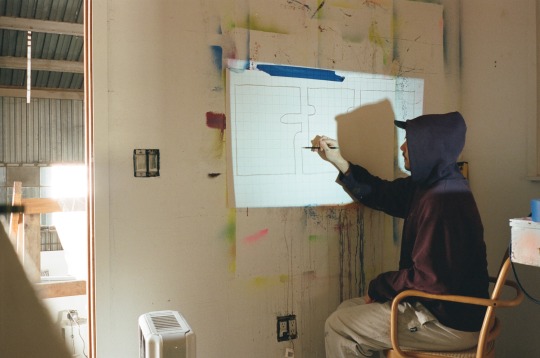
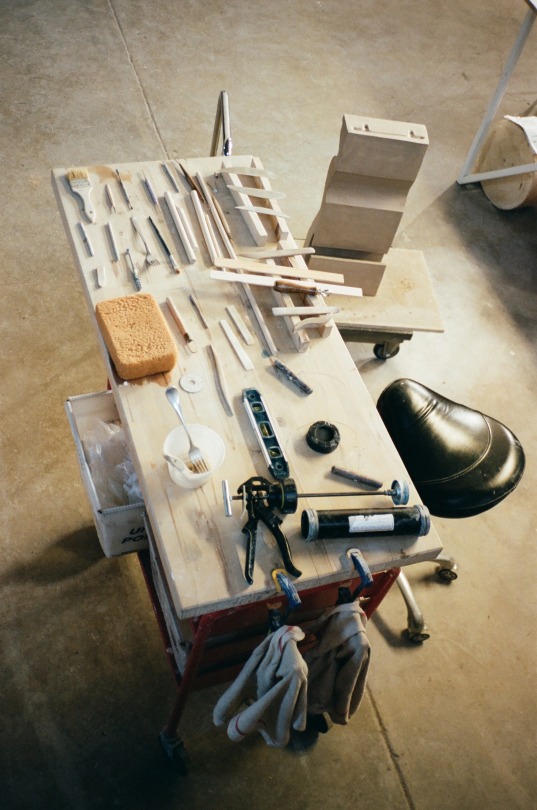
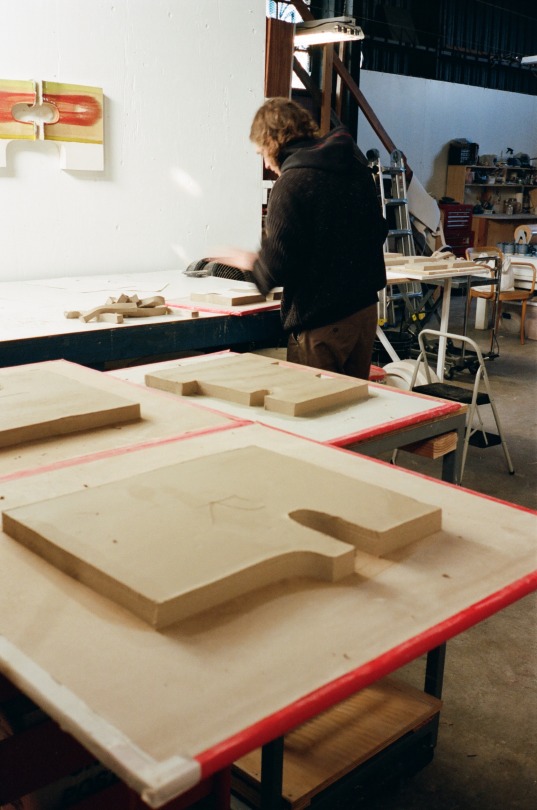
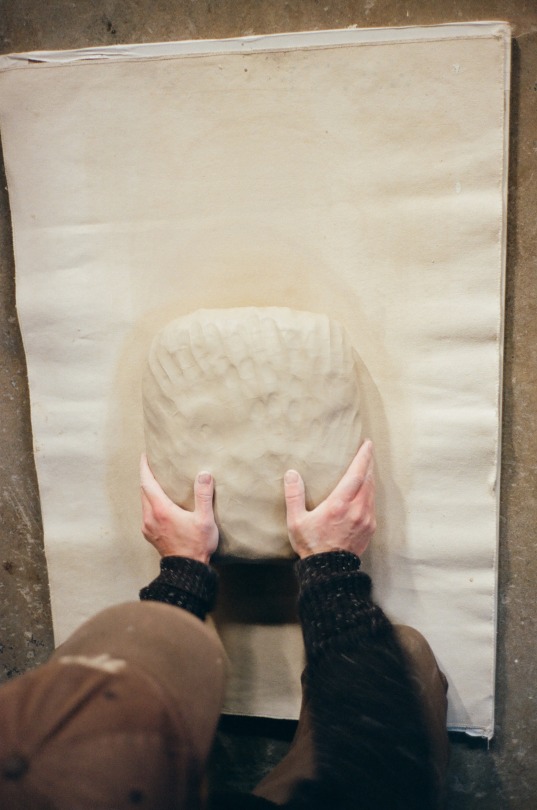


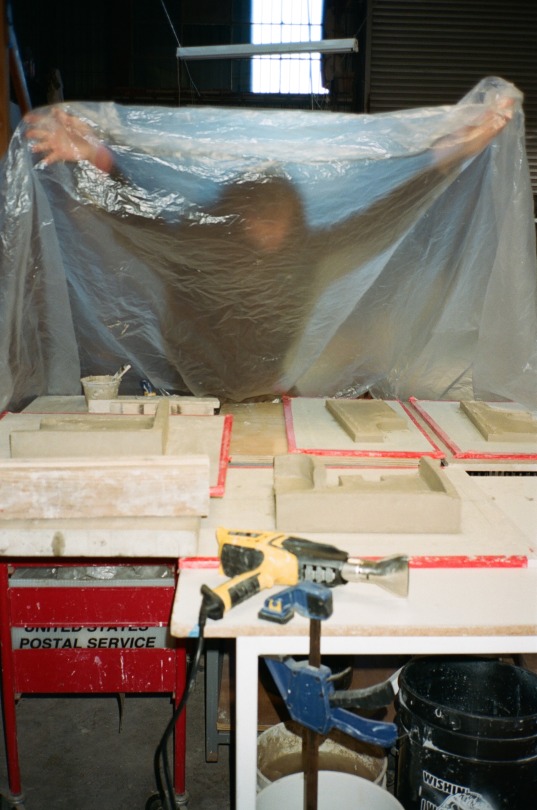
Photos by Leslie Williamson

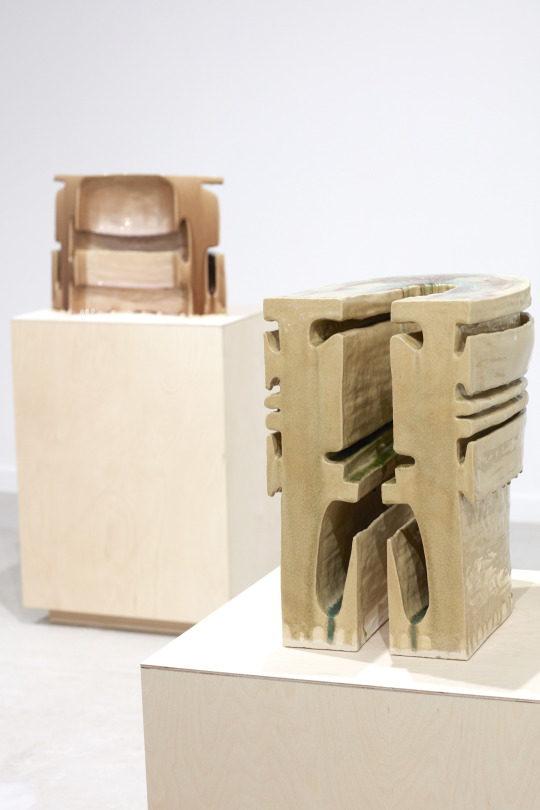

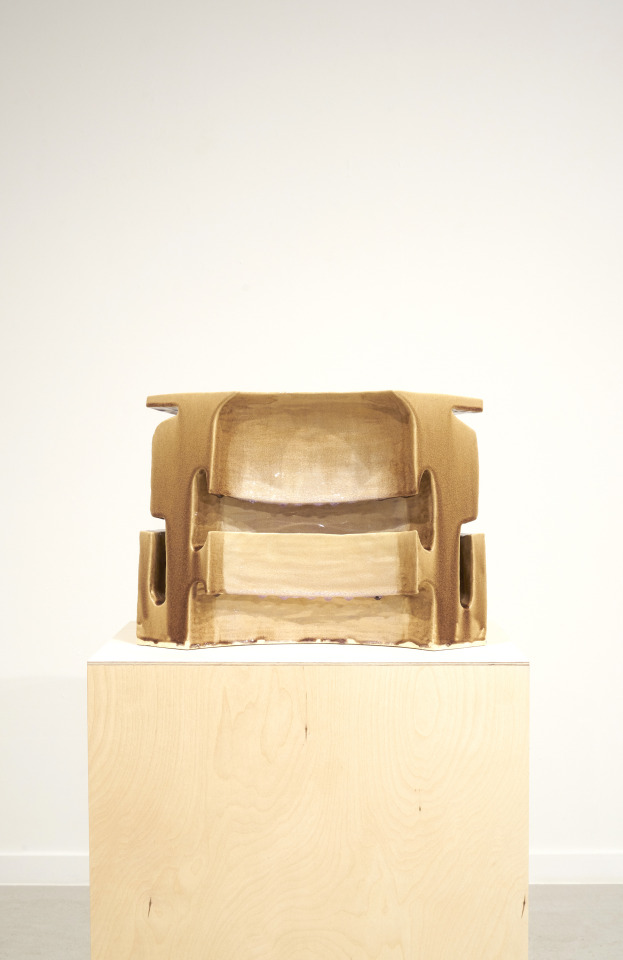
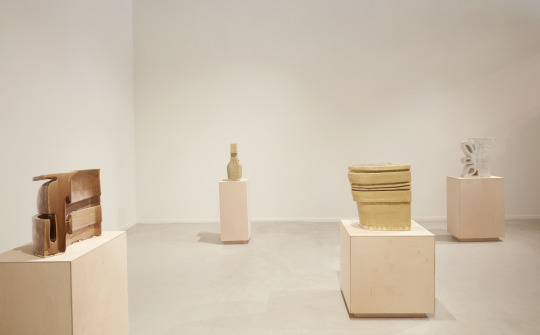
0 notes
Text
Artist Spotlight: Leslie Williamson

Leslie Williamson is a photographer of interiors. We mean this literally – in books like Still Lives and Modern Originals she photographed the studios and homes of iconic artists, including some of our Northern California favorites – but also figuratively, because what is remarkable about Williamson is her ability to touch upon the life of a space, or as she calls it, the soul – the part that offers a glimpse of a person's inner world, even when that person is no longer part of this one. In speaking with her, and looking at the mysterious, quiet, strangely emotional places she has photographed, I kept thinking of Gaston Bachelard's maxim in The Poetics of Space: "all really inhabited space bears the essence of the notion of home." Flip through any one of her books, and you will see how such notions take shape.
Studio AHEAD: Let's start with your essay "Doc's Lab," published a few weeks ago in a recent WildSam guide, Big Sur & HW 1. Tell us about it and what draws you to this particular landmark in Monterey.
Leslie Williamson: It’s funny how that came about. I became a little enthralled with Ed Ricketts and his Pacific Biological Laboratories when I moved to Monterey in April 2020 (yes, a pandemic move…). I am sure it won’t surprise you to learn that when I am in a new place, I research “house museum” to find what is around me, and when I did this in Monterey, Pacific Biological Laboratories came up. I have never read any Steinbeck so I wasn’t familiar with Ricketts and his story, but with the quiet of the pandemic I soon became a fan. Ricketts is such an inspiring character! It’s no wonder he was Steinbeck’s best friend and muse.
Anyhow, I tried and tried to visit Pacific Biological Laboratories throughout the pandemic but it was always closed. Finally one day, as I was on a walk, the door was open and the nice docent let me in even though I didn’t have a reservation. Oh my goodness that space, it gave me goosebumps!!! It is just so special – steeped in history on a few different levels: early 20th-century Cannery Row and the PBL/Doc Ricketts era and through to the birthplace of the Monterey Jazz Festival and the men’s club that left it to the city of Monterey.
Of course I photographed the space and my plan was to write an essay to accompany it that would go on the Still Lives Portal on my website. I have begun sharing my stories in real time there. Happily the WildSam project seamlessly dovetailed in unexpectedly. I am thrilled they wanted to publish my essay in their 50th WildSam guide. I hope people will read the essay while looking at the images. It will really bring it to life.
SA: While we're talking about places, I want to mention a photograph you took that I find so compelling: of JB Blunk's Moongate sculpture that leads to JB Blunk's house. We've been to the estate, and to get there you have to go deep into the woods of Inverness, along a windy road up a steep mountain far from everything, and there is a sense of the space caught unawares, as if no one is supposed to see it. I'm not really sure this is a question! But maybe you can speak about this feeling; it's very powerful.
LW: Thank you! It is a special place for sure. I experienced that same feeling on my first visit. Somehow my emotions come through in my images a lot of the time. I’m not sure I can say more than that. It has always been that way.
SA: I love the home libraries of various Californian luminaries that you shot in Interior Portraits – partly because whenever I'm in someone's house for the first time I head straight to their bookshelf, and partly because they're incredible spaces. Ray Kappe's library, with its bright blue cushions and the bamboo forest outside, shows his relation to reading. What sort of objects "speak" to you as the kind that tell a story, and how do you photograph that object in way that helps it best tell its story?
LW: First off, can I just say I love libraries too…so much. There was a time when our bookshelves were a window to our mind, heart and soul. I just added a Bibliophilia section on my SL Portal that shares people's bookshelves. I always photograph them and they never make them into my books so I decided they needed a venue of their own.
As for other objects that speak to me, I never know what they are going to be. It is different for every person/space I am in. I generally just trust my gut. From Una Jeffer’s narwhal tusk, to Georgia O’Keeffe’s record collection, I seem to be able to sense where there are meaningful stories.
SA: What role does writing play in your photography, and vice versa?
LW: My writing is still a surprise to me. I see it as in service to my photography; but having said that, the "Doc’s Lab" story ran in WildSam with none of my photographs, so maybe that is evolving? When I wrote Handcrafted Modern, it was a bit of an unexpected turn of events that led me to writing the book, as well. But in hindsight, it was the magic combination of expression I didn’t know I was looking for. The photography always comes first and I let my curiosity run rampant as I shoot. Then, after I have edited the images, I hone in on the stories I want to share in the writing. That is the general scenario my process takes.
SA: Speaking of which, you've now published four books. Tell us a little bit about this process – whether you've a vague idea for each project... or how you build a narrative between each space photographed ... maybe a hint as to the next project you're working on��..
LW: The process of creating my books has evolved quite a bit since Handcrafted Modern. I began just because I wanted to see the spaces of my favorite architects and designers and this evolved into a plan to create a library of how creative people live in the 20th/21st centuries. And that is still happening, but I realized pretty quickly that the discernment of my choice of spaces to photograph is very specific. I am looking for what I call “soul spaces”: spaces that are still imbued with their inhabitant’s soul if they are no longer with us and an innate expression of the owner if they are still living there. There is always a certain je ne sais quoi that I am looking for. I know it when I see/feel it. But I am not sure there are words to describe it.
As for what’s next, I am looking to more shows in art galleries and museums. There is a particular project I am just diving into that will be in a major museum in a few years. I can’t say more. And of course there will be an accompanying book. Creating books is in my DNA.
SA: Finally, pretend you are not Leslie Williamson and that Leslie Williamson comes to one of the homes you've lived in – any of them from your whole life – to photograph it for Still Lives: The Sequel. What room would you want her to capture? What is in it?
LW: Oh wow…what a question! I am not sure any of my former or current homes would warrant being included in one of my books. But I do wish I could time travel back and photograph all of my former living spaces starting with my childhood home, where my father still lives, before we remodeled it in 1976. I can’t really remember it before that and am curious what it was like in its original state and how my parents had it set up, what objects they had, etc. I also wonder if there is an evolutionary through line of my own that would be evident in my own bedroom/homes throughout my life starting from my first bedroom. Like artists who make a portrait of themselves once a year, I wish I had a portrait of my living spaces for every year. I would be fascinated to see that, just for my own curiosity and self learning.
Photos by Leslie Williamson


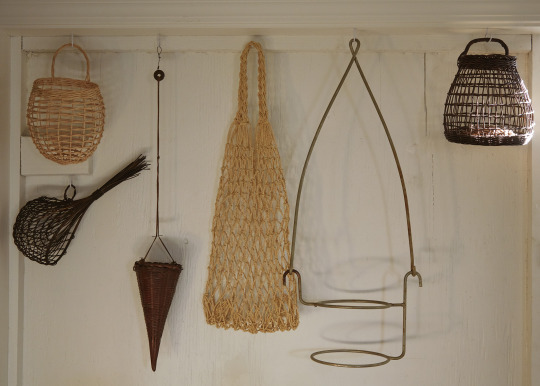
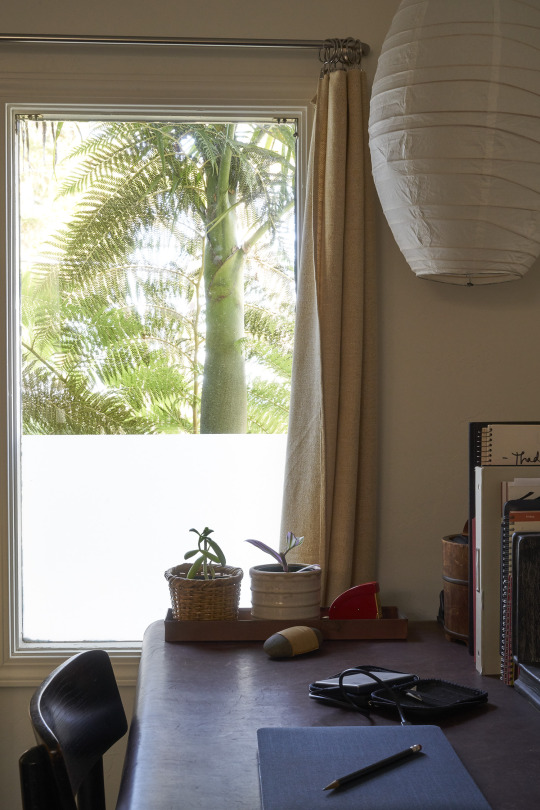
Leslie Williamson’s home in Monterrey, CA.

“The Party Room” at Doc’s Lab on Cannery Row in Monterey. Originally the home of noted marine biologist and Steinbeck muse Ed Ricketts.

Detail in Ed Rickett's former home and business, Pacific Biological Laboratories, on Cannery Row. Monterey, CA.
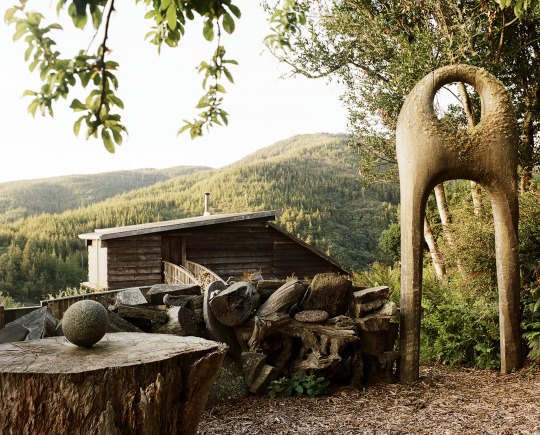
JB Blunk’s ‘Moongate’ sculpture and his home in Inverness, CA.

Detail of the living and loft area in JB Blunk’s home.

Artist and AIDS activist Derek Jarman’s library at Prospect Cottage, his home in Dungeness, UK.


The kitchen/greenhouse and a longe area in the home of artists Evan Shively and Madeleine Fitzpatrick. Marshall, CA.
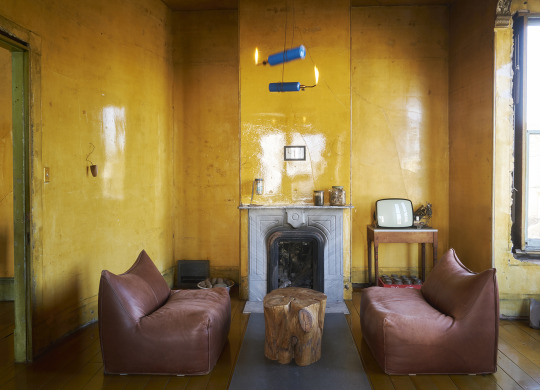
Artist David Ireland’s sitting room in his home and masterwork, 500 Capp Street. San Francisco, CA.

Stair detail in artist Jesse Schlesinger’s home. Sausalito, CA.
#leslie williamson#jesse schlesinger#david ireland#madeleine fitzpatrick#evan shively#derek jarman#jb blunk#ed rickett#Studio Ahead
7 notes
·
View notes
Text
Mark Adams: Northern California Legacy

There is a moment -- when you are alone in the house, and you sit at the kitchen table as the daylight begins to fade and each passing second brings forth a new color with the motion of the shadows--when it seems you have caught light in its private life. This briefness is a type of intimacy. And before you can take a photo, or find the right words so that later you can describe to friends a scene that words cannot describe, the moment is gone, and you are left with a memory already fading into the same darkness that fills the room.
Mark Adams, who died in Noe Valley in 2006, spent the latter half of his career painting this moment. In a series of watercolors from the mid-1970s to the late 1990s, he captured the fleeting effects of light on plain objects (a glass of water, a metallic bowl) with vivid expanses of color segmented by a shadow that stretches across the canvas, as if to remind us of the encroaching dark.
These quiet, reflective paintings had a public start. In 1948, Adams moved to San Francisco and began designing window displays for Gump's Department Store. He left the city in 1955 to spend four months apprenticing under Jean Lurçat in France. Lurçat was a renowned artist and weaver instrumental in the mid-century tapestry revival; his Paris was that of Matisse and Renoir, and it was into this intellectual tradition Adams was brought during Lurçat's tutelage. In the use of bold contrasts and strong shadows, one can see the influence of Lurçat's tapestry designs on Adams' later watercolors. When Adams returned to San Francisco, a series of large-scale public art commissions followed, including tapestries for the international terminal at SFO, the Fine Arts Museum, and the Public Library. Many of these feature large floral scenes in bright colors; later he pared these gardens down to a single stem floating in a still life vase.
In the mid-1960s, as city planners began laying down tracks for the subway system, they envisioned what might be called a Museum of Modern (B)ART. Each station was to have art selected by that station's architect, and the stations were to cover the entire Bay Area. As funds ran out, the plan was never fully realized, but Adams contributed a mosaic to MacArthur station with Matisse-like cut outs. Increasingly popular and sought-after, Adams turned away from public works in 1976 to focus on watercolors. If any of his commissioned pieces hint at this sudden shift, it would be the stained glass designs for Temple Emanu-El and Grace Cathedral. In these, one glimpses the poetry of his later watercolors, where inner clarity allows light to shine through.



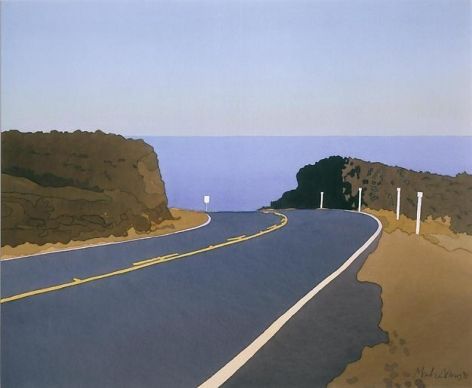

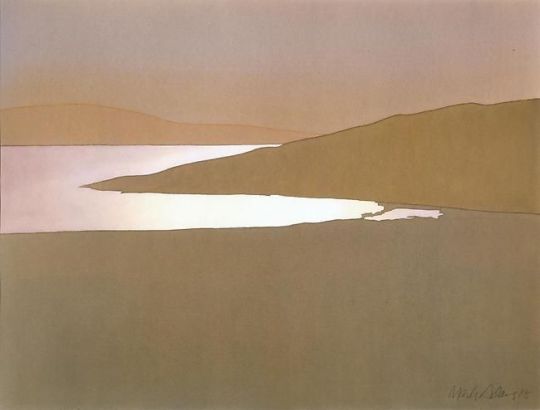




Adams, 1979 Tapestry,
From the Collection of the Stanford Library of Art and Architecture.



Adams, originally done in the 1960′s and added onto in the 1990′s, Painted Mural,
MacArthur Bart Station.
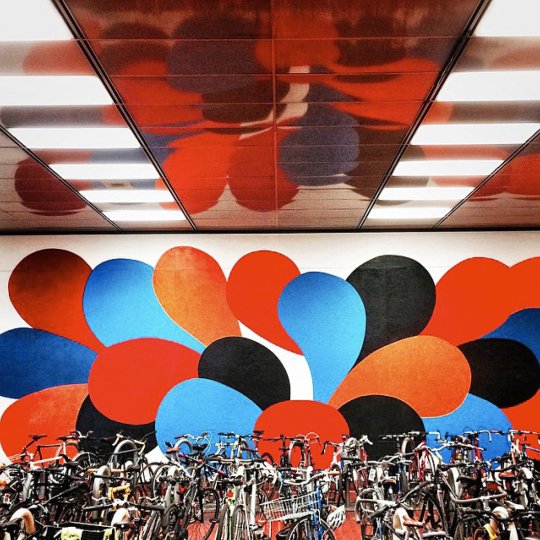



Adams, 1972 to 1975, stained glass, Temple Emanu-el.
#Studio Ahead#mark adams#jean lucrat#california: a journal#northern california#northern california artist
1 note
·
View note
Text
Druid Heights: Northern California Legacy

Go north of San Francisco, through the woods of Marin, up the southern side of Mount Tam, and you may find what remains of Druid Heights. This is the name of the bohemian community that settled there in 1954, led by poet Elsa Gidlow. Gidlow was best known for On a Grey Thread, thought to be the first book of openly lesbian love poetry published in North America. Initially envisioned as a secluded retreat, Druid Heights quickly attracted other trailblazers: Beats like Allen Ginsburg, queer radicals, women's liberation activists who came to socialize or get away from socializing. For many, it was a place to party and listen to music: The Rolling Stones, Neil Young, and the Eagles all played there. A few made it their home, like philosopher Alan Watts who moved there in 1971, had a library built, and died soon after. The countercultural figures who visited this fabled five acres remain in popular memory. The buildings they stayed in have had a more precarious history.
These were designed by Roger Somers, a carpenter-turned-architect who with his white beard and maharishi clothing looked somewhat like a druid himself. A Somers house is wooden and seemingly inspired by Indonesian batak houses, Japanese stone gardens, Frank Lloyd Wright's Usonian fancies, and The Hobbit. They made perfect sense, but probably only if you were on any number of drugs at any number of parties that made the retreat infamous.
The party lasted long after Druid Heights' heyday—lasted probably until 2001, when Somers died in his hot tub on site. It was definitely over by 2006 after the National Parks Service, which had used eminent domain to seize the land in 1977, evicted all residents who did not have permanent leases. Since then, the forest has slowly reclaimed its territory, and only the occupied buildings are in sound condition.
The Parks Service has shown little interest in maintaining what is left. In 2017, a campaign was launched to save the Heights, to little effect; and the few remaining residents are in their 80s. Is this a fitting end? Watts once wrote: "What makes this world a beautiful experience is the impermanence and mutability of all things." Druid Heights was based on spontaneity, anarchism, improvisation—a preservation society is the opposite of this. In a culture of constant growth and productivity, one in which we expect all things to remain available at all times, to let the Heights decay into the past is perhaps the most countercultural action to take. But the Heights also represents an authenticity rare in a radically changed Bay Area that has allowed its cultural heritage to vanish or corporatize; perhaps then the most subversive act is to save it, and to save it for the same reasons we want to save the redwoods that surround it: because it is unique, because it is there, because places like it can't grow just anywhere and might never come again.
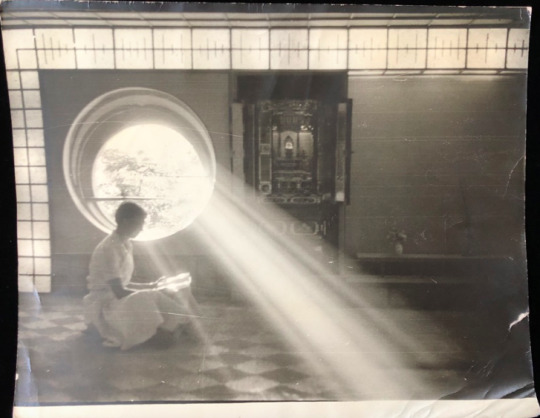
Elsa Gidlow in her shoji room.



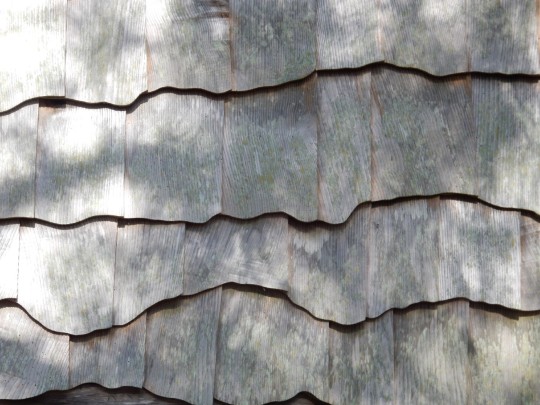


Gidlow and Watts in the gardens of Druid Heights.


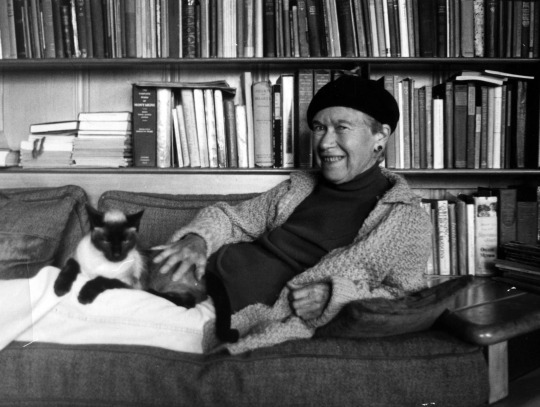
Gidlow in her bedroom surrounded by her books.

8 notes
·
View notes